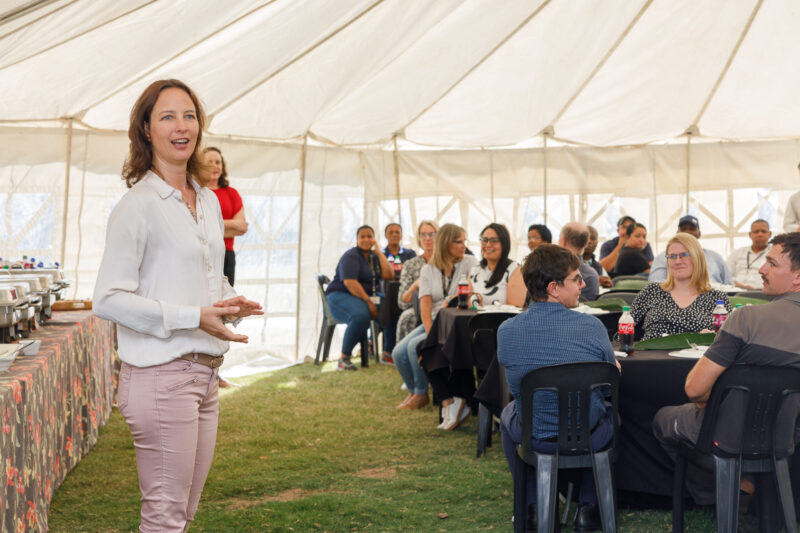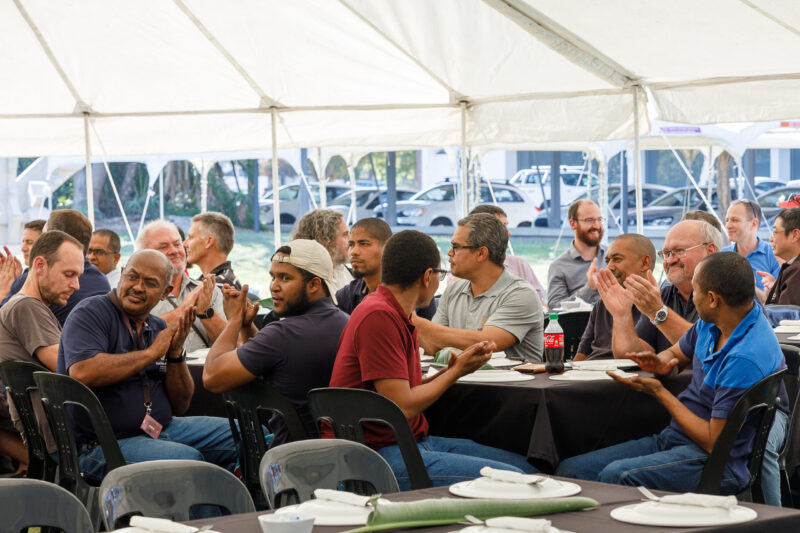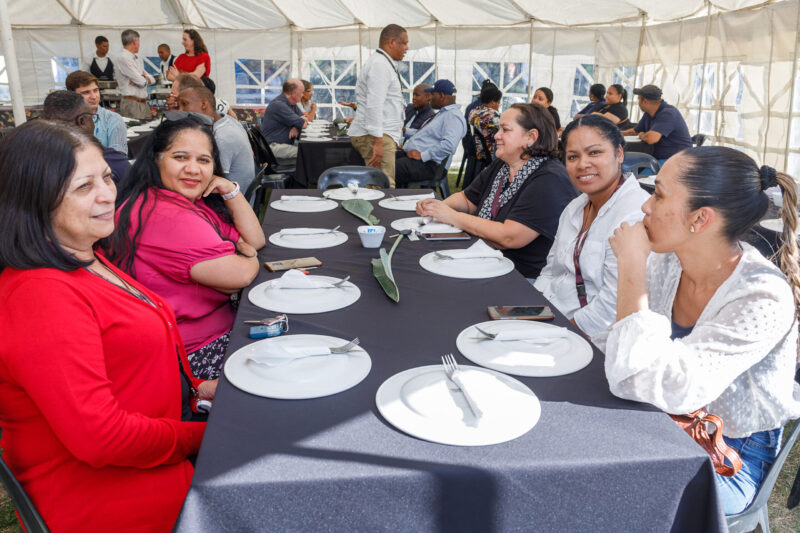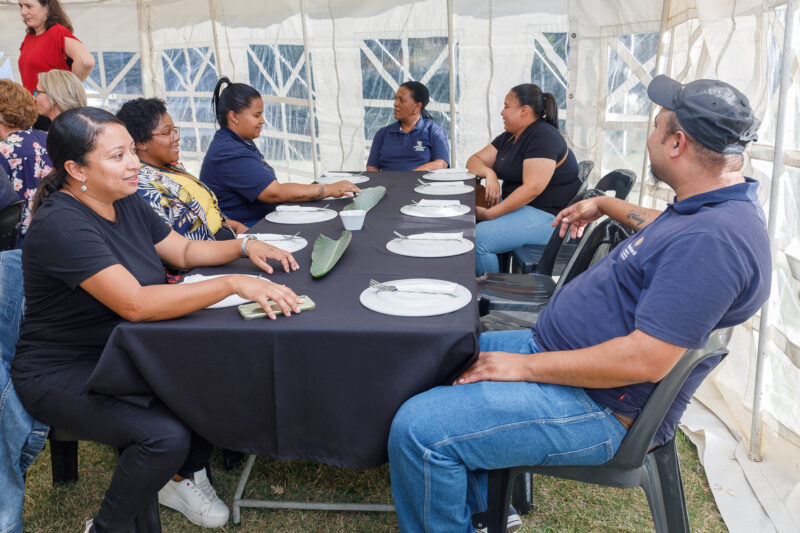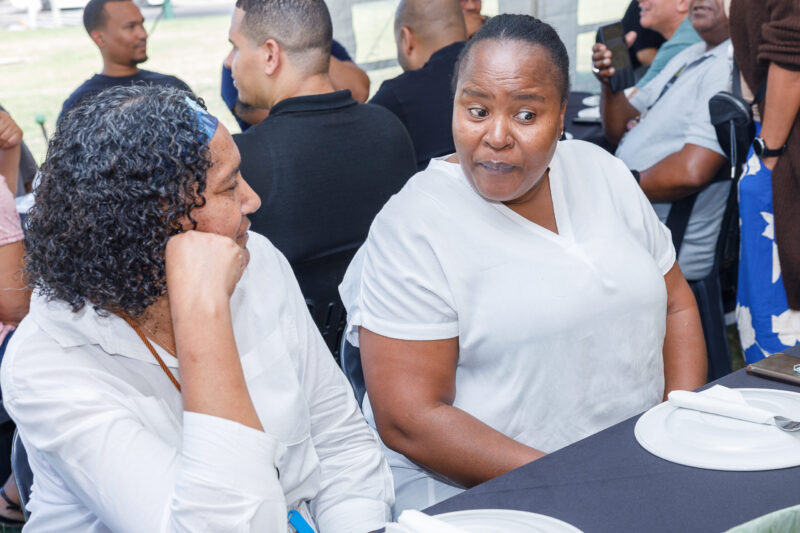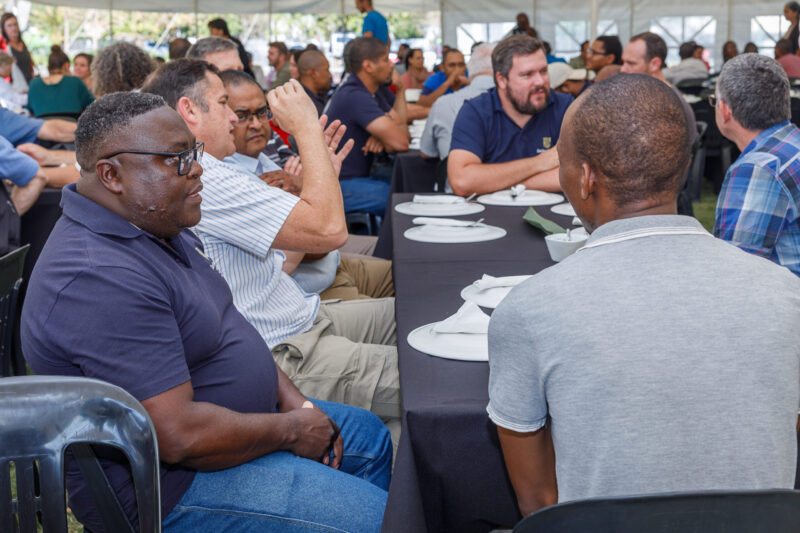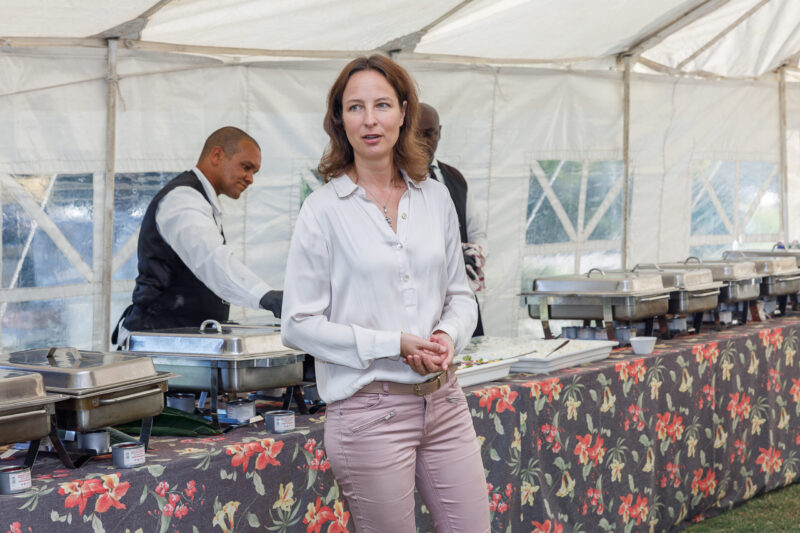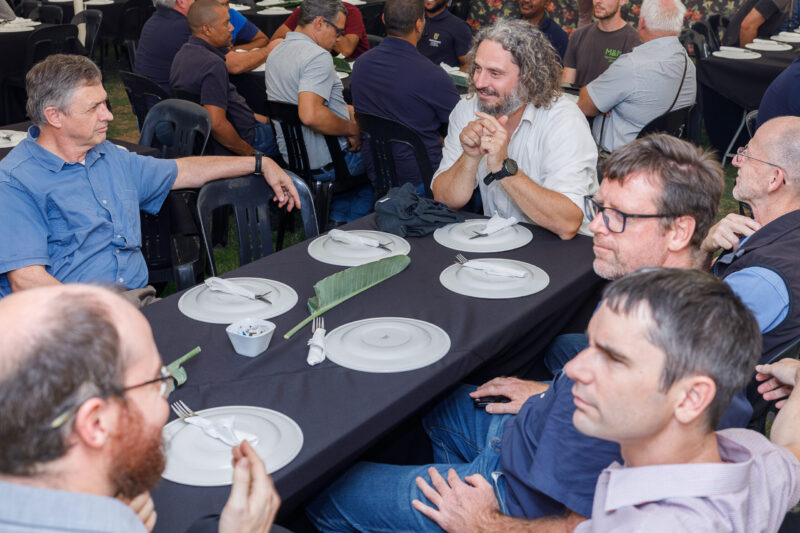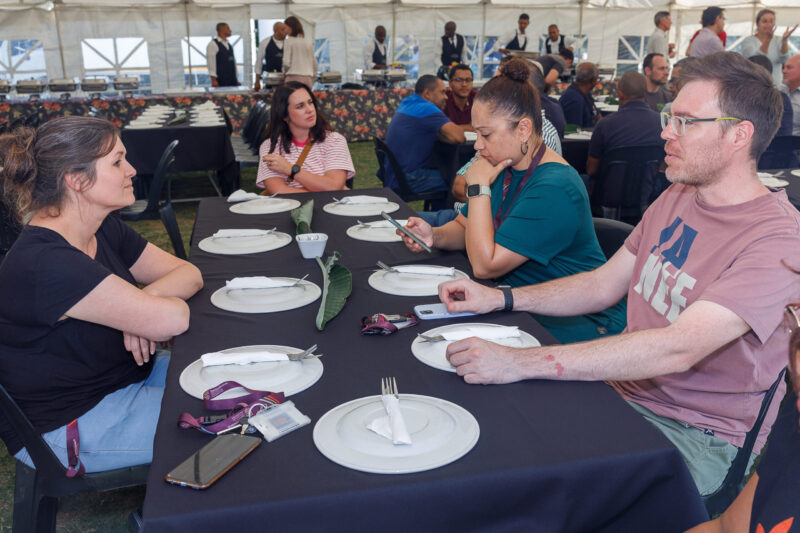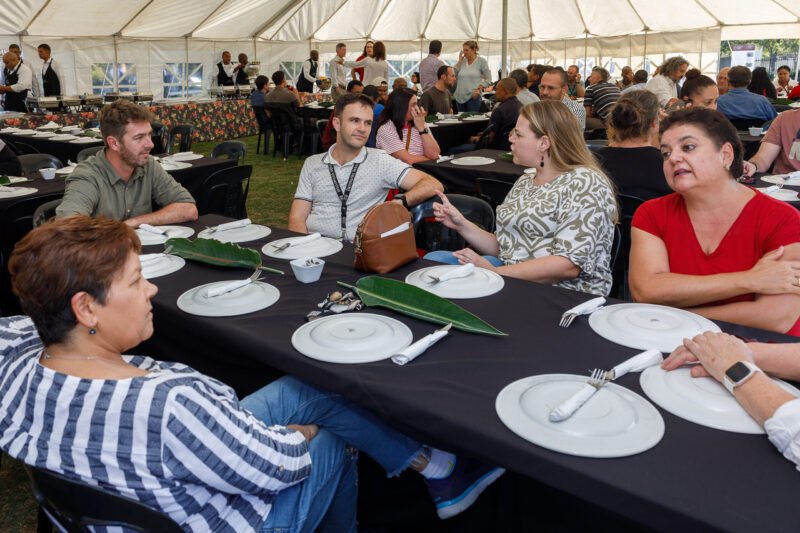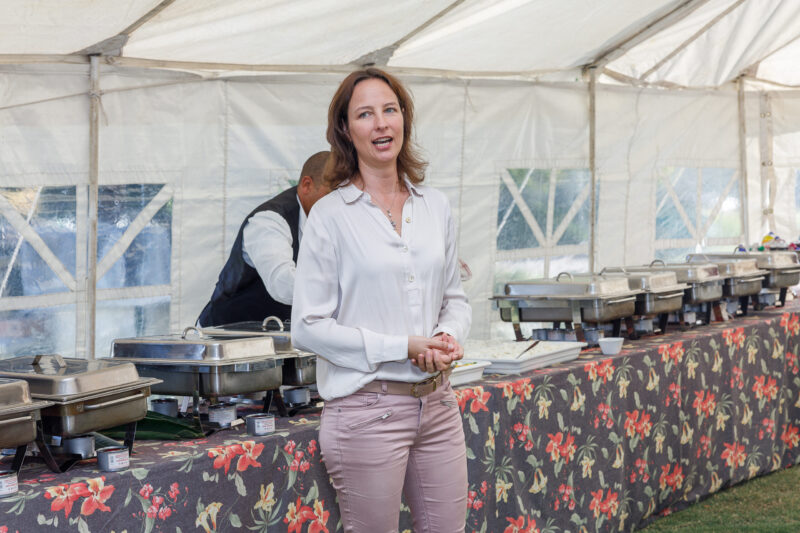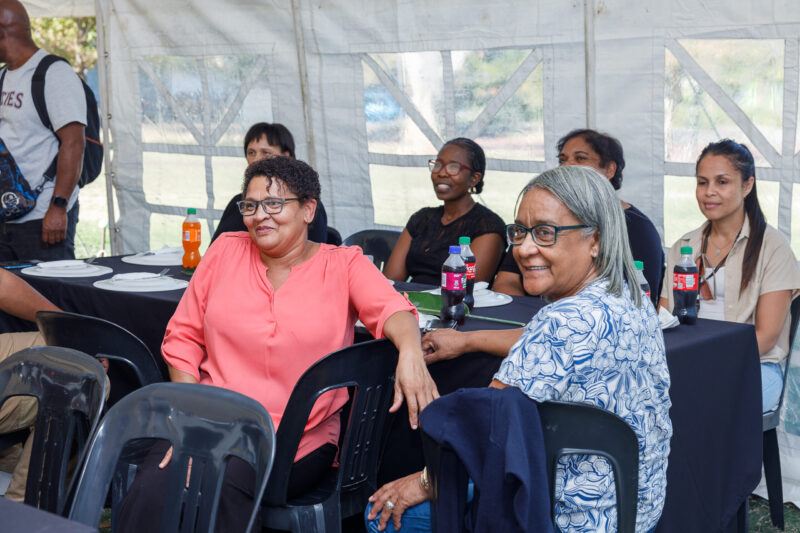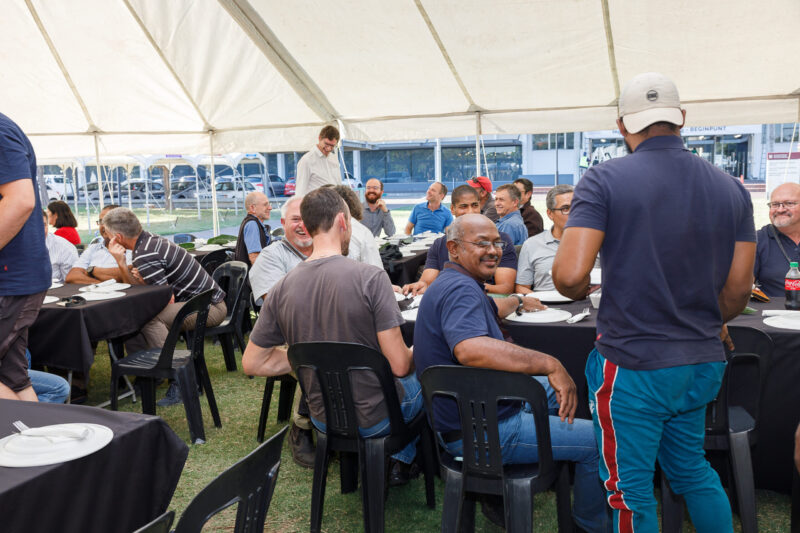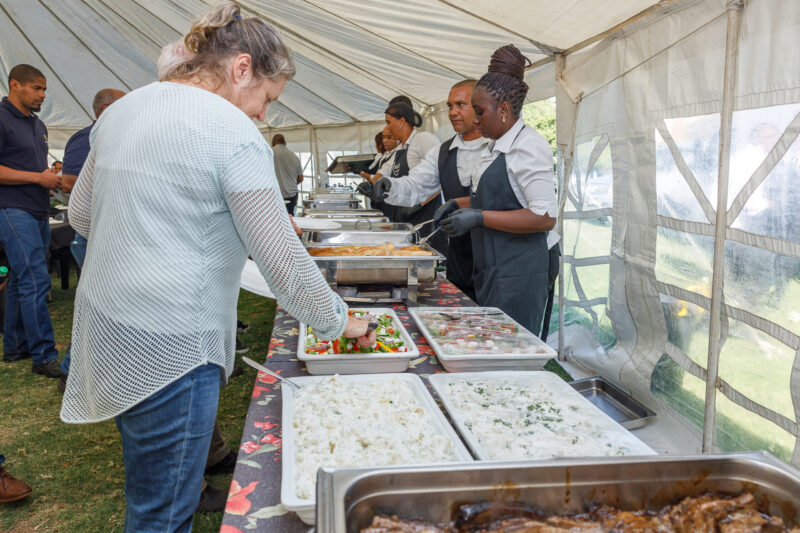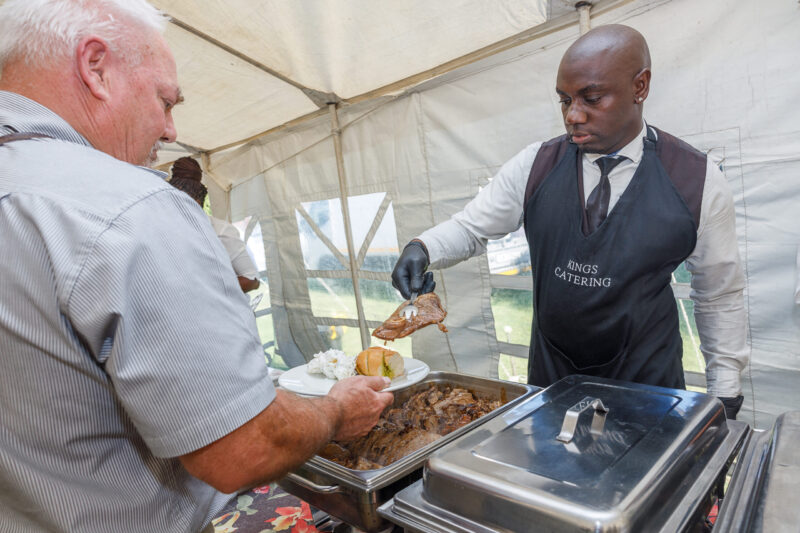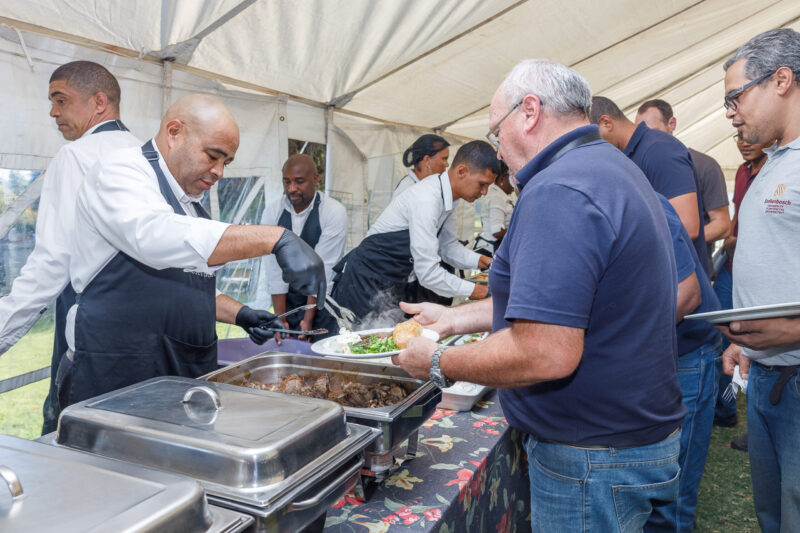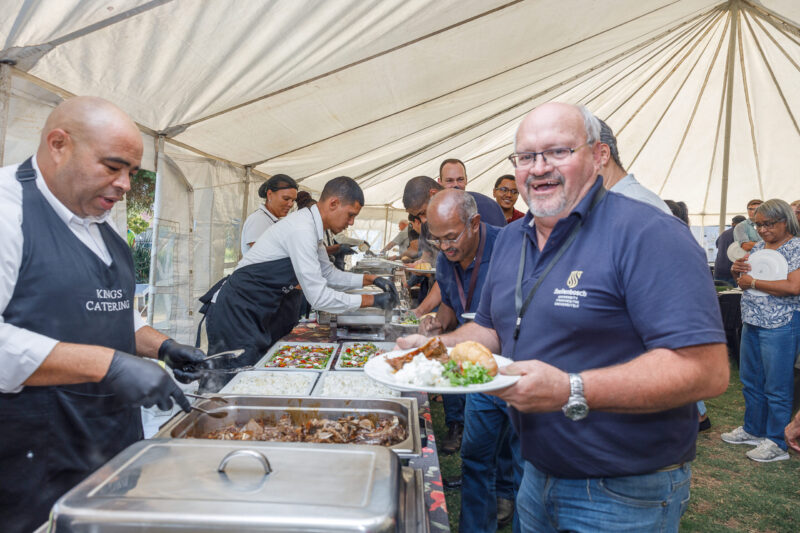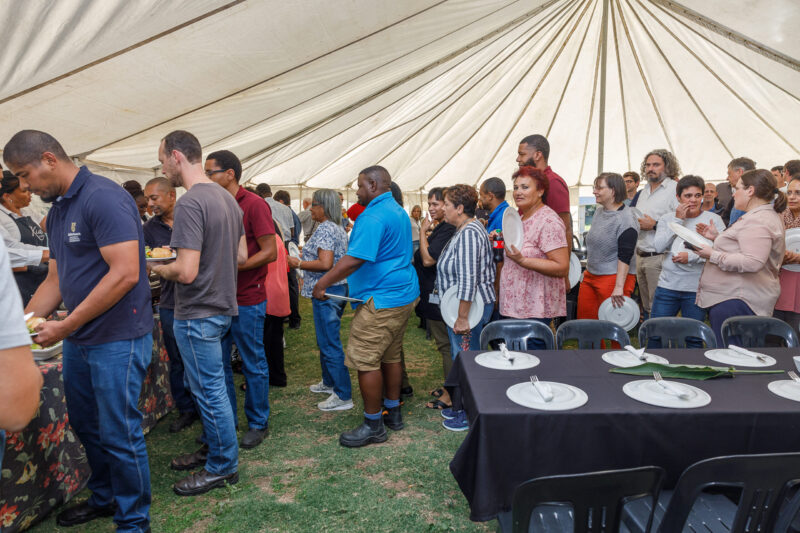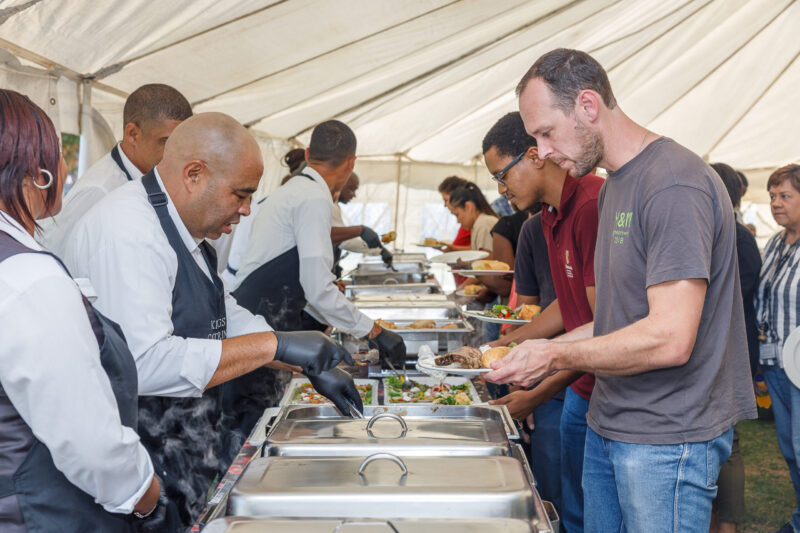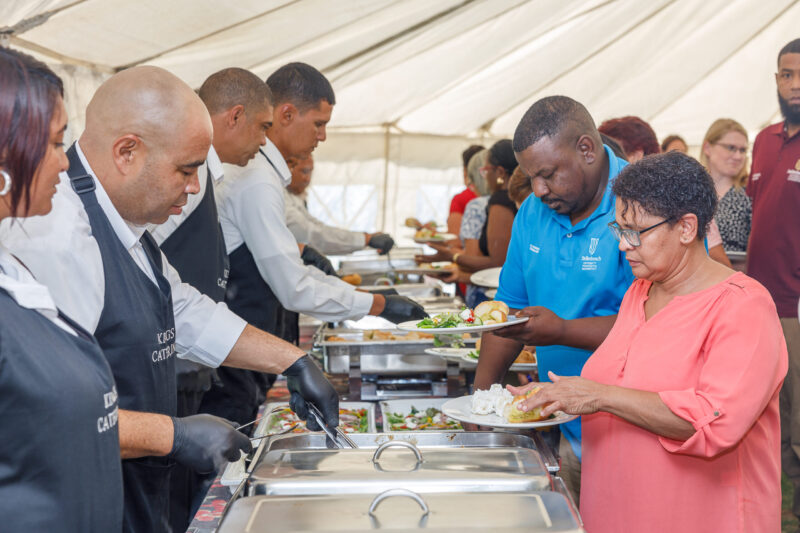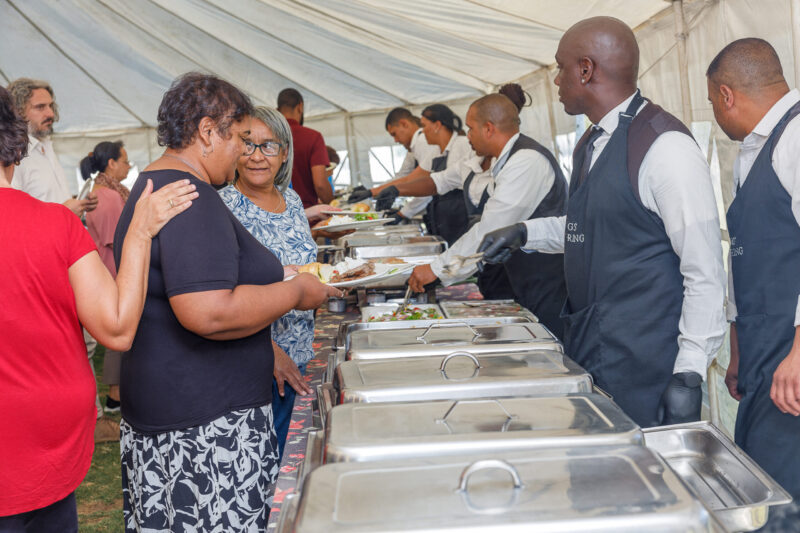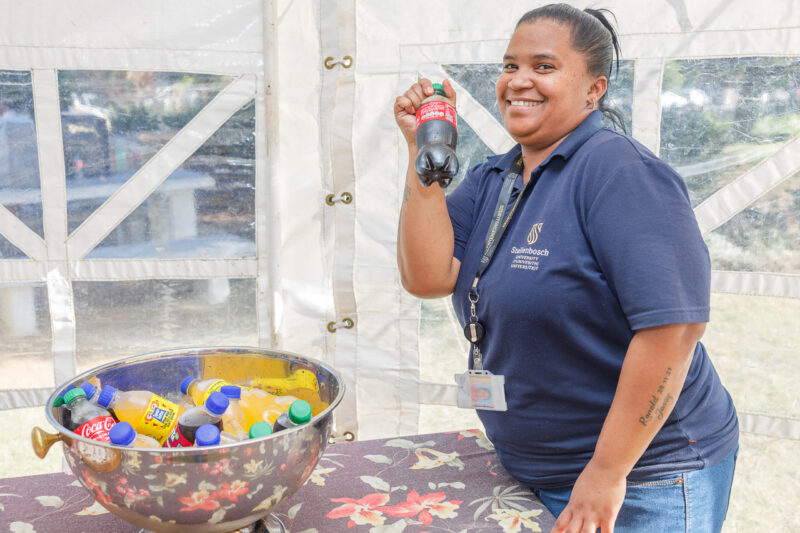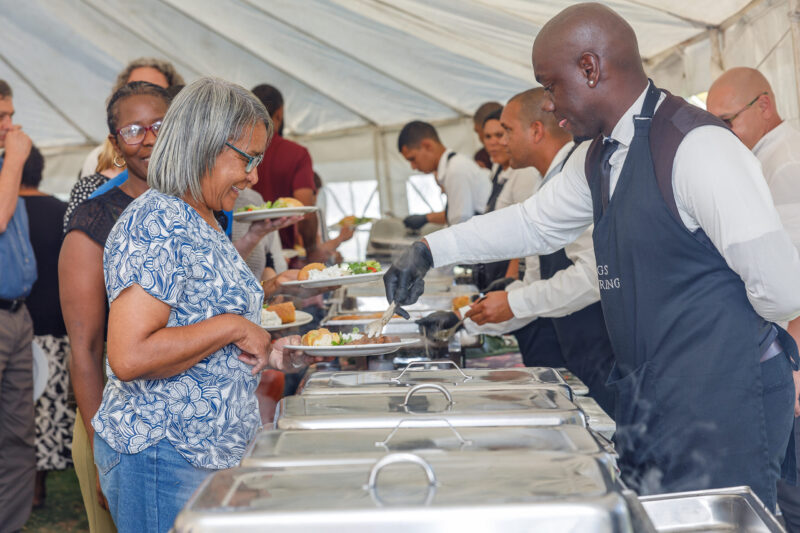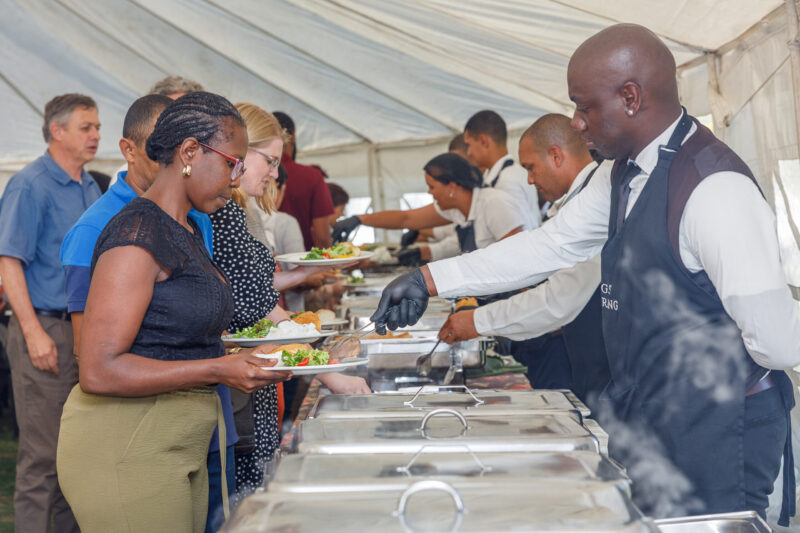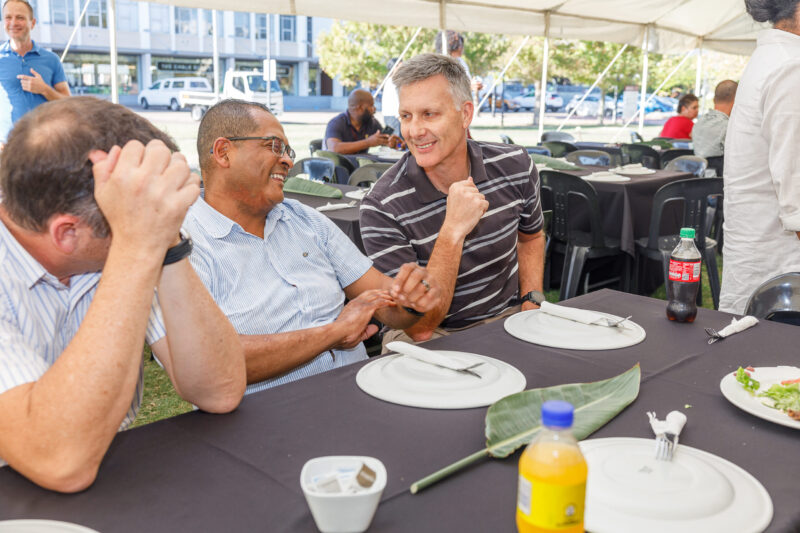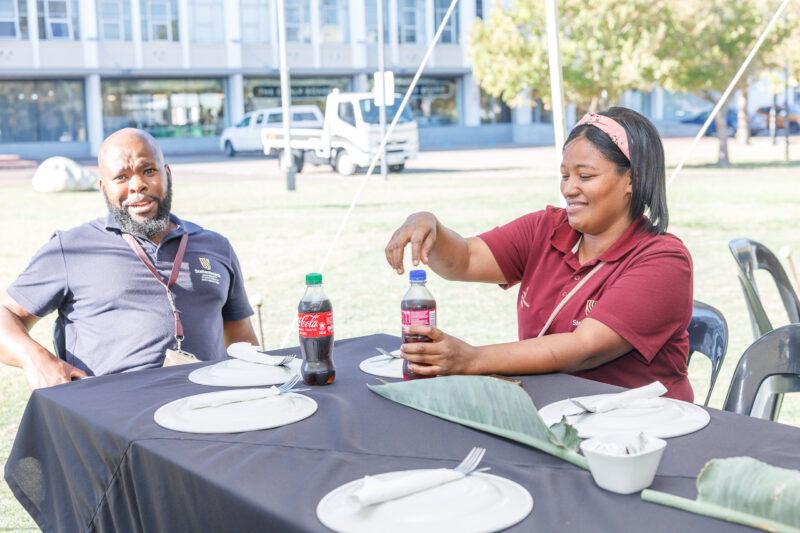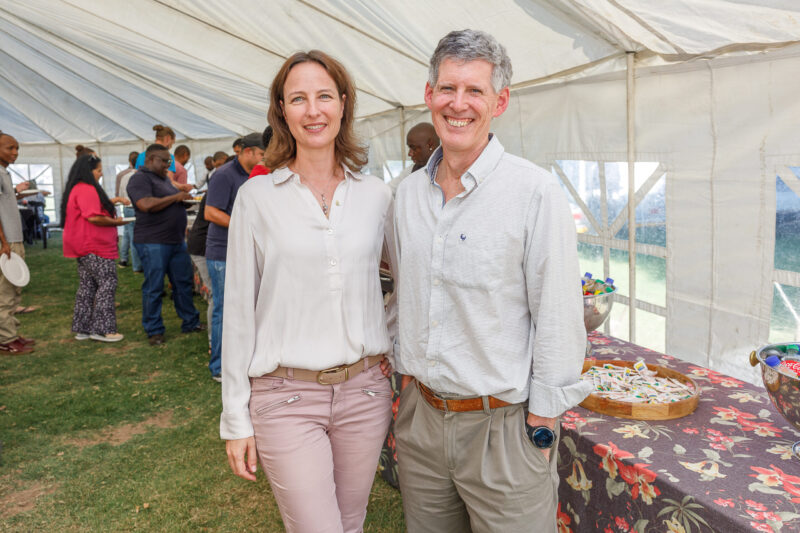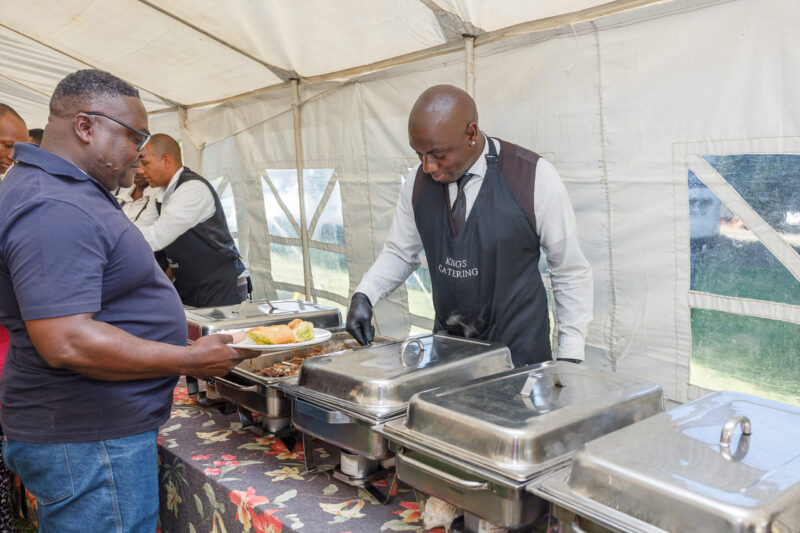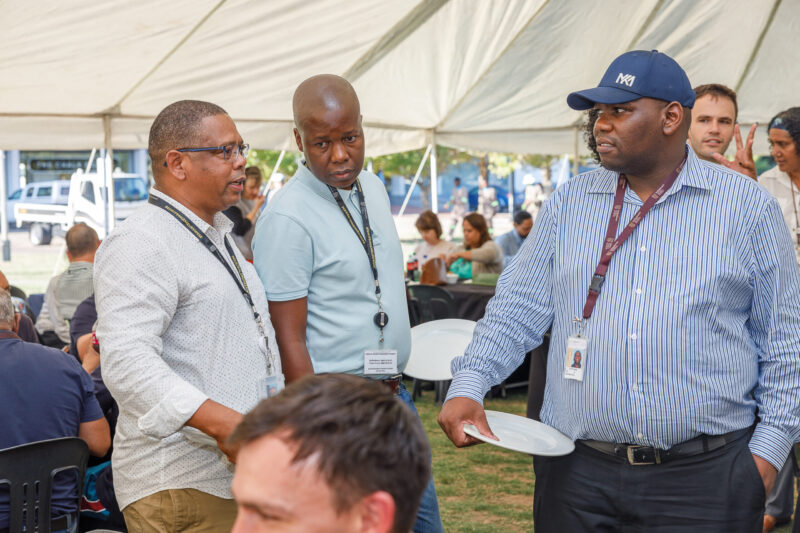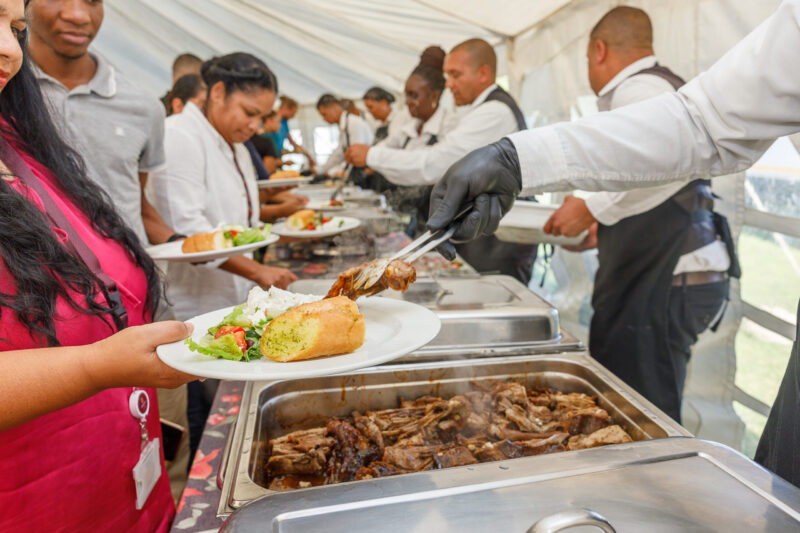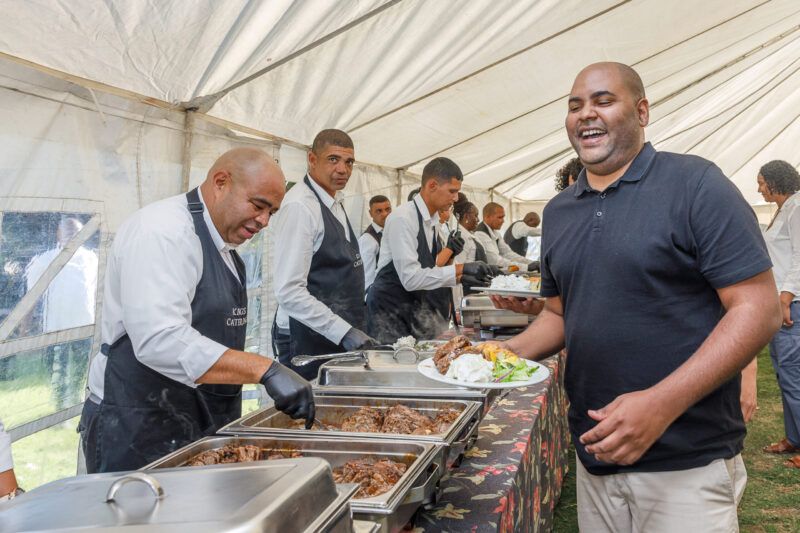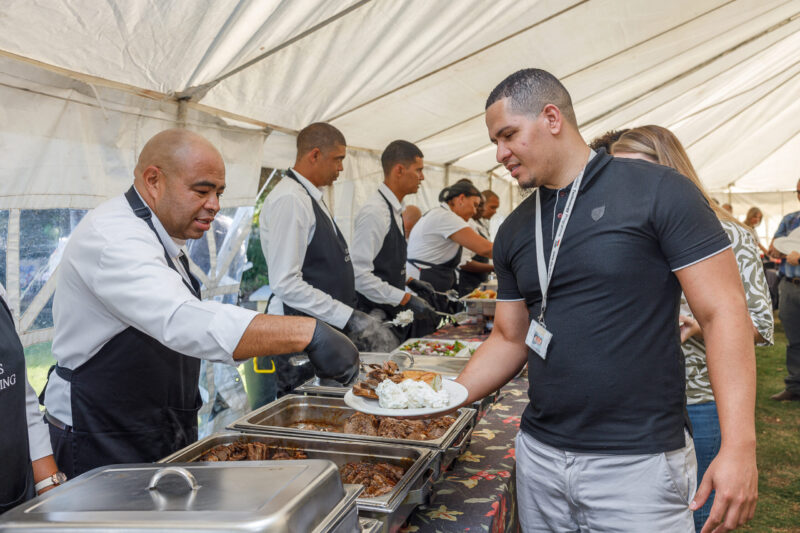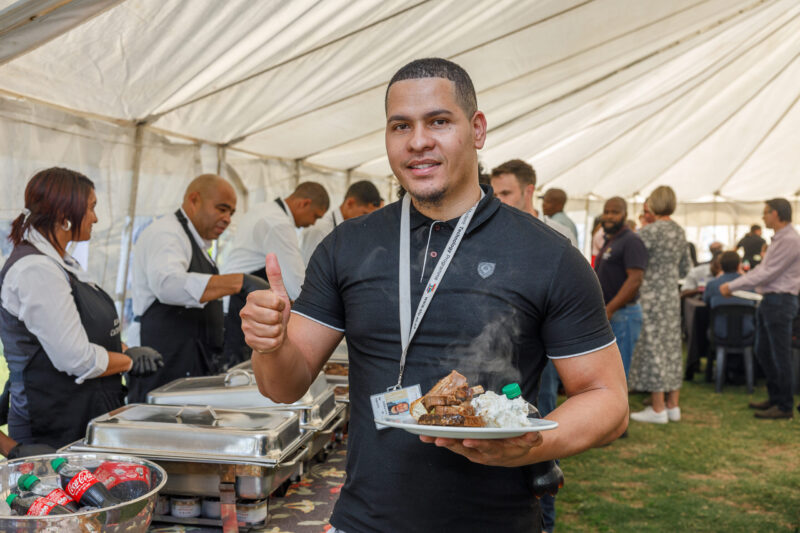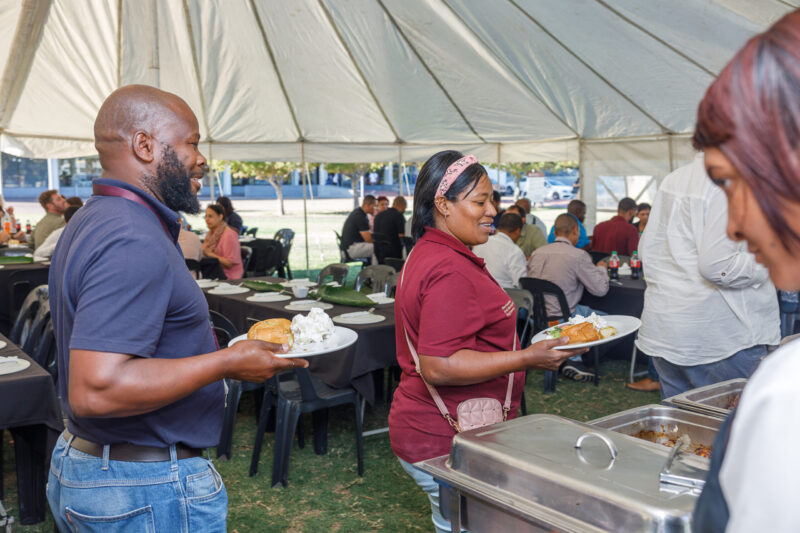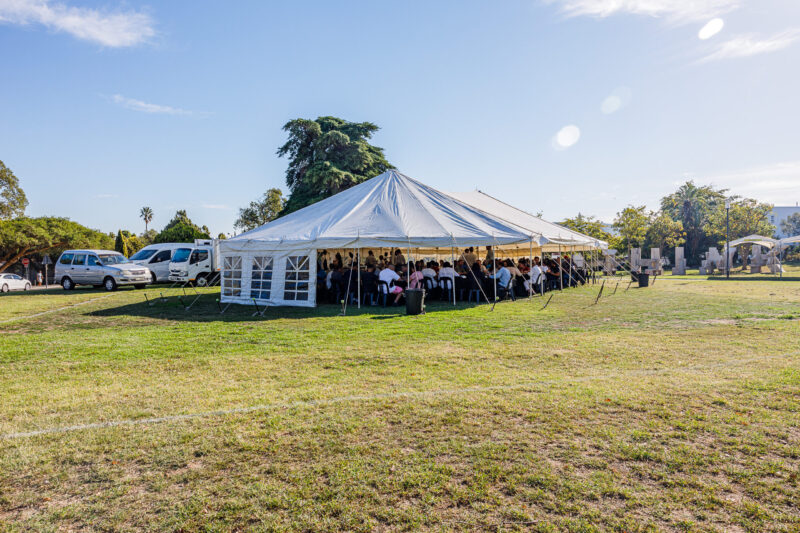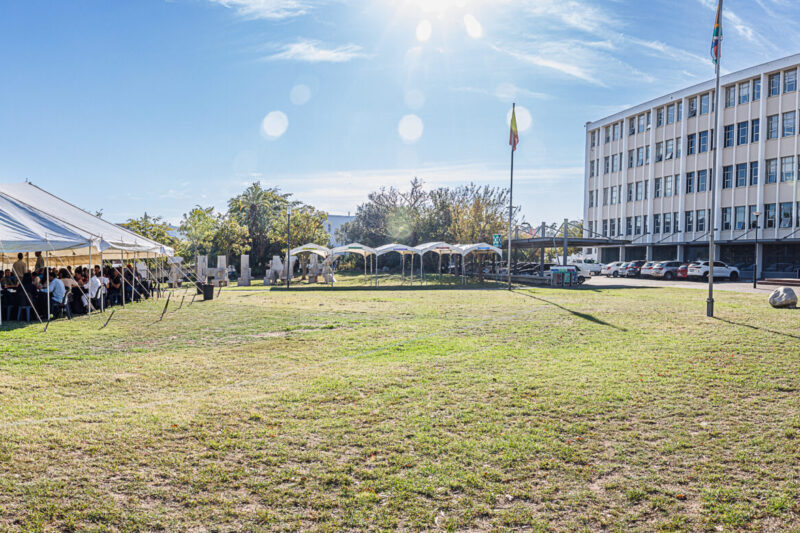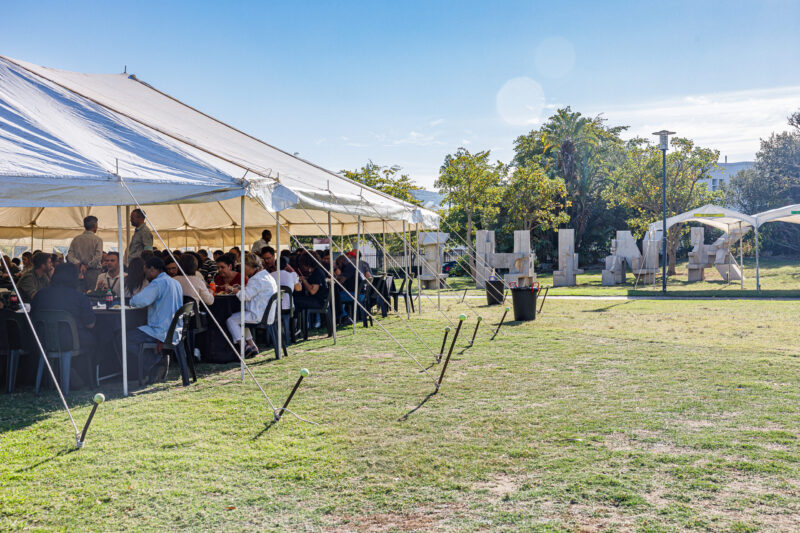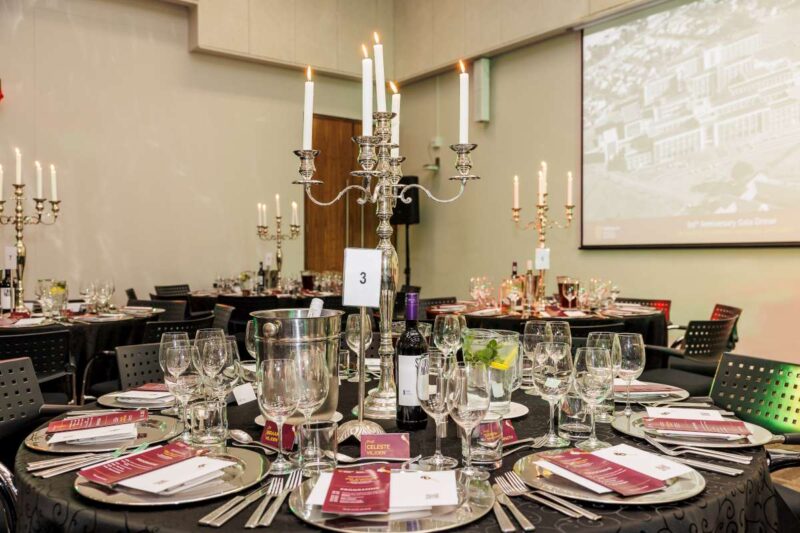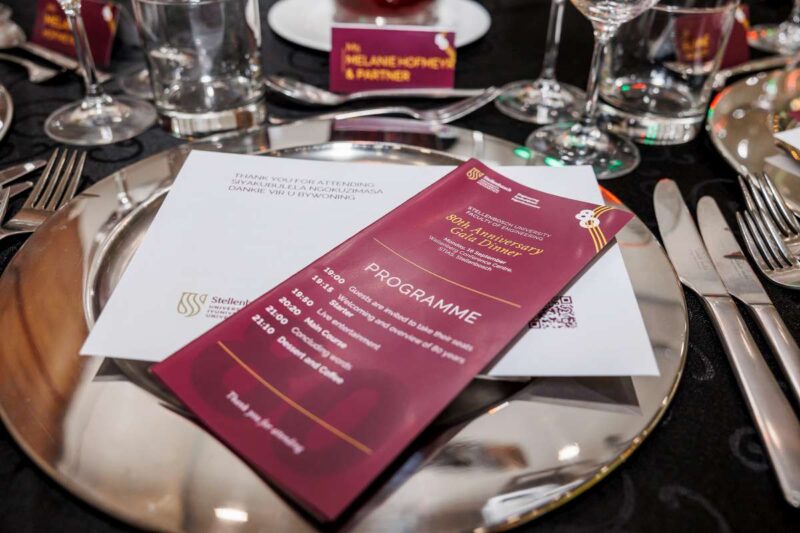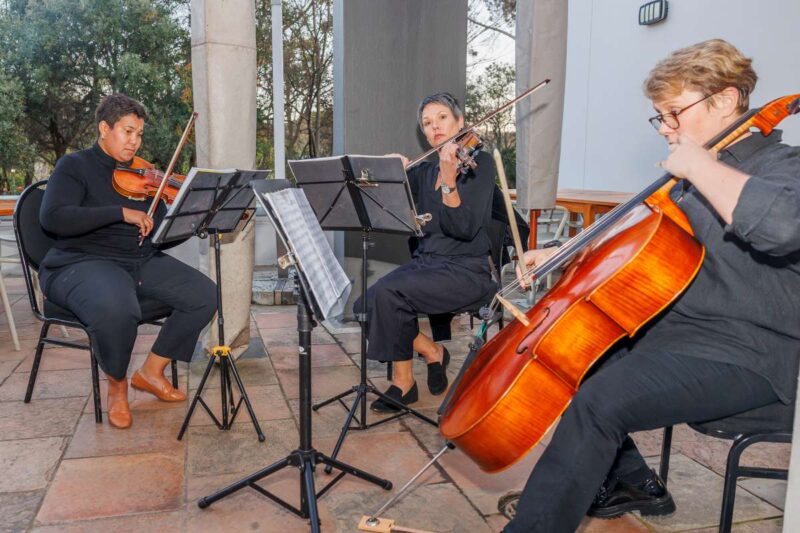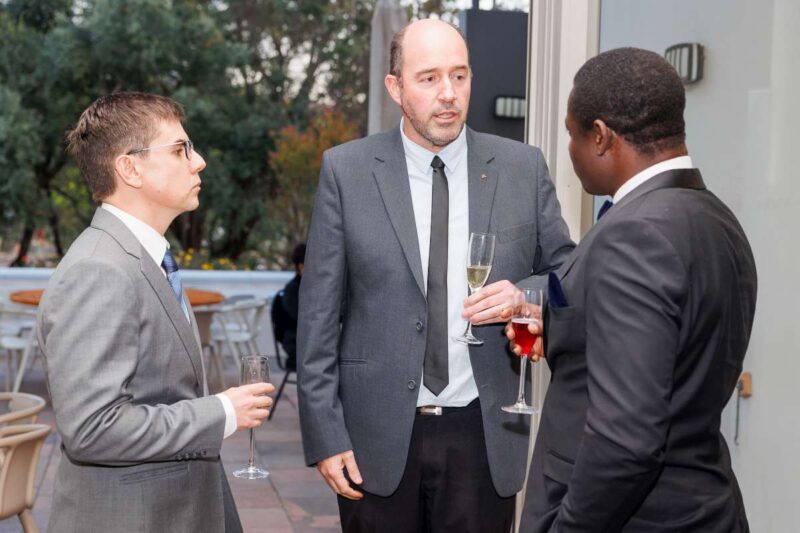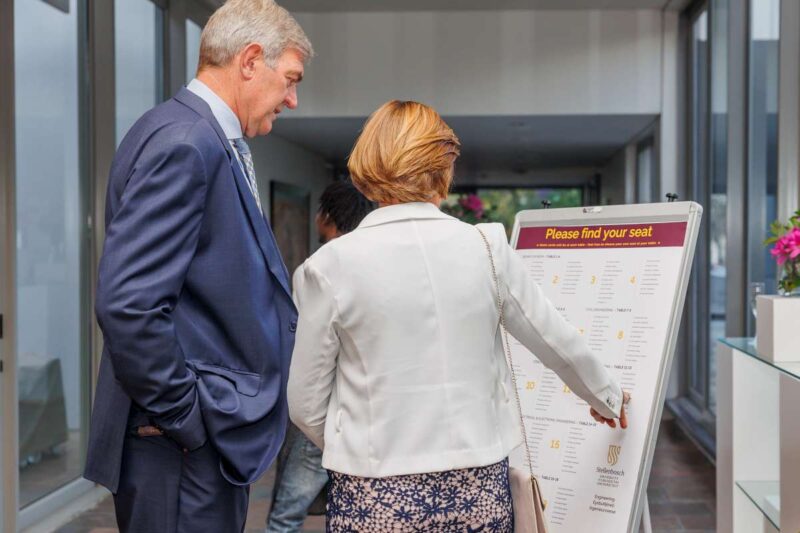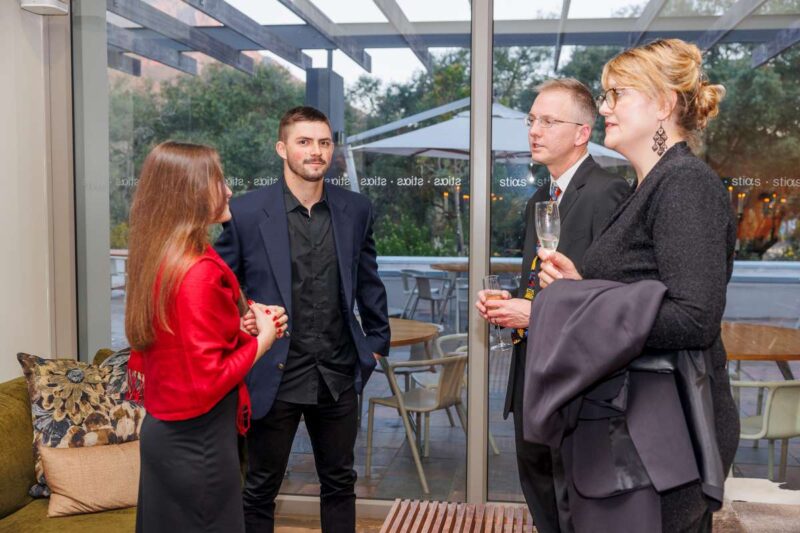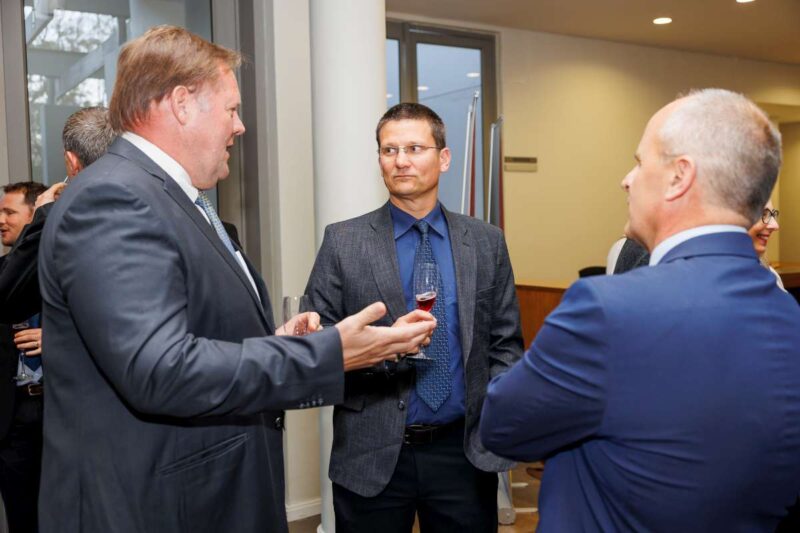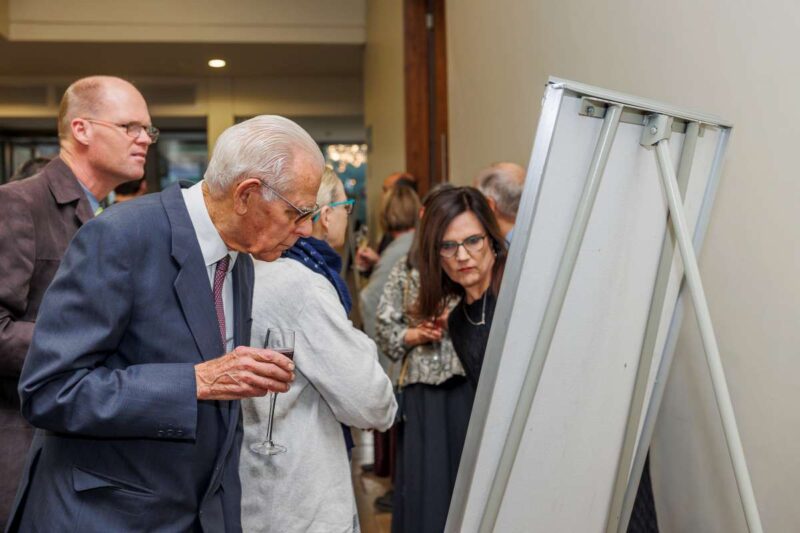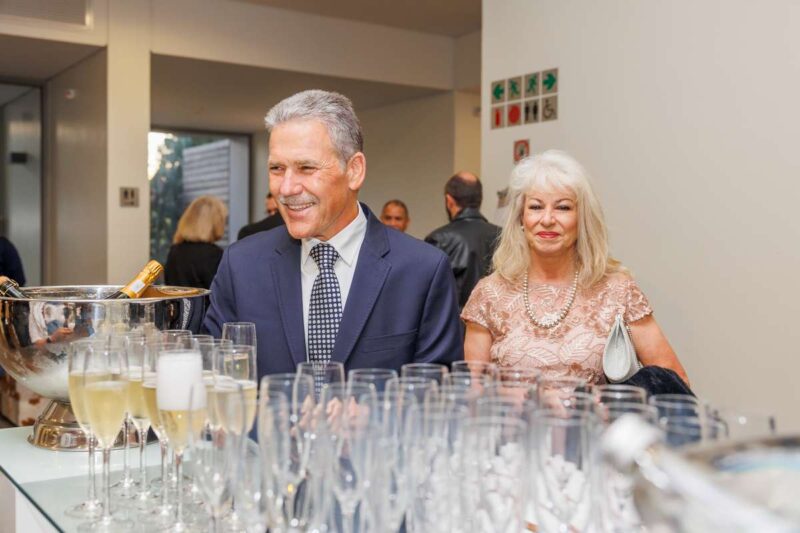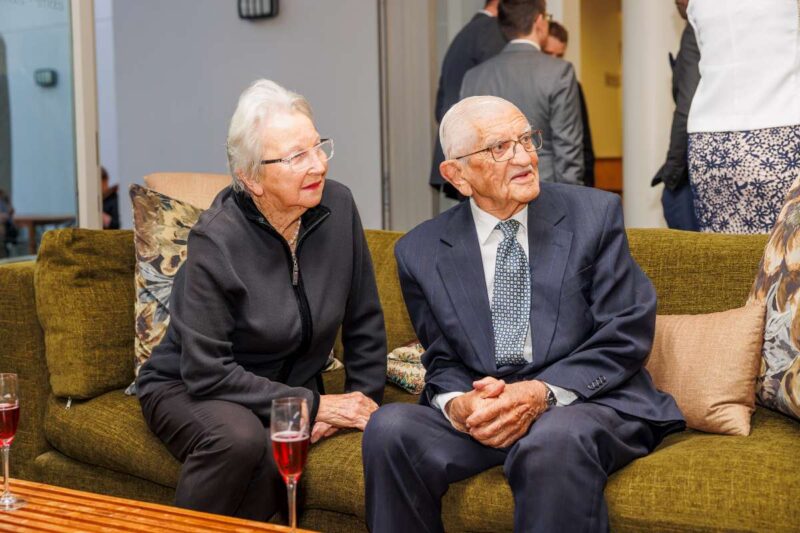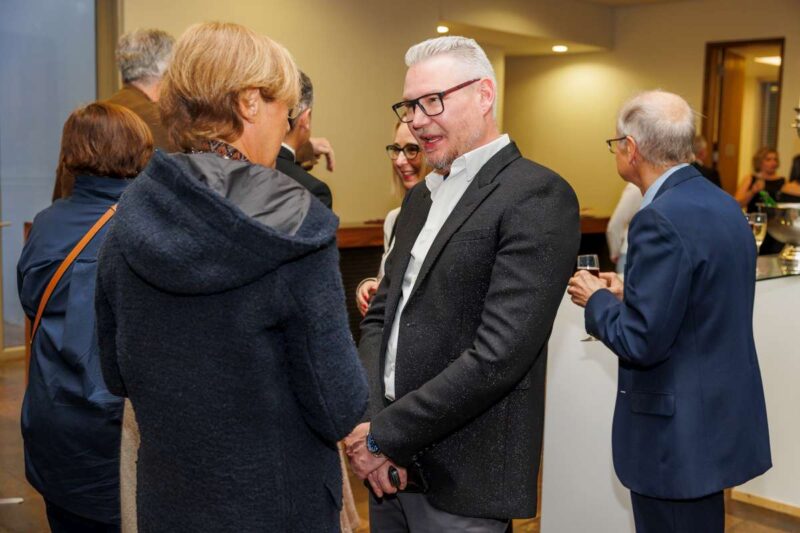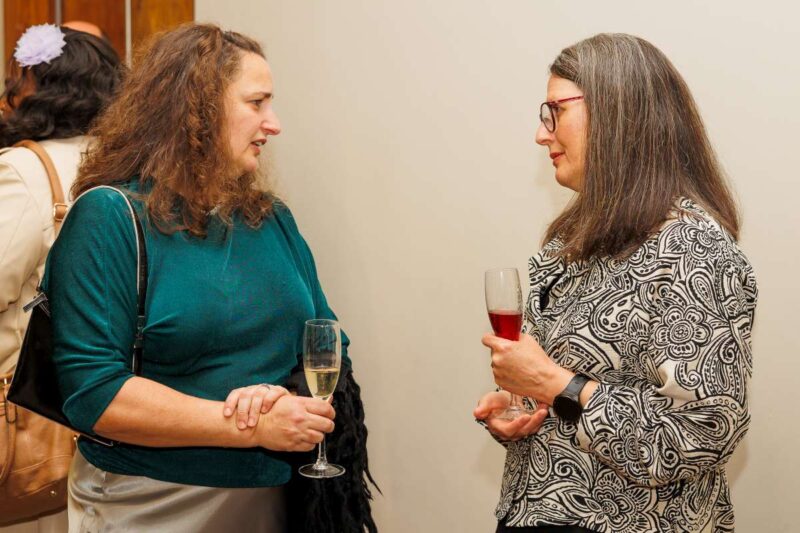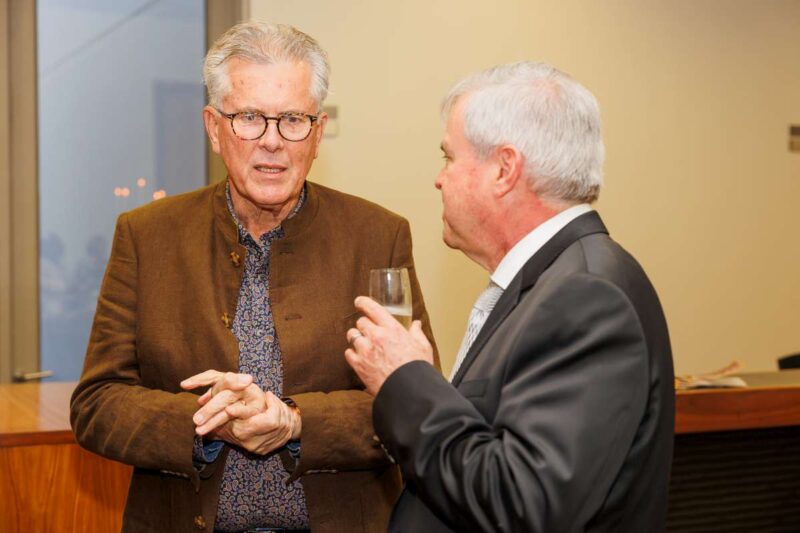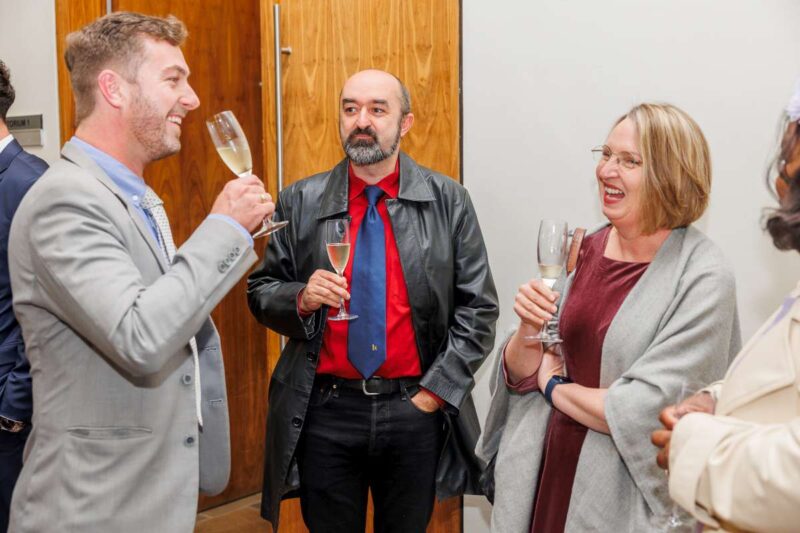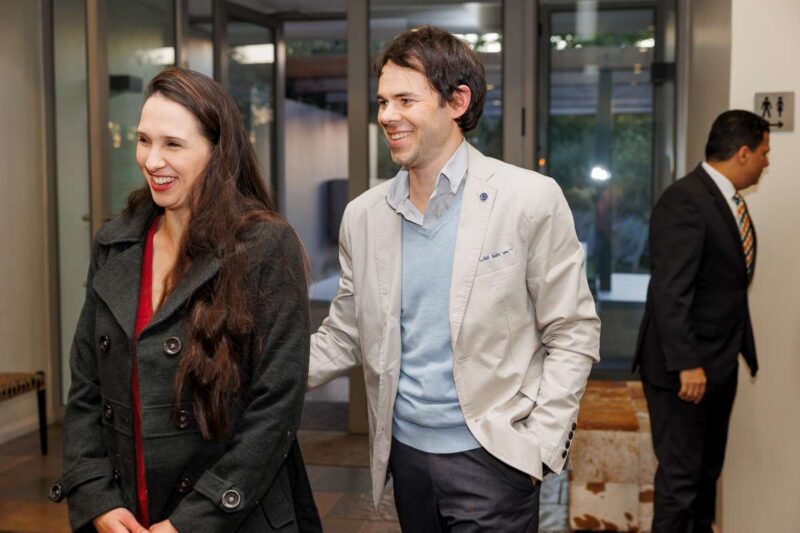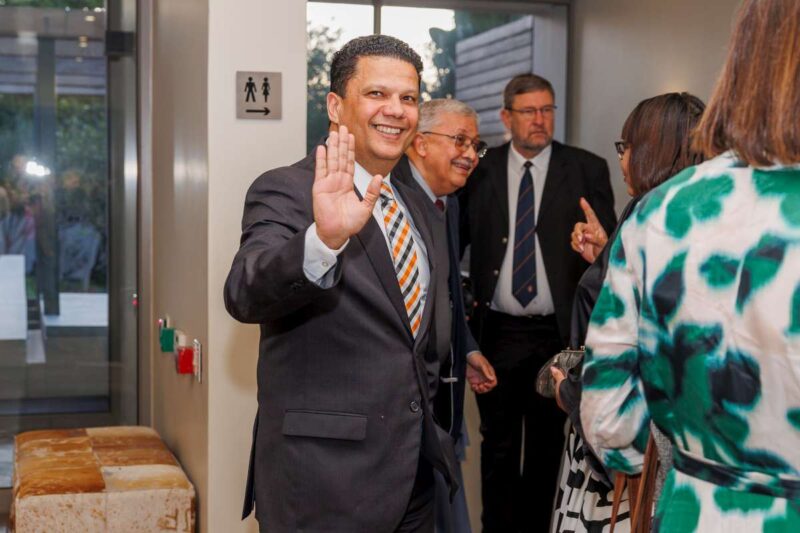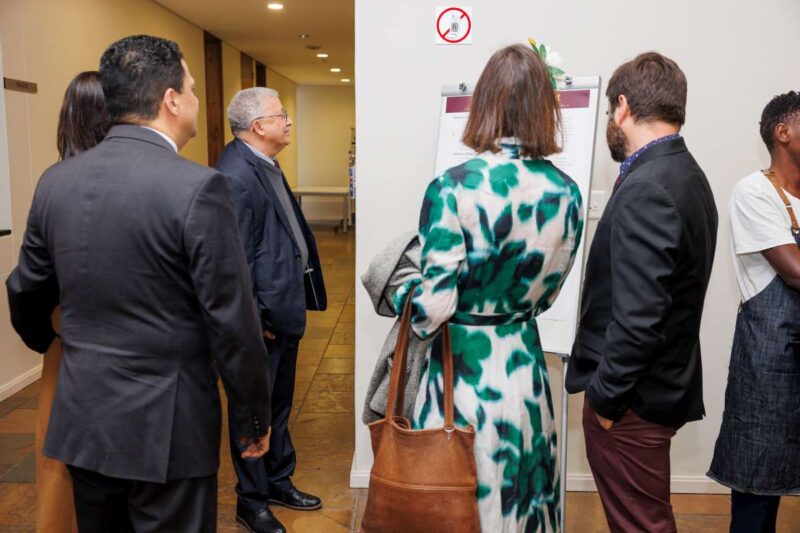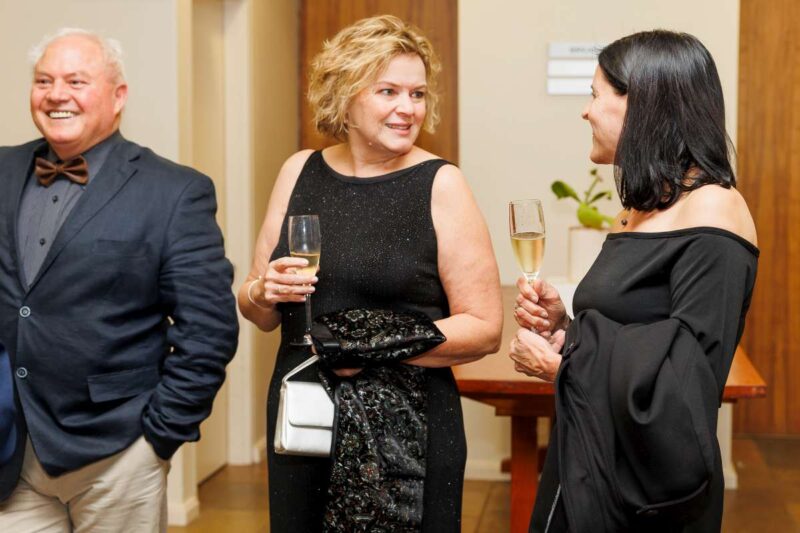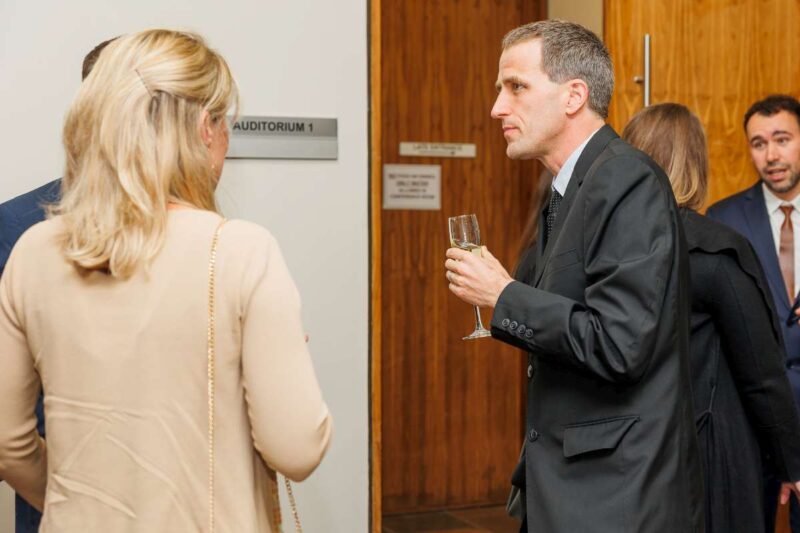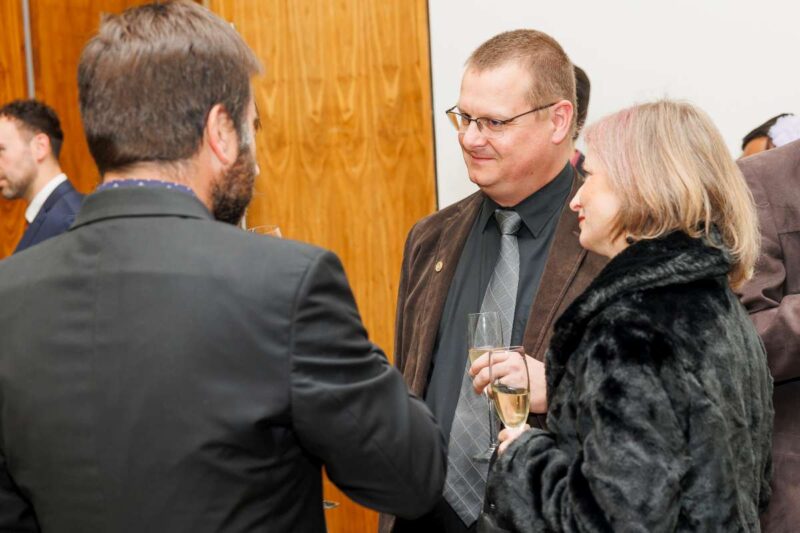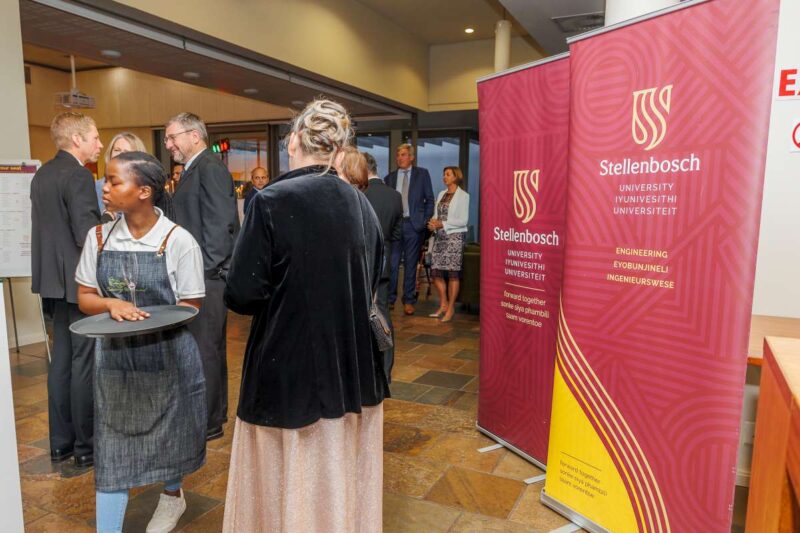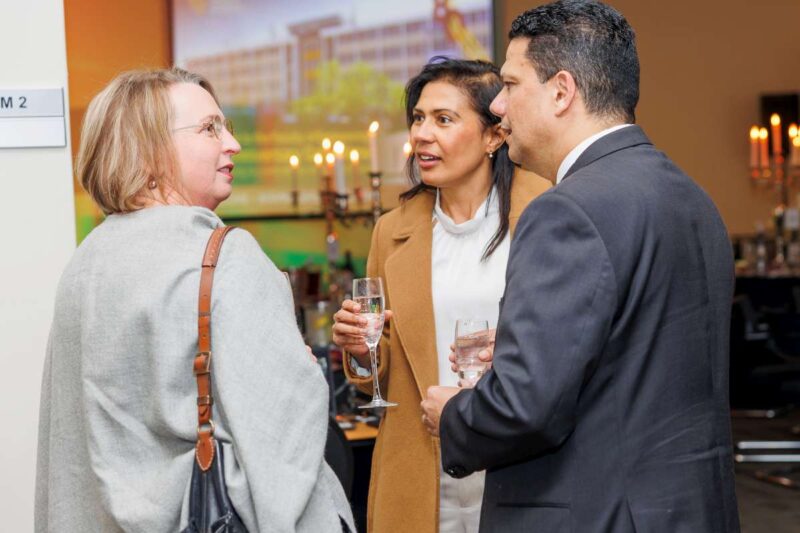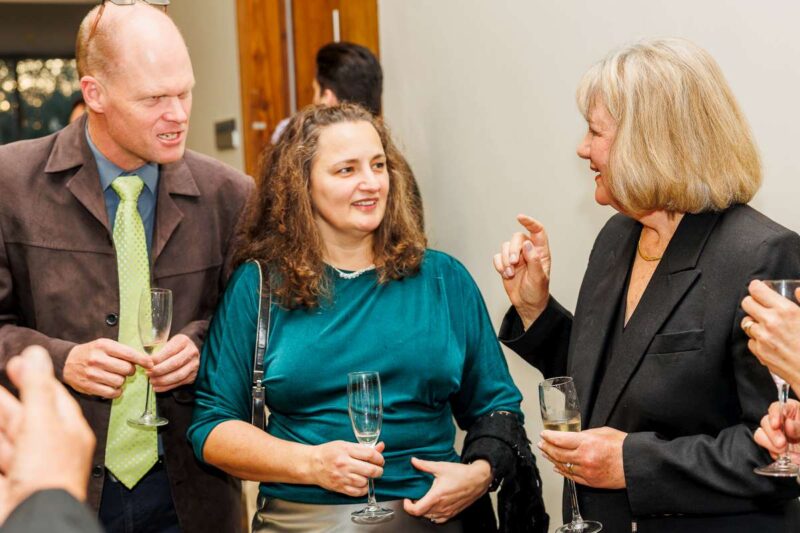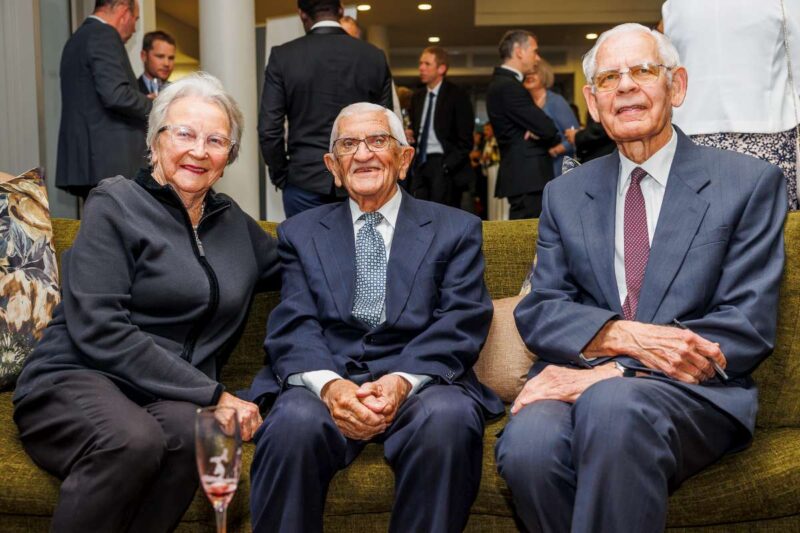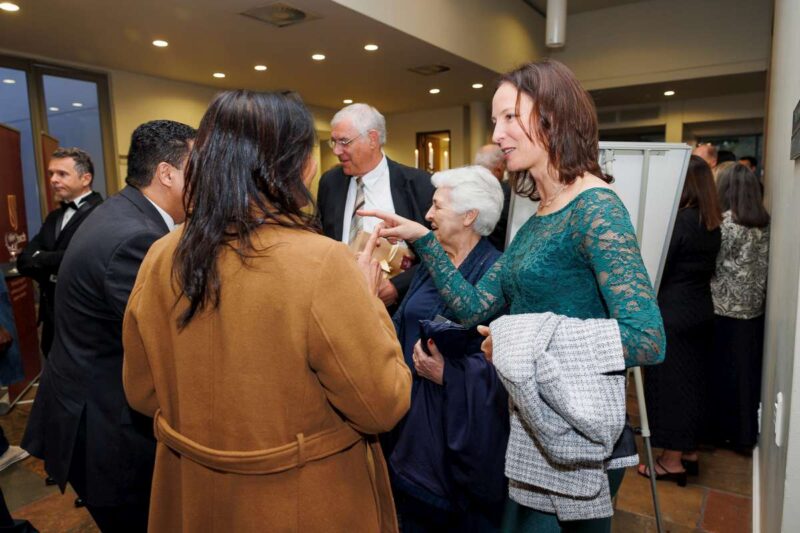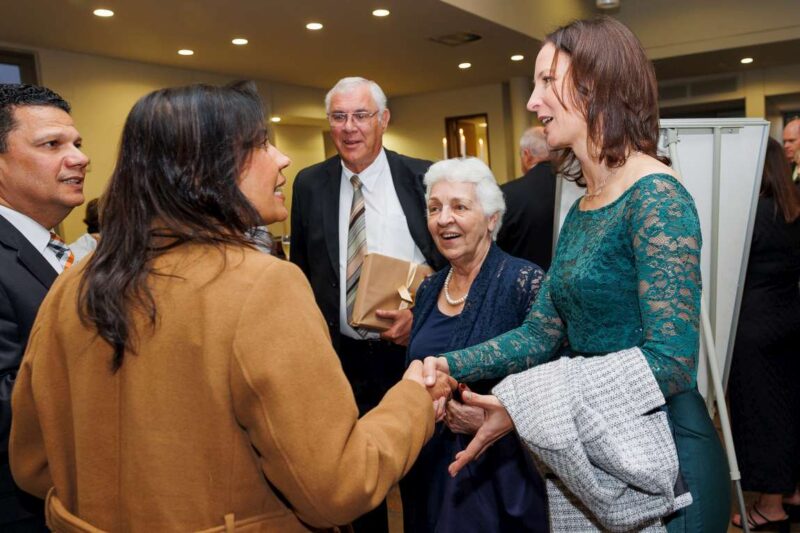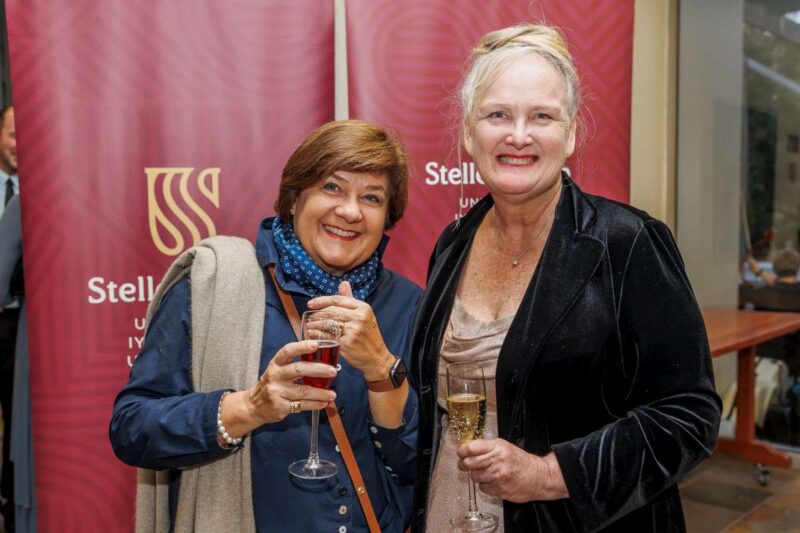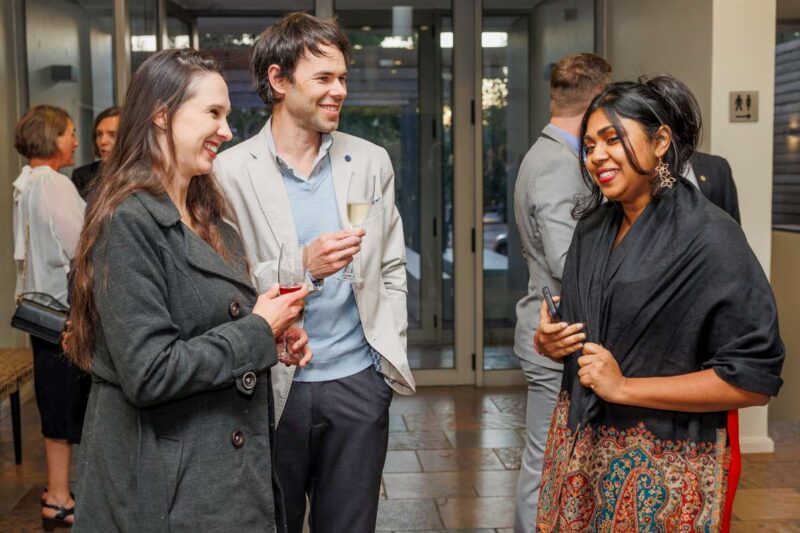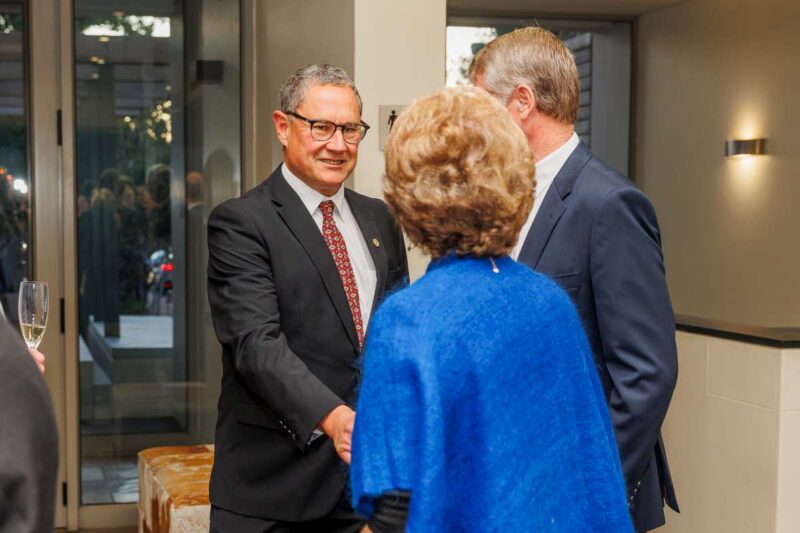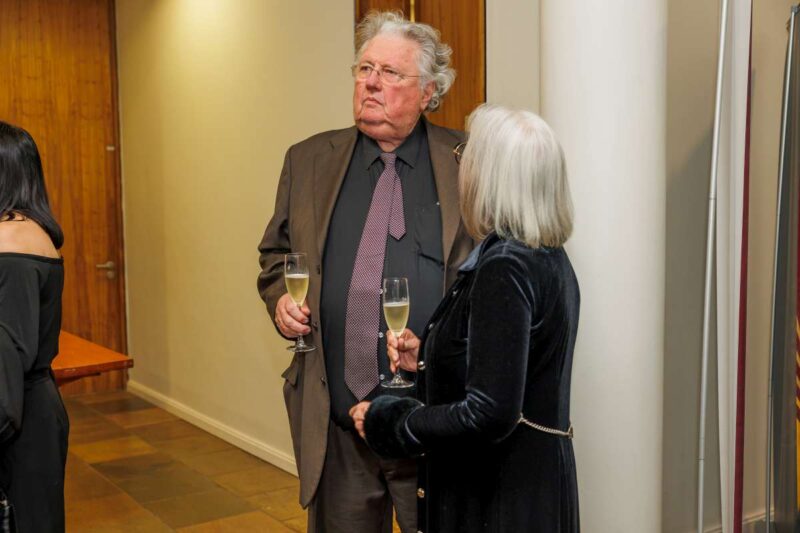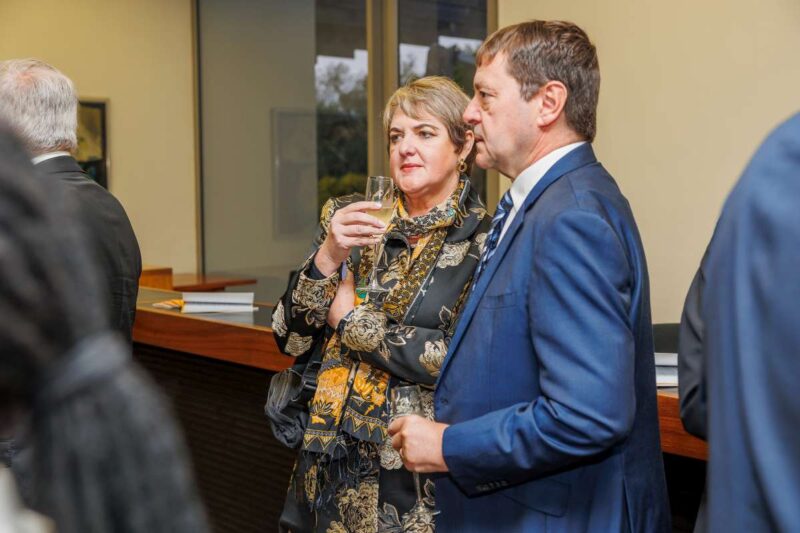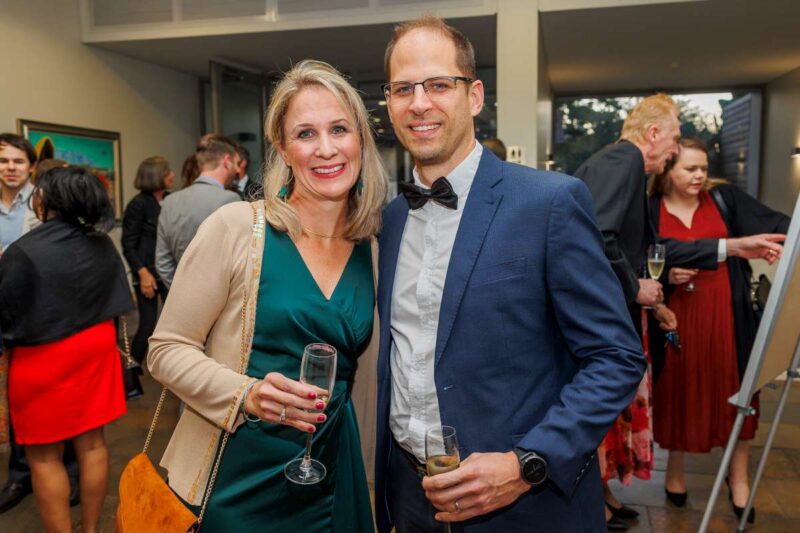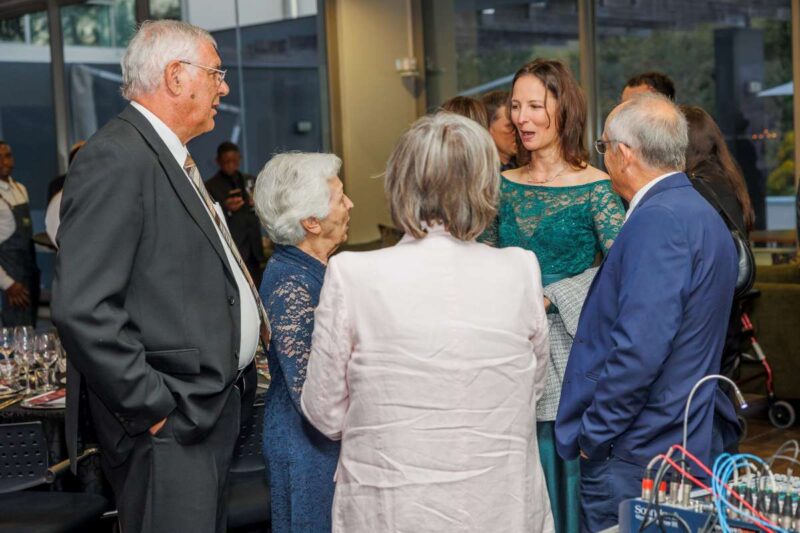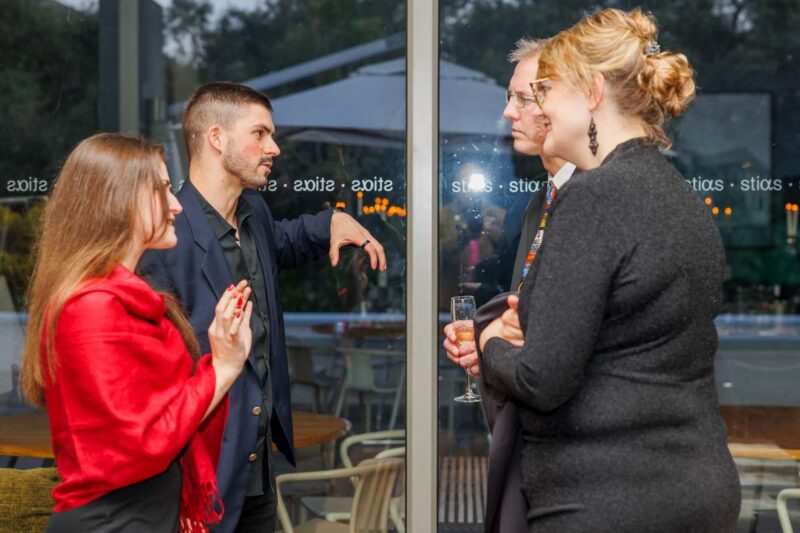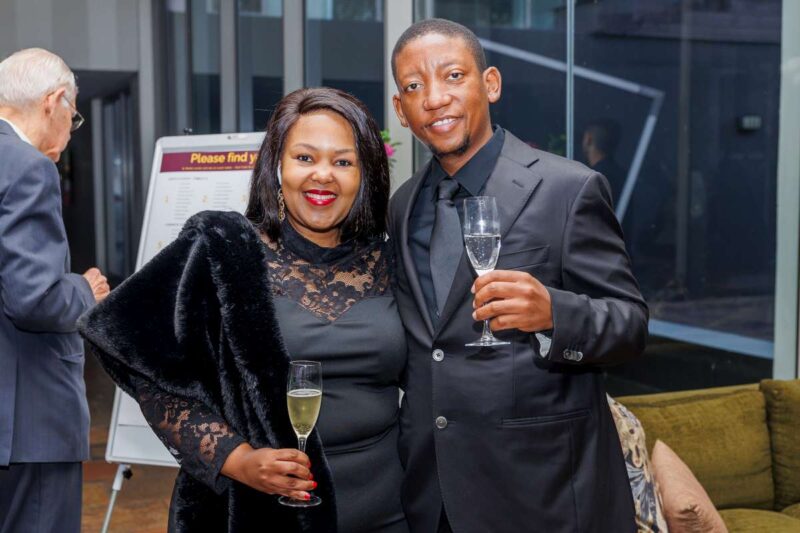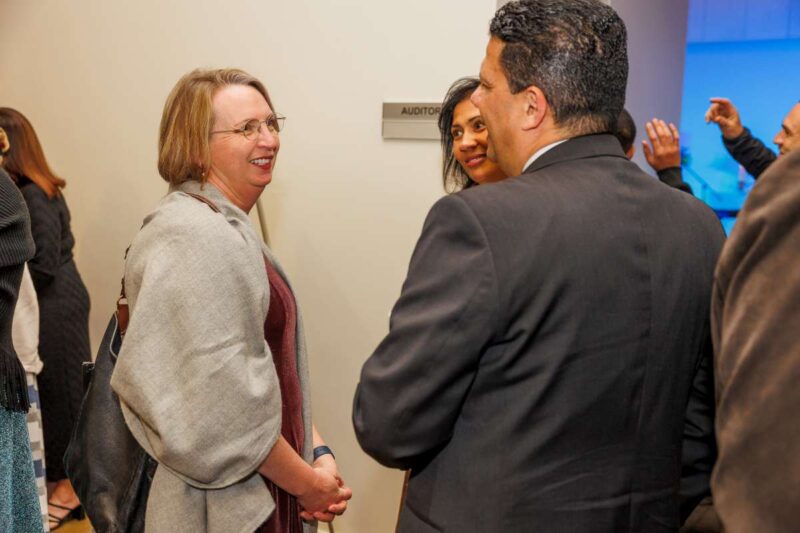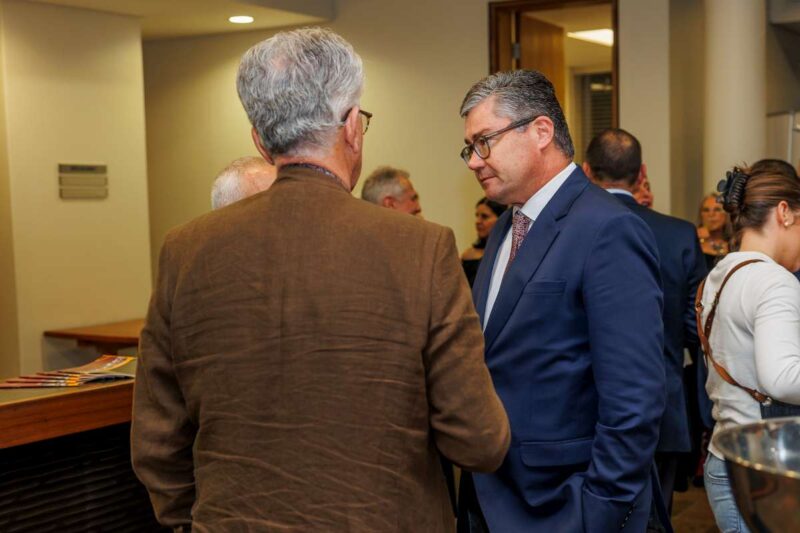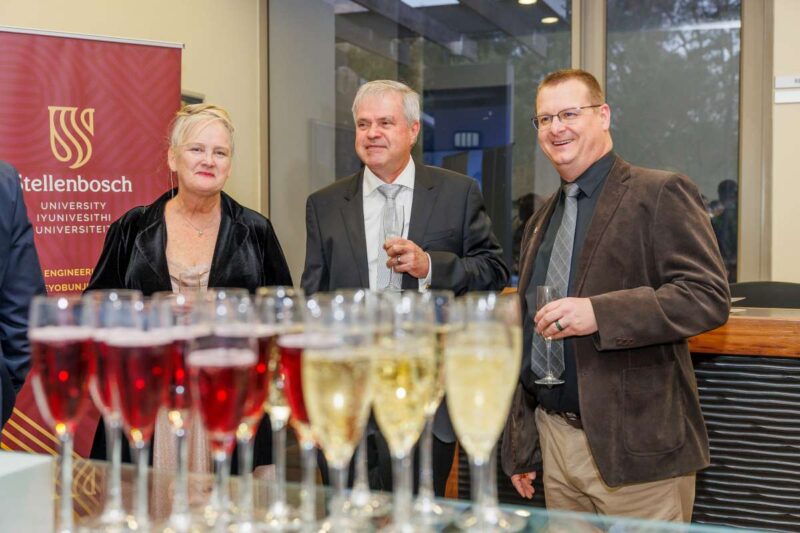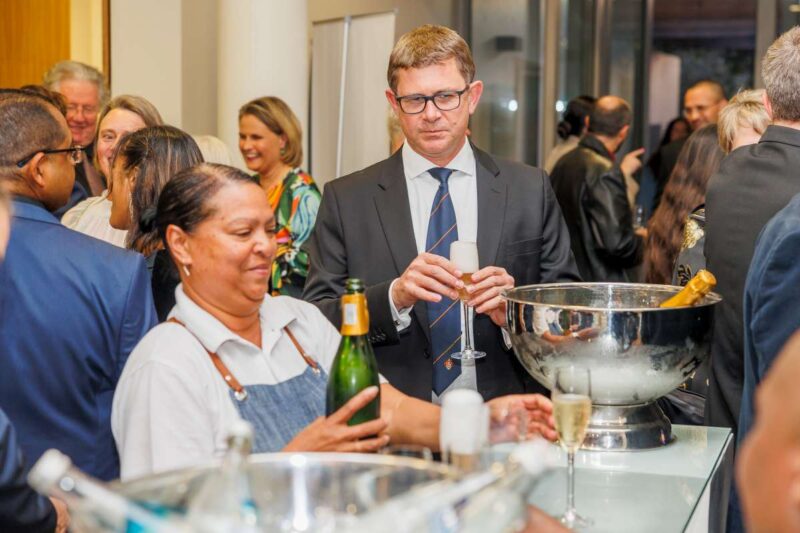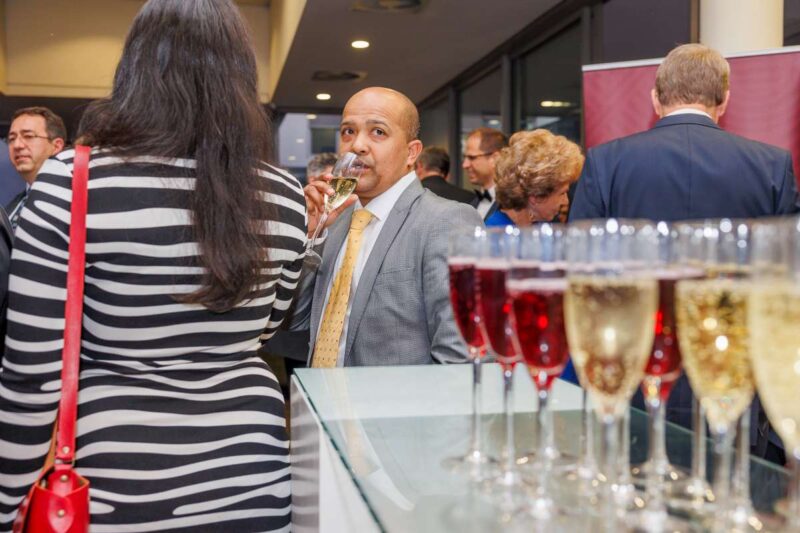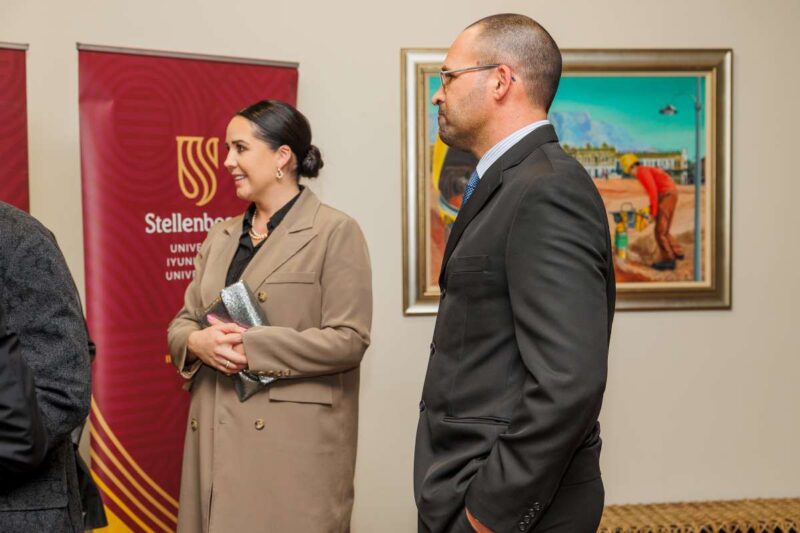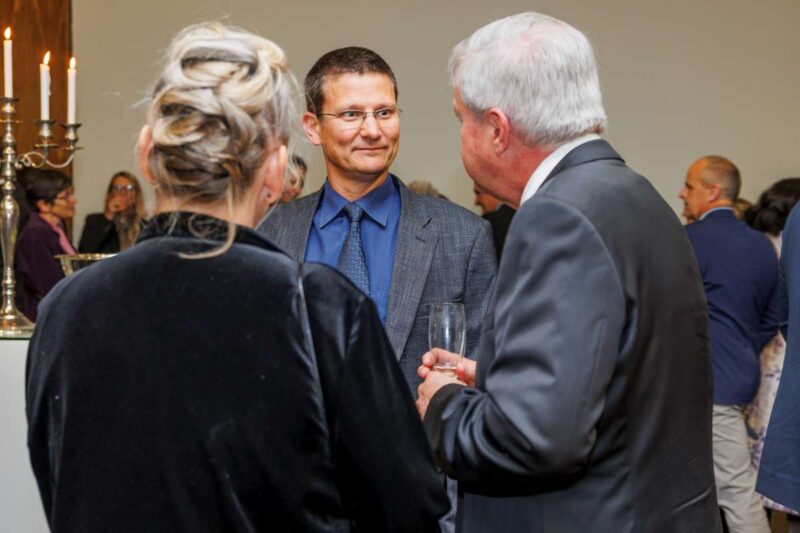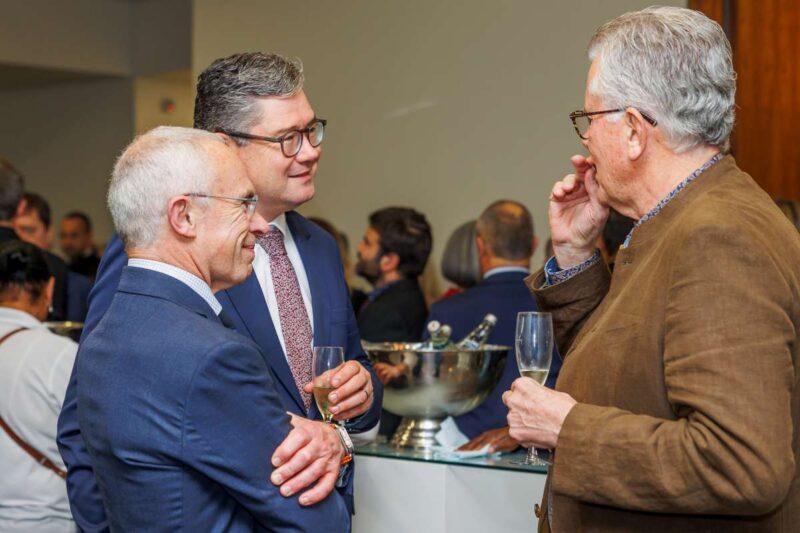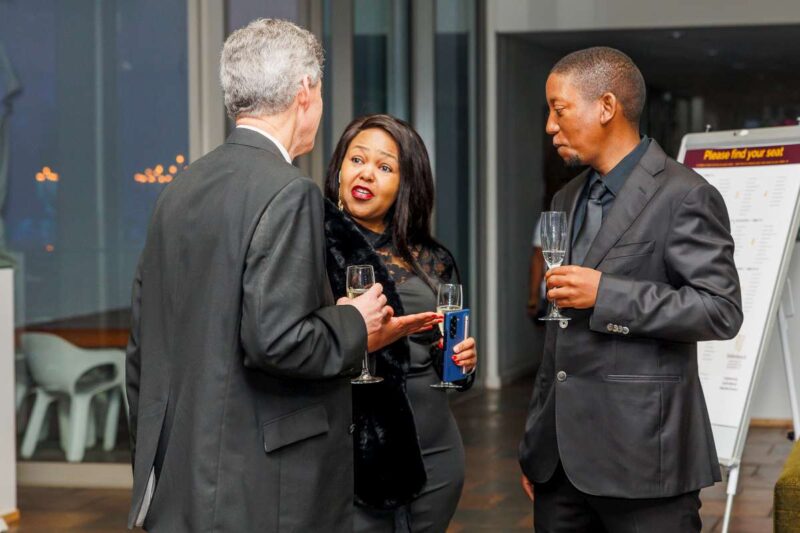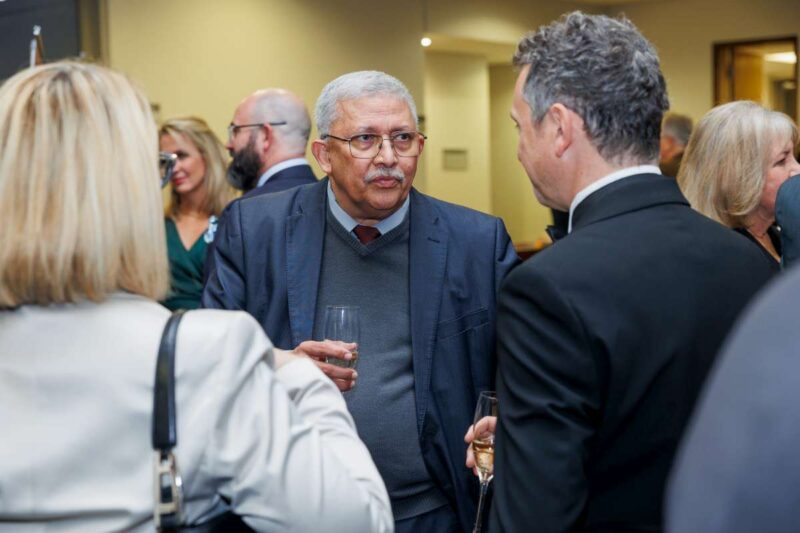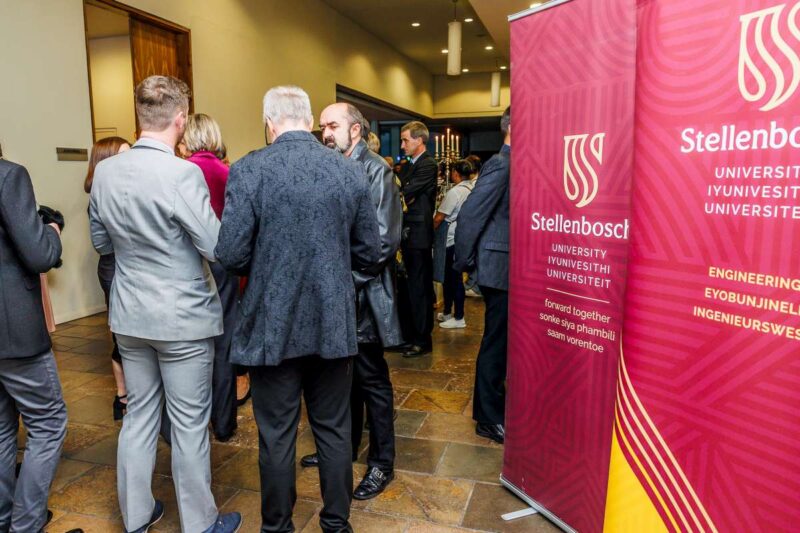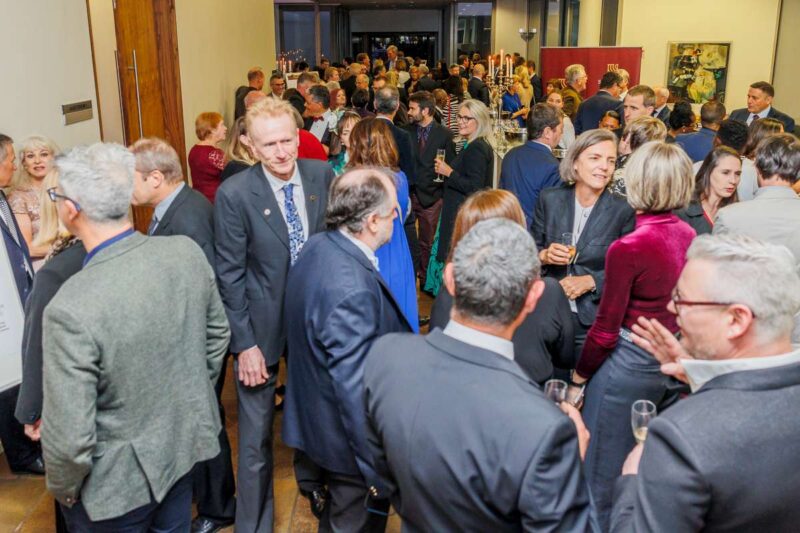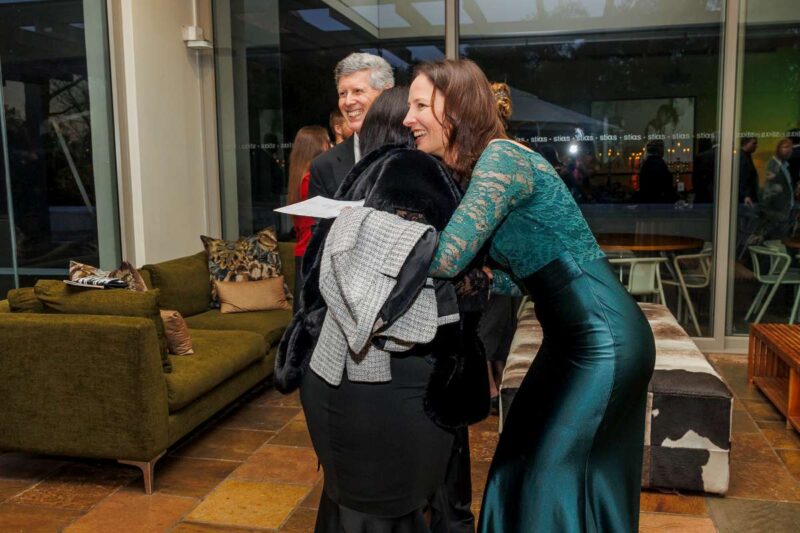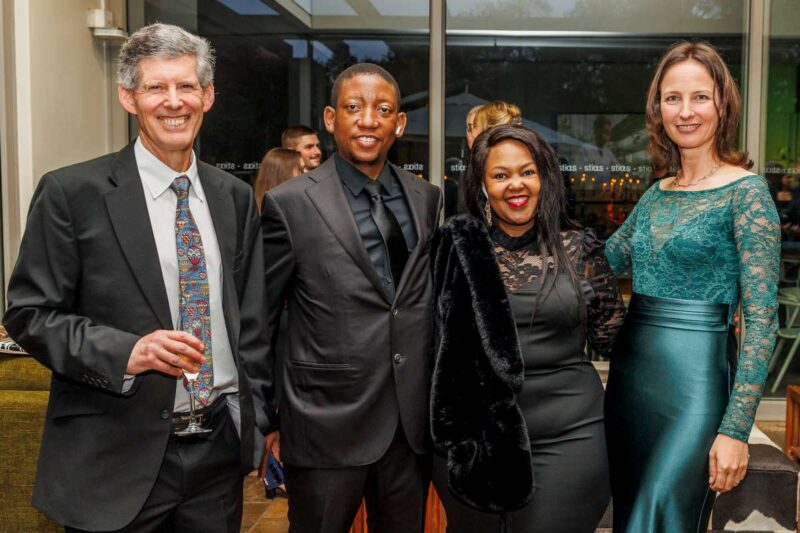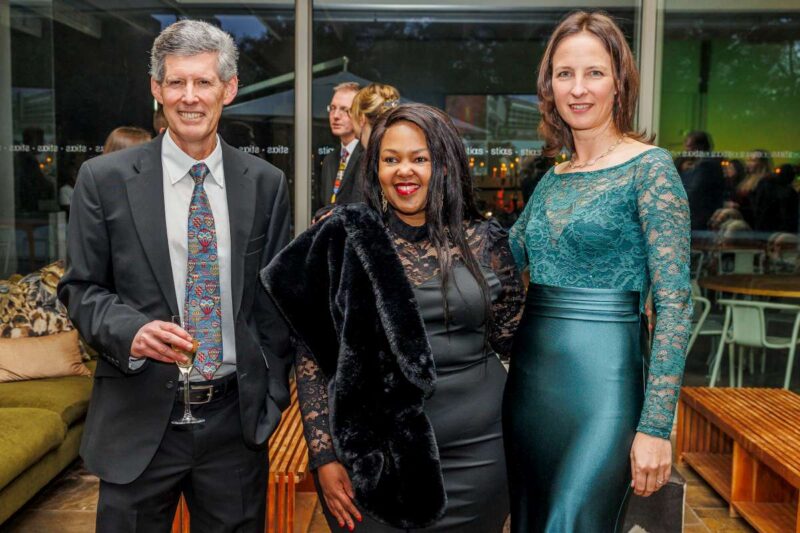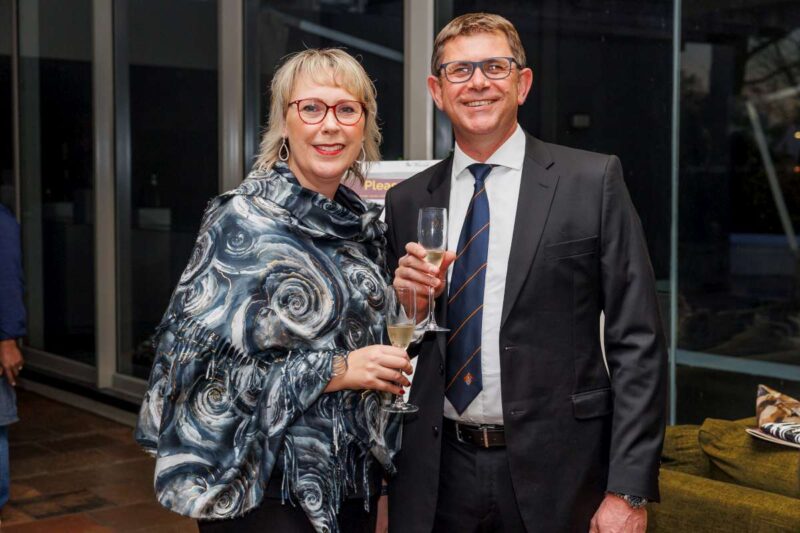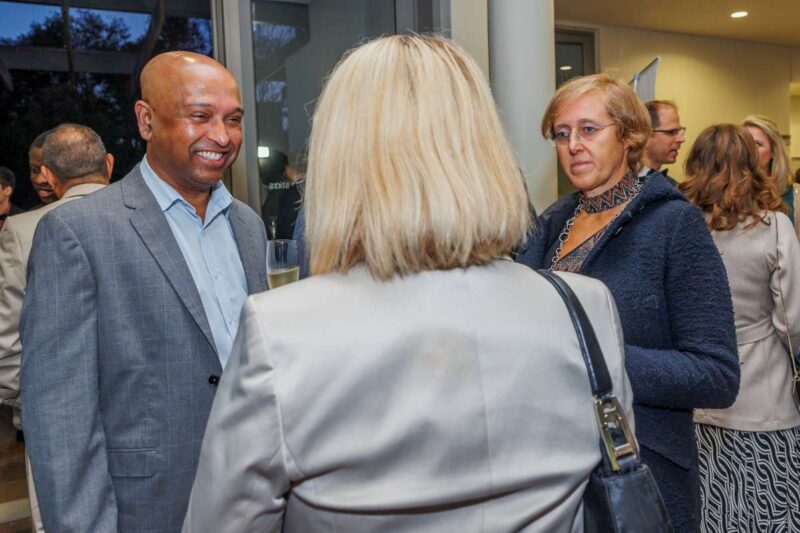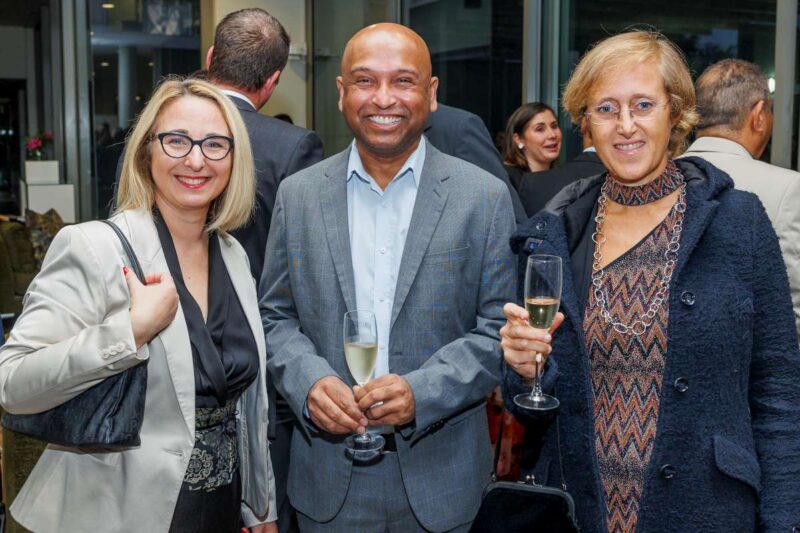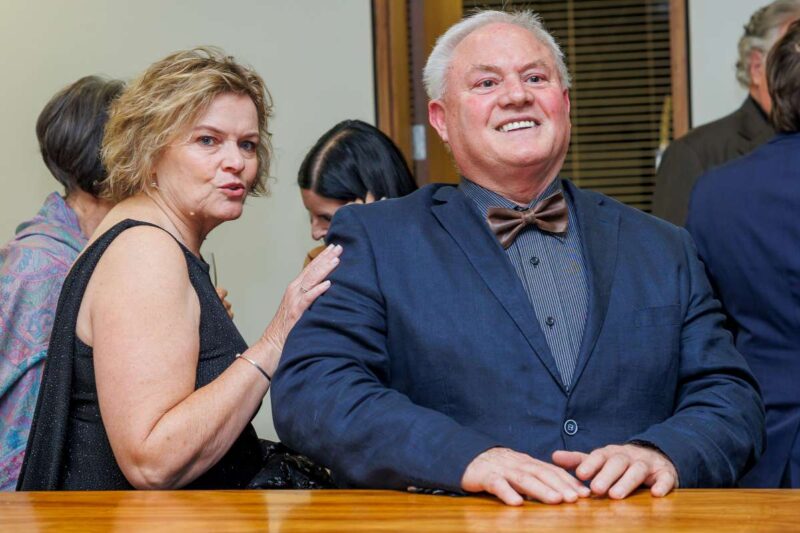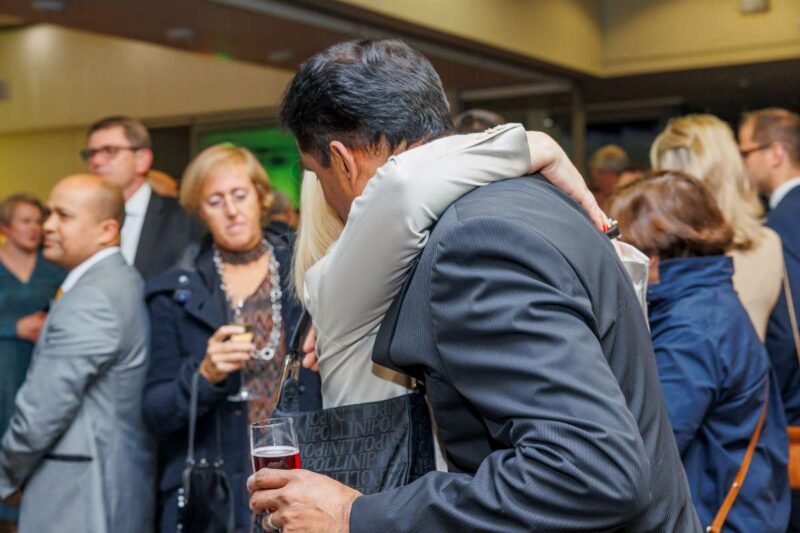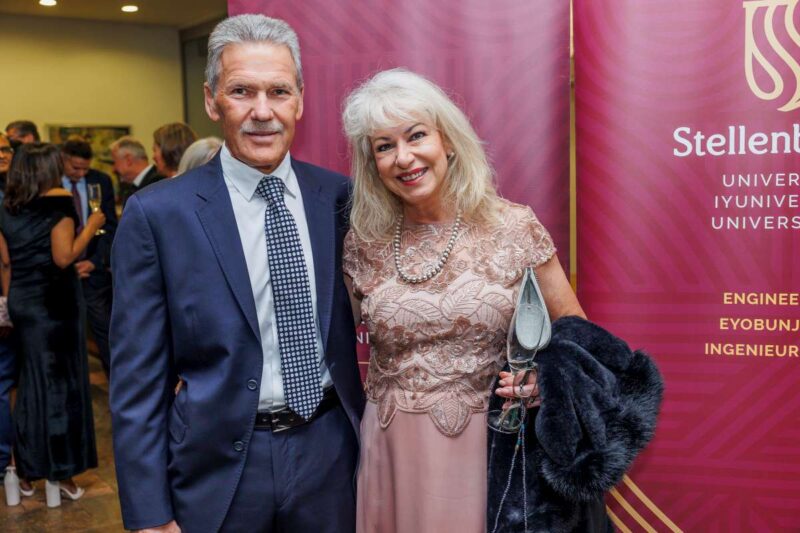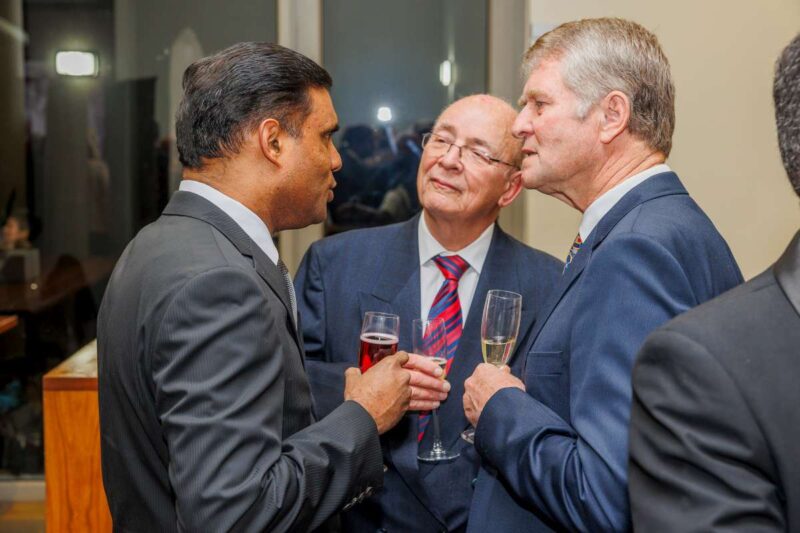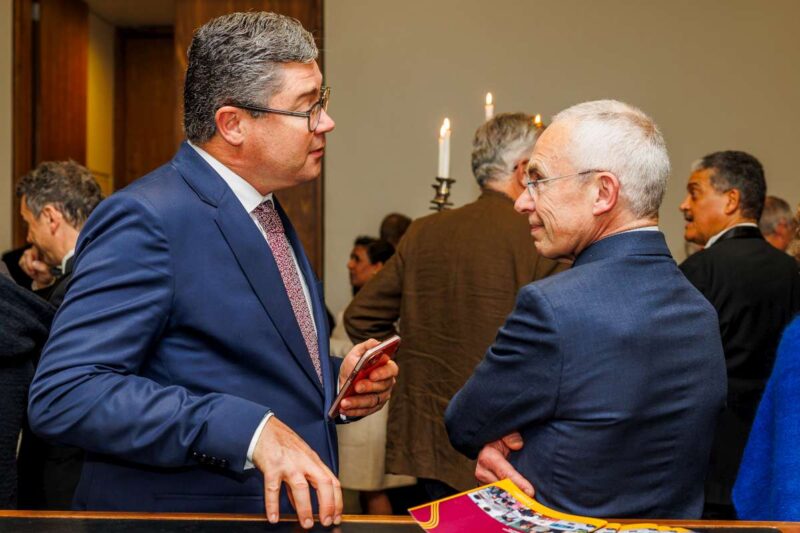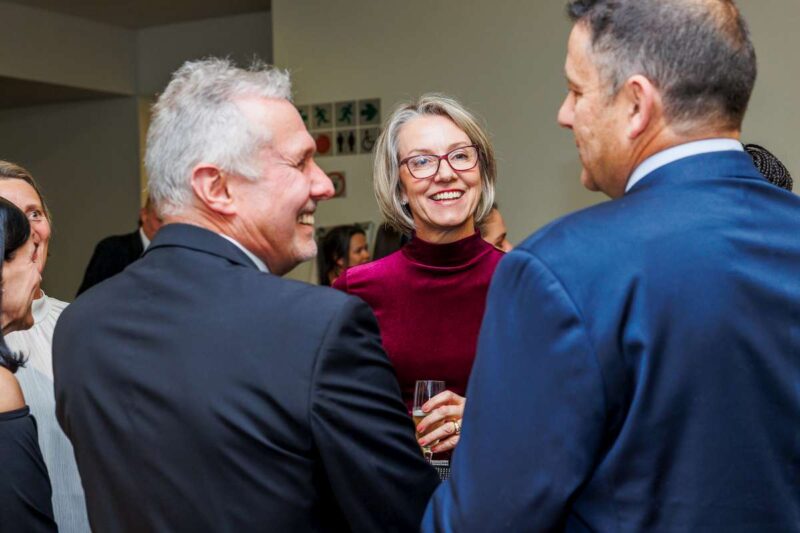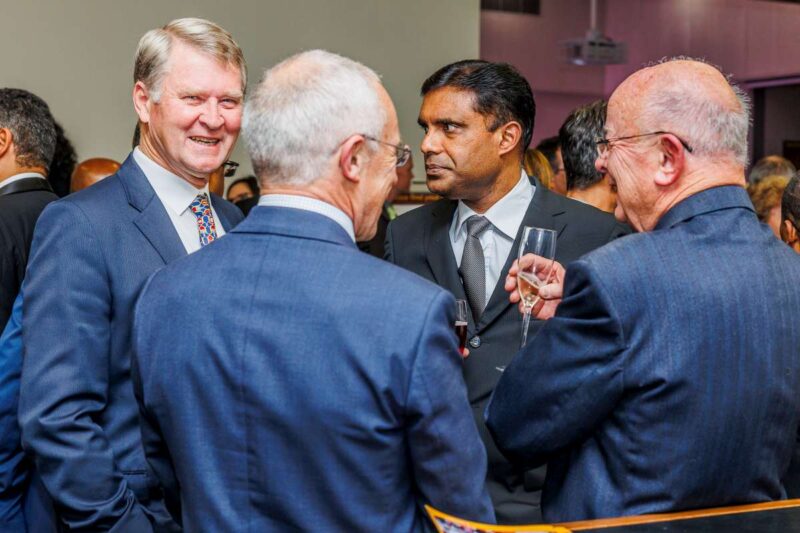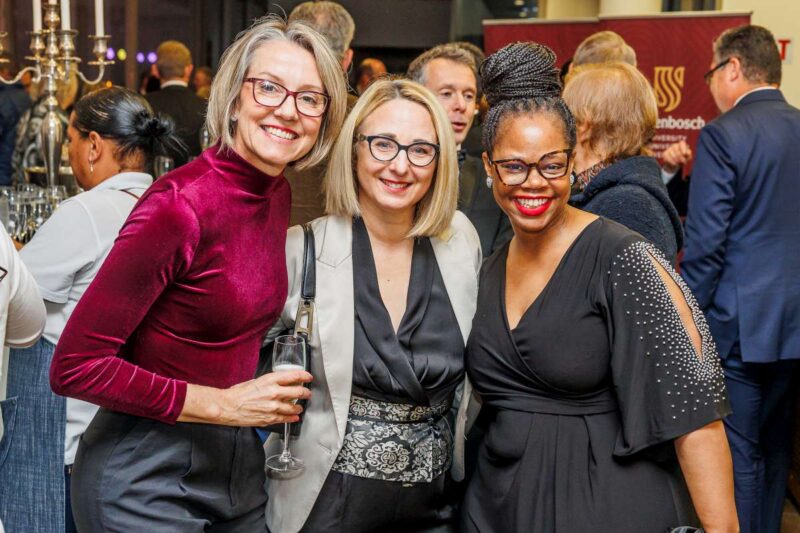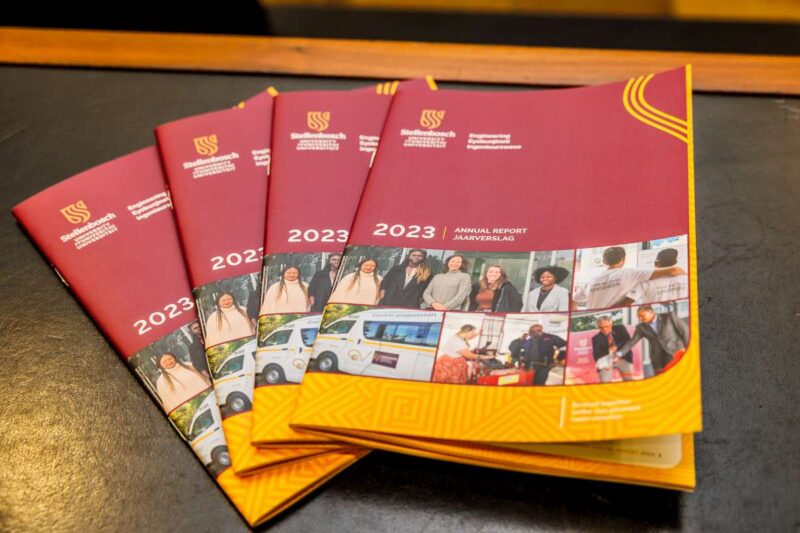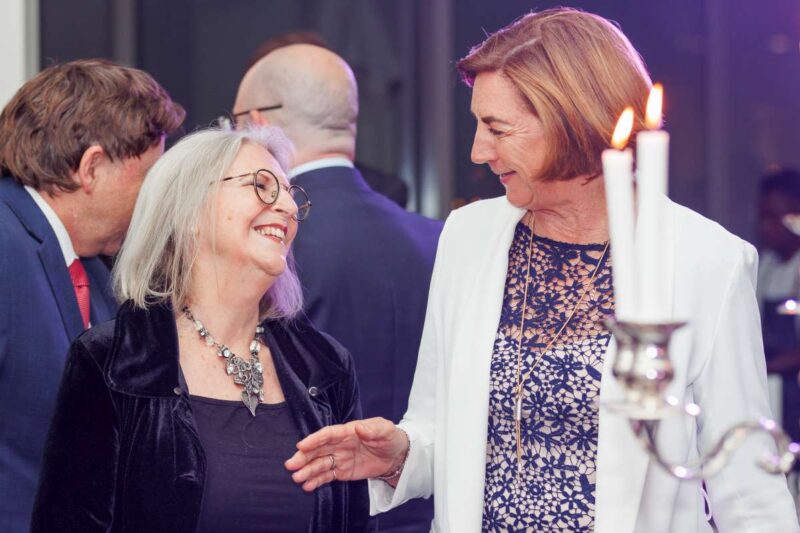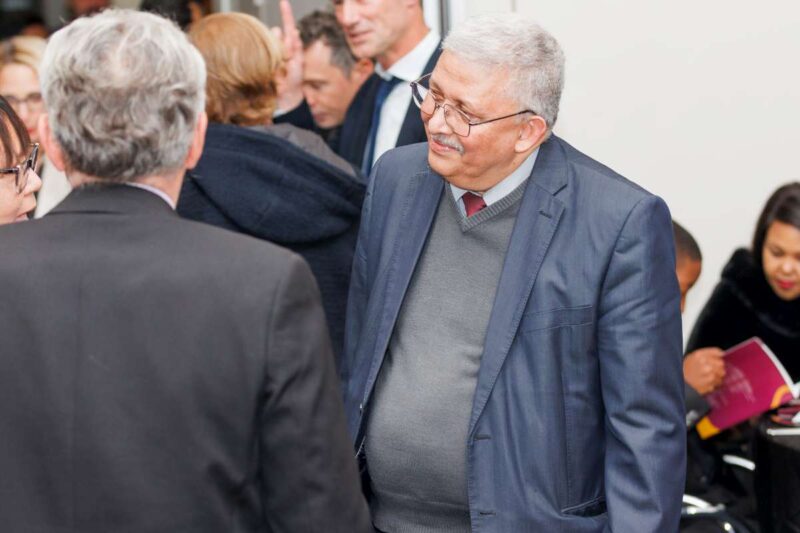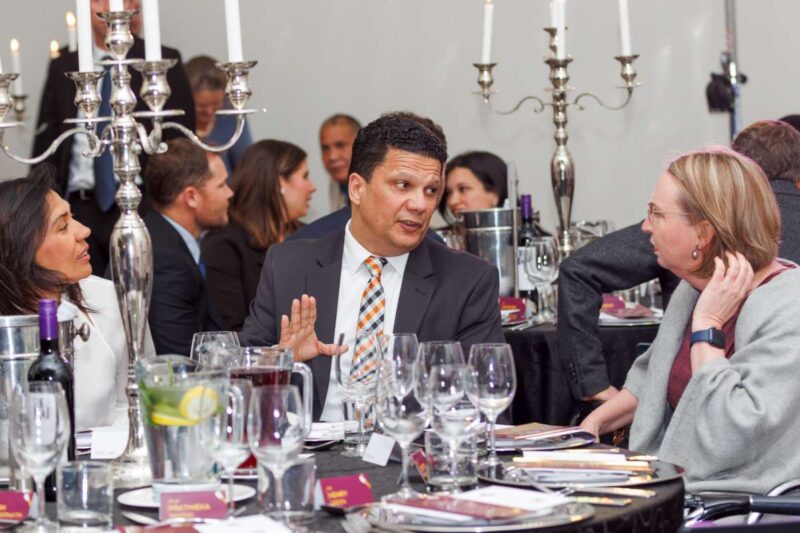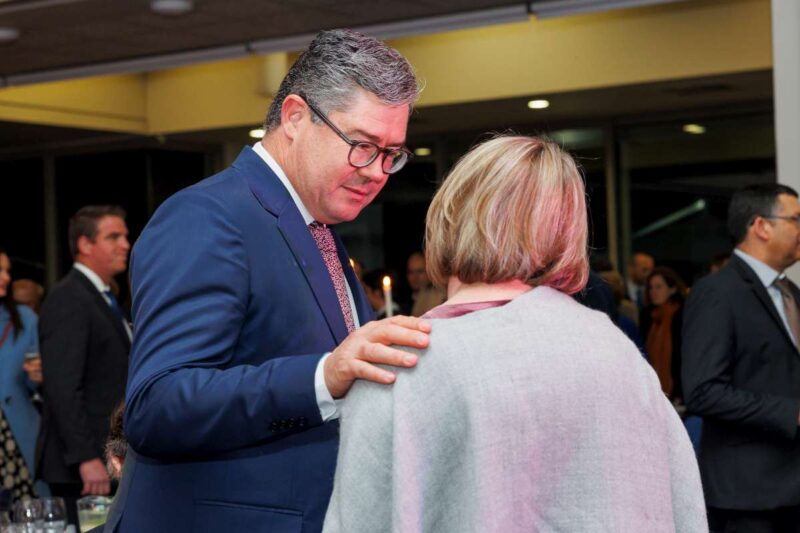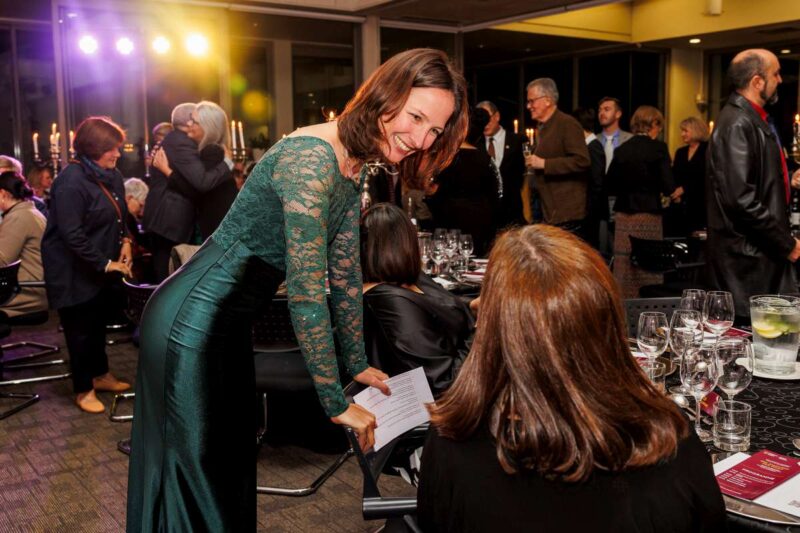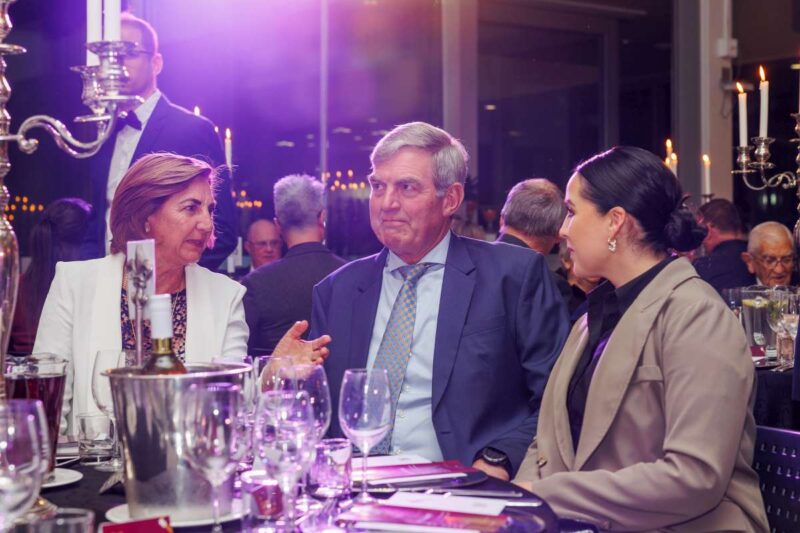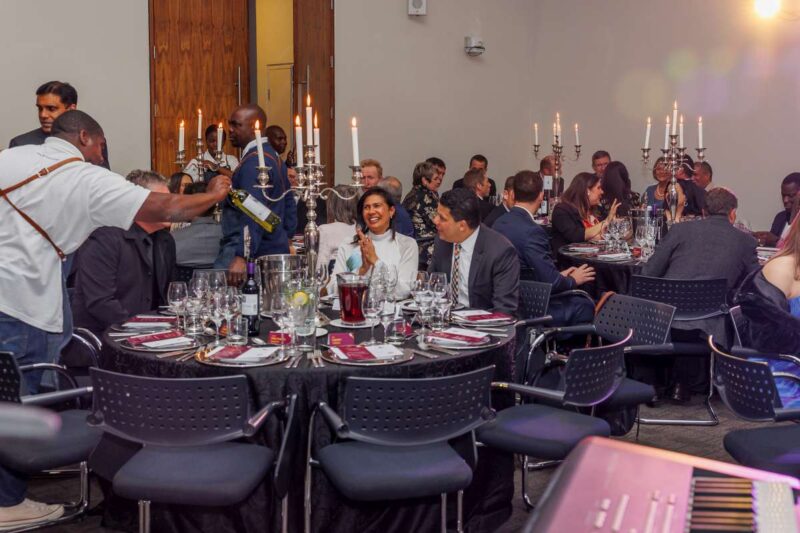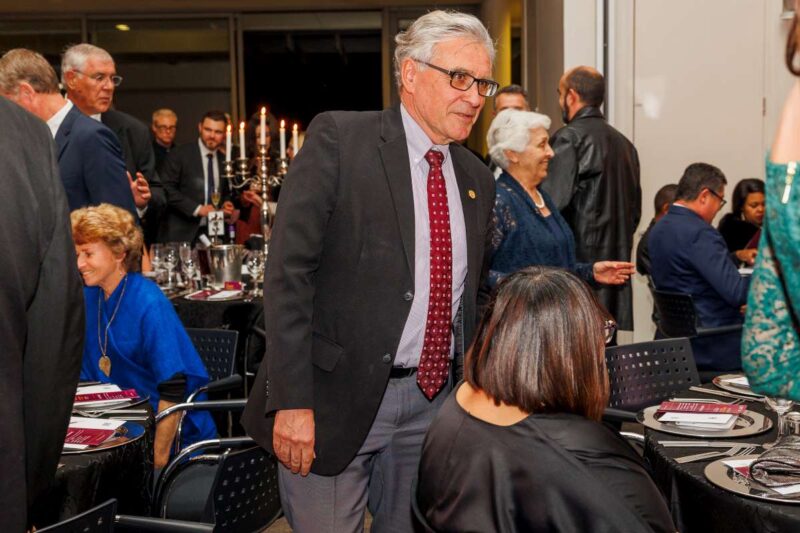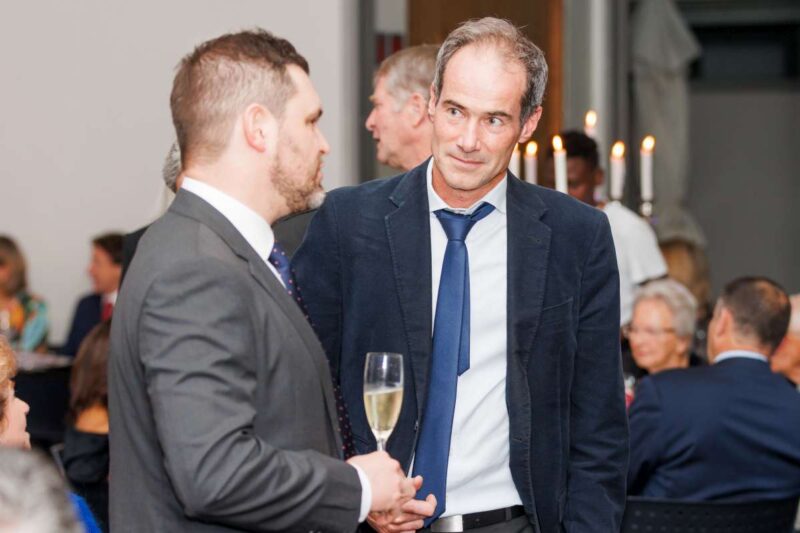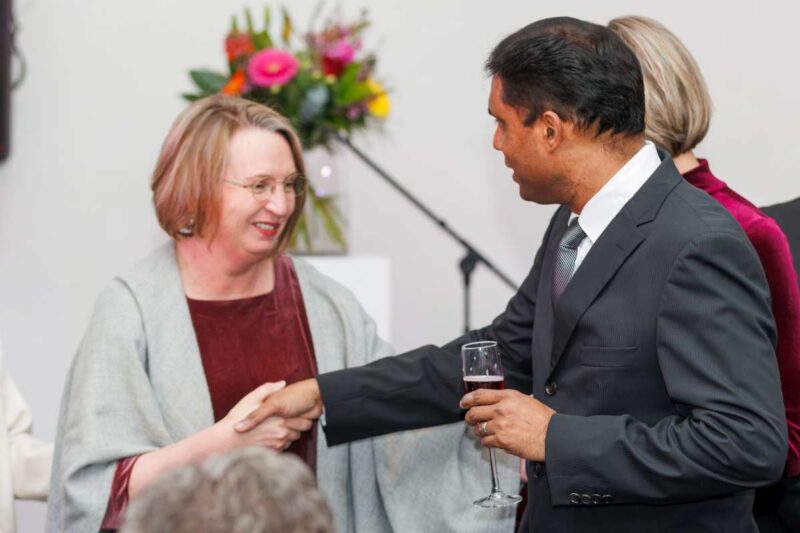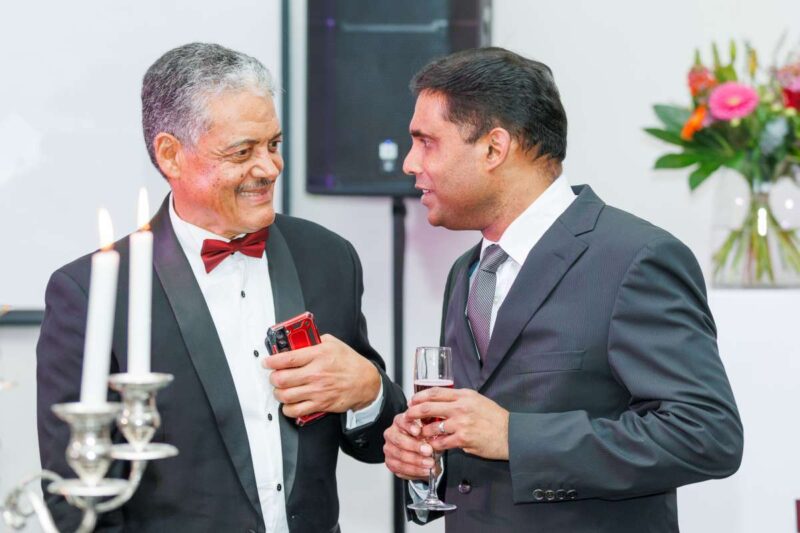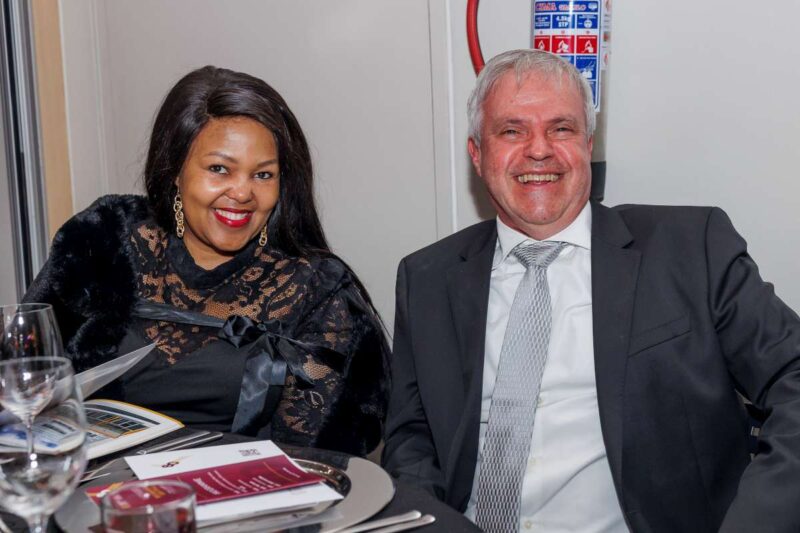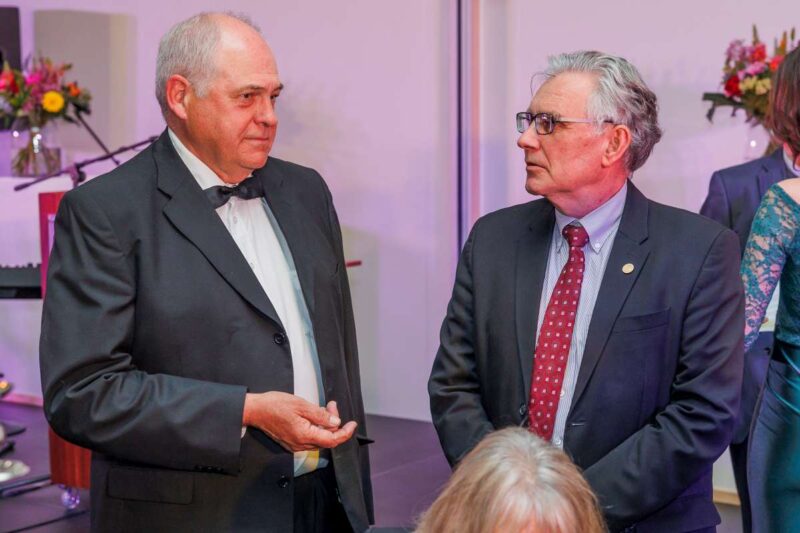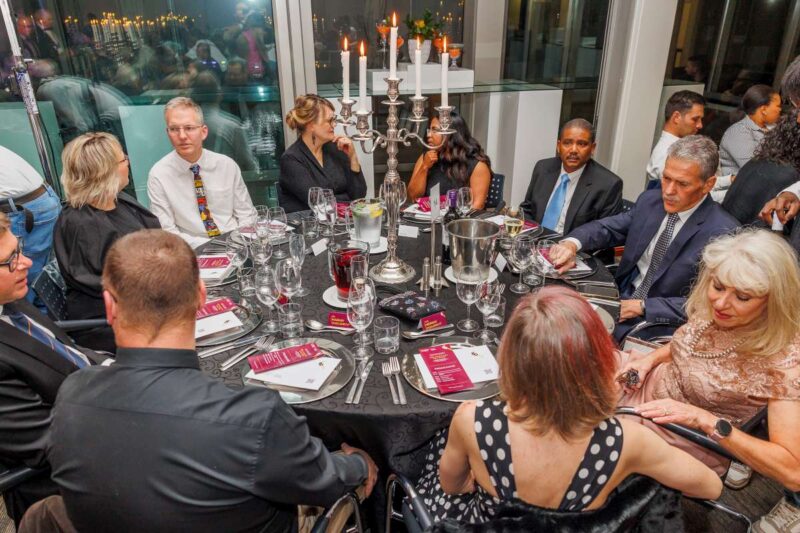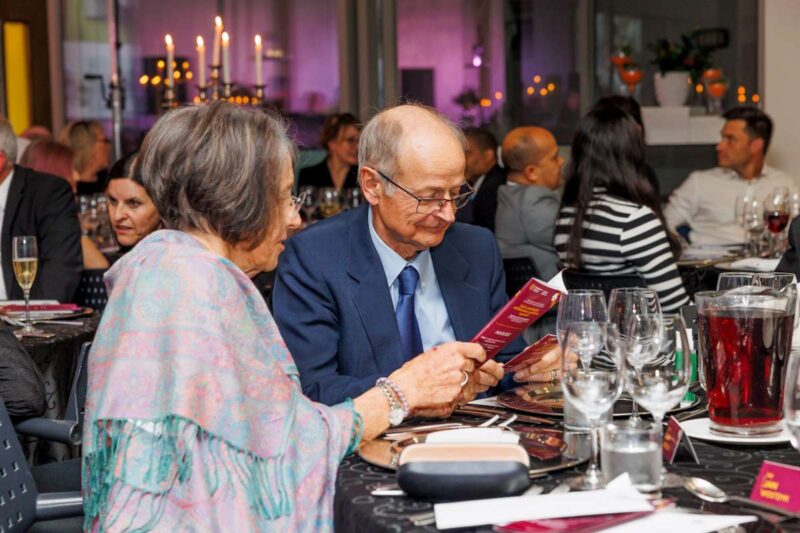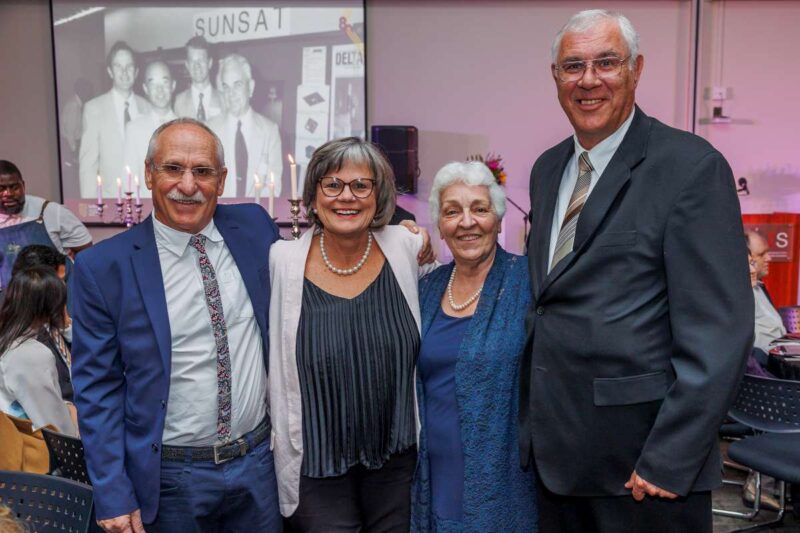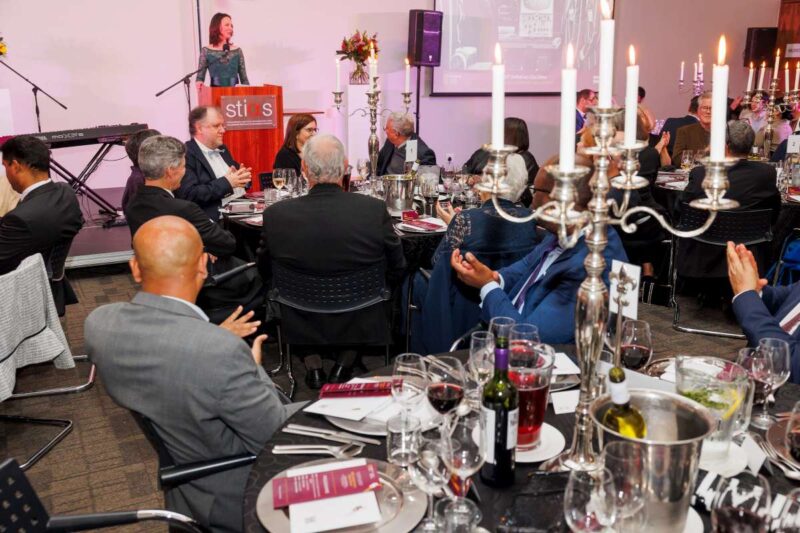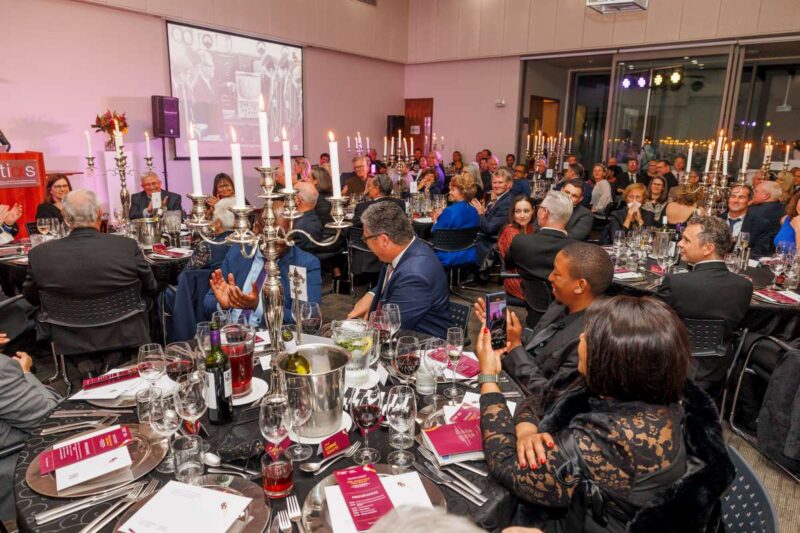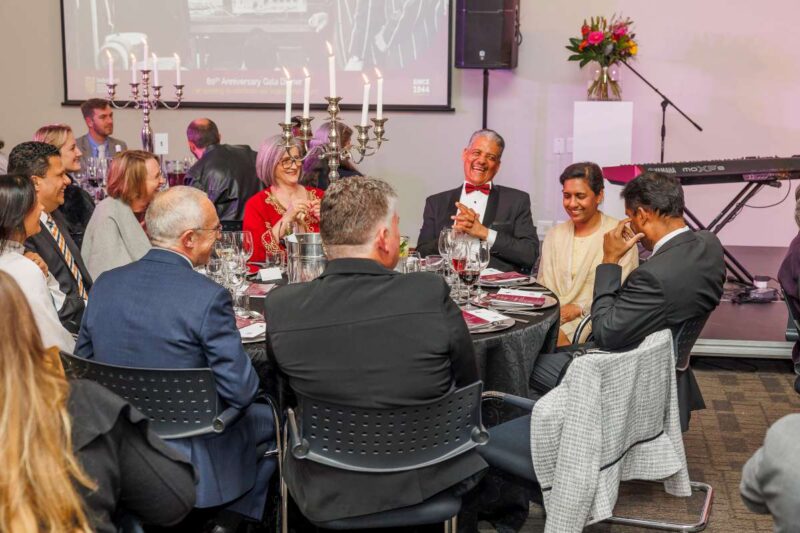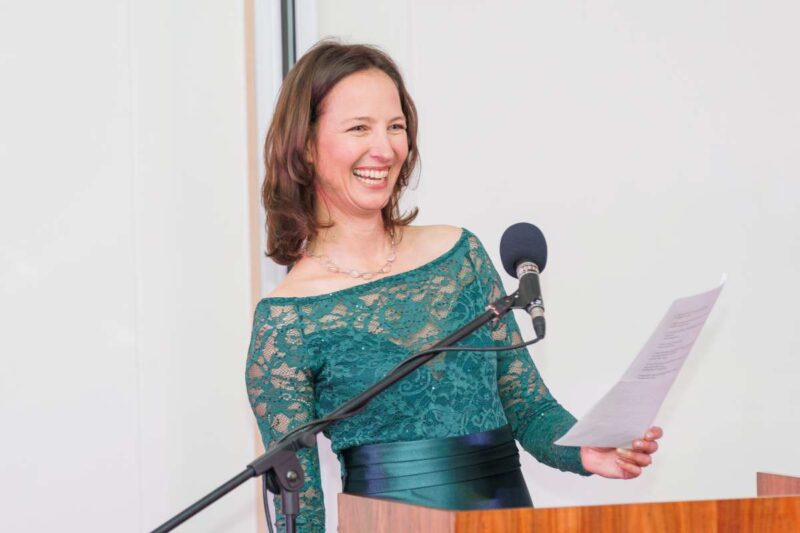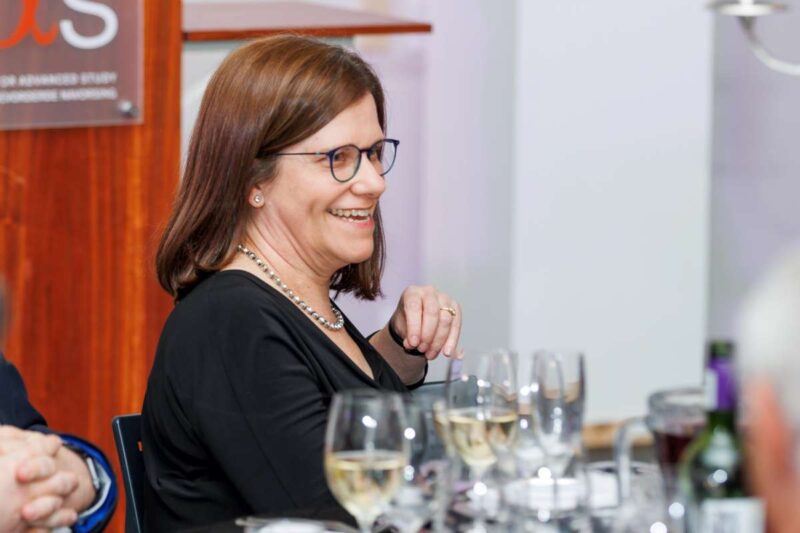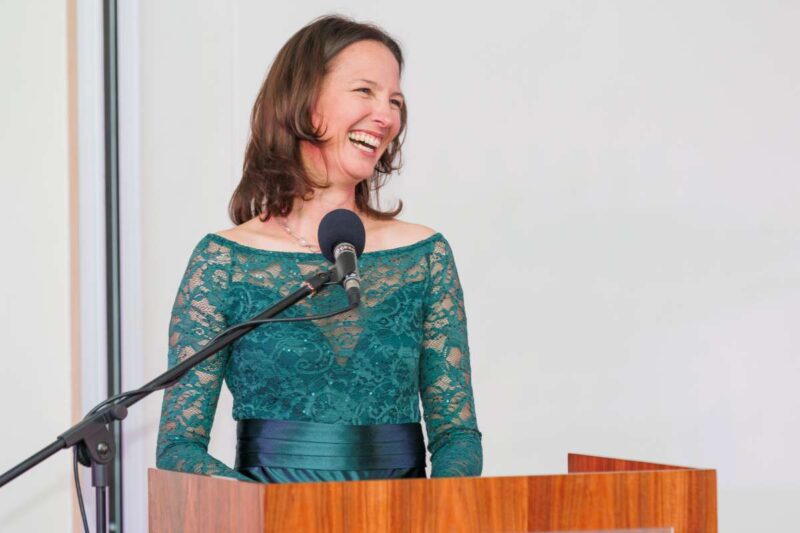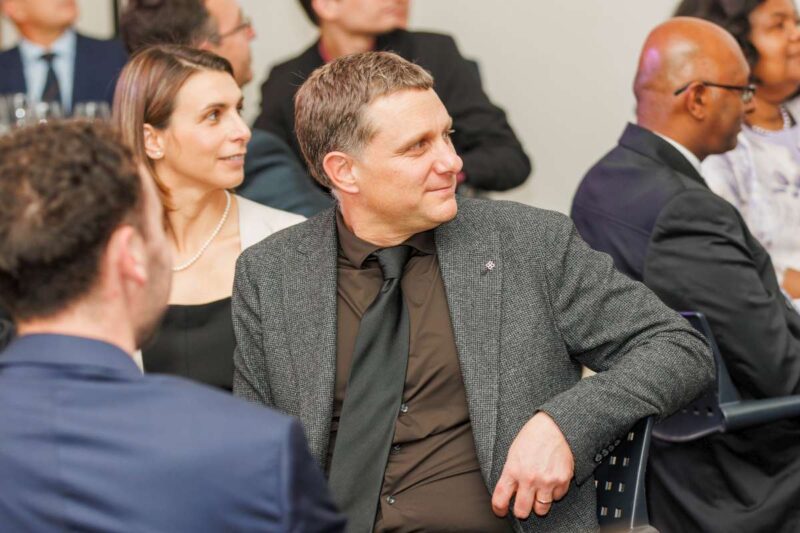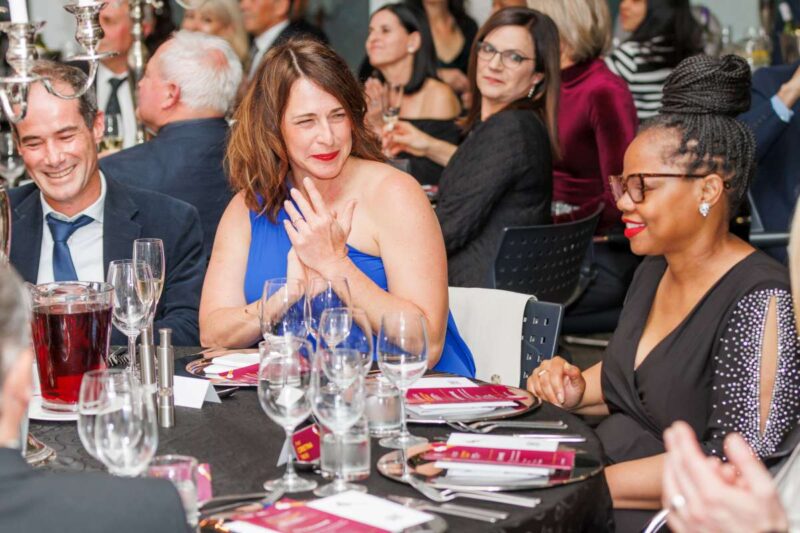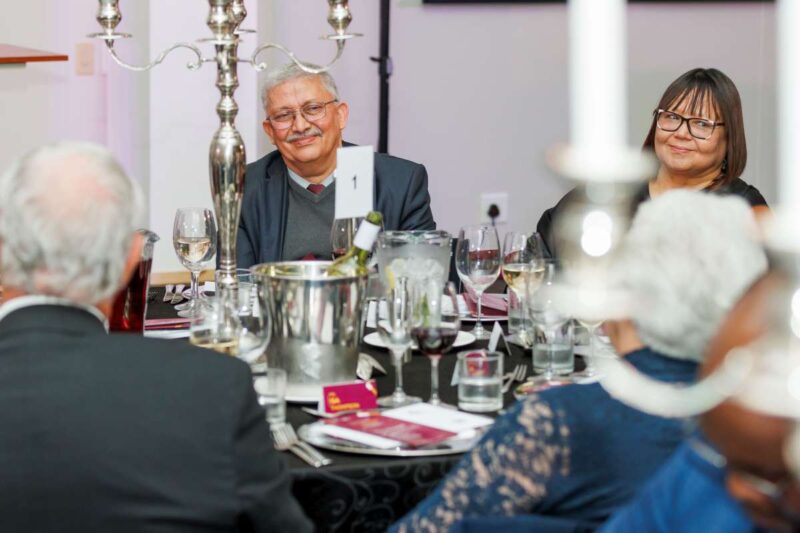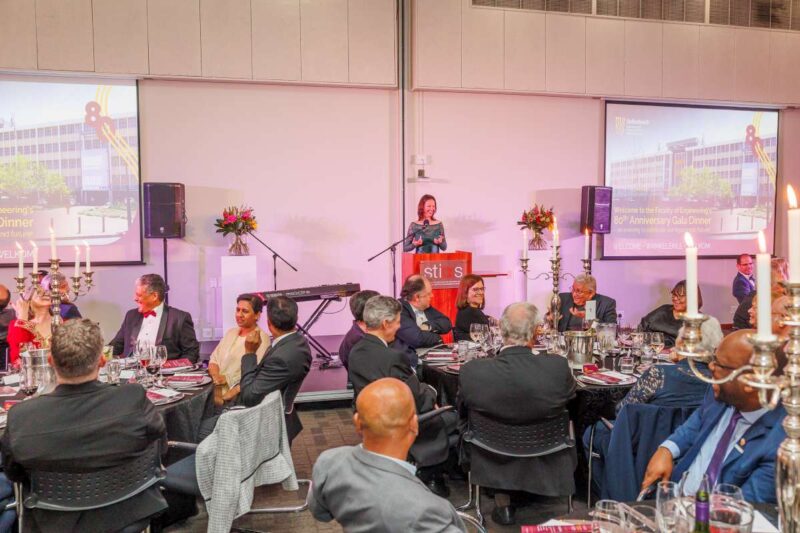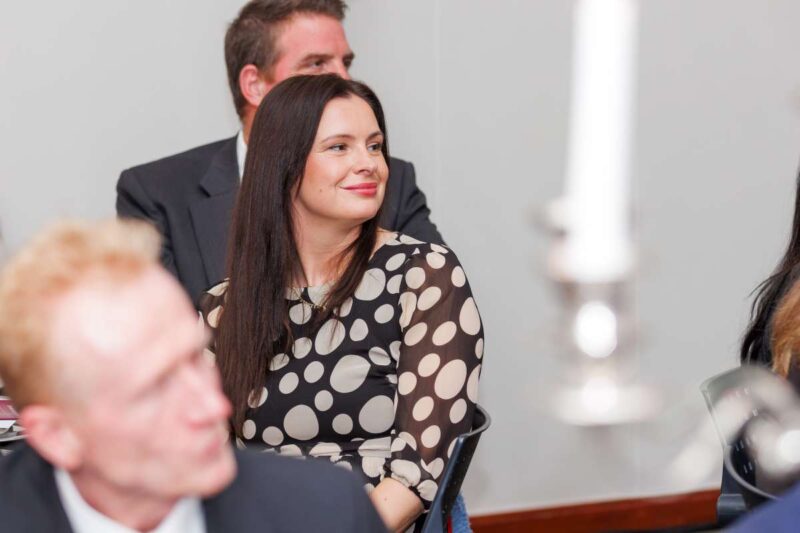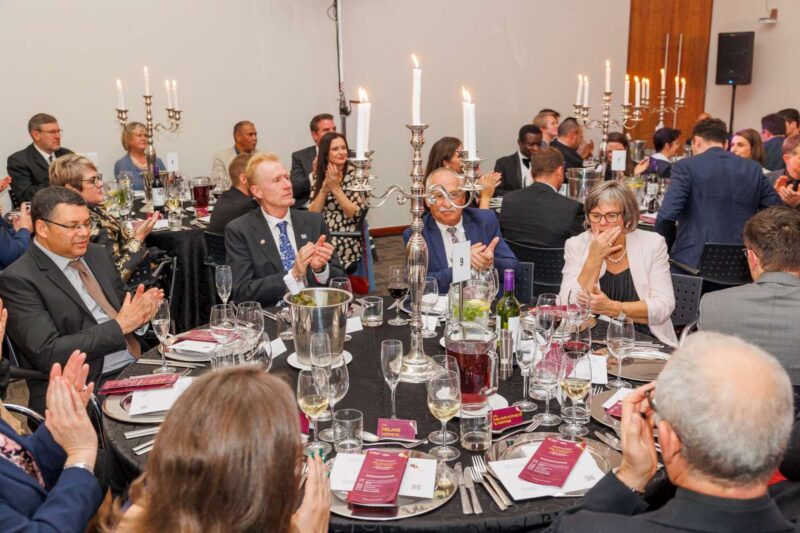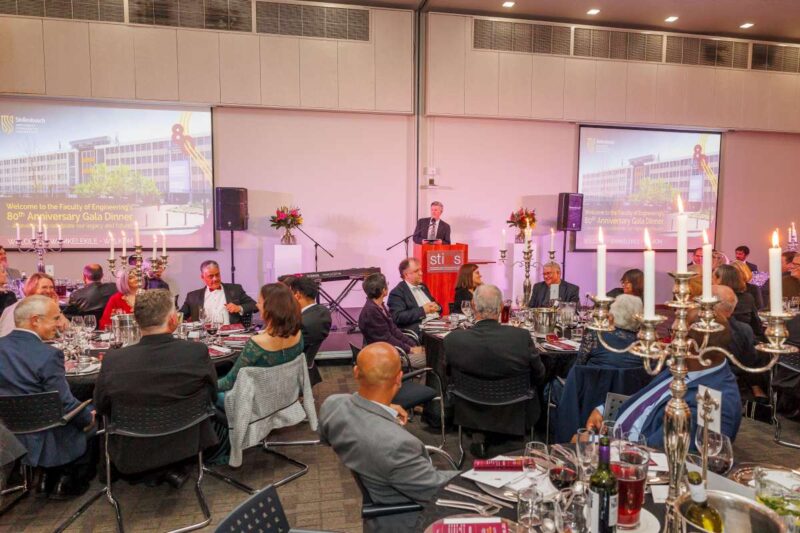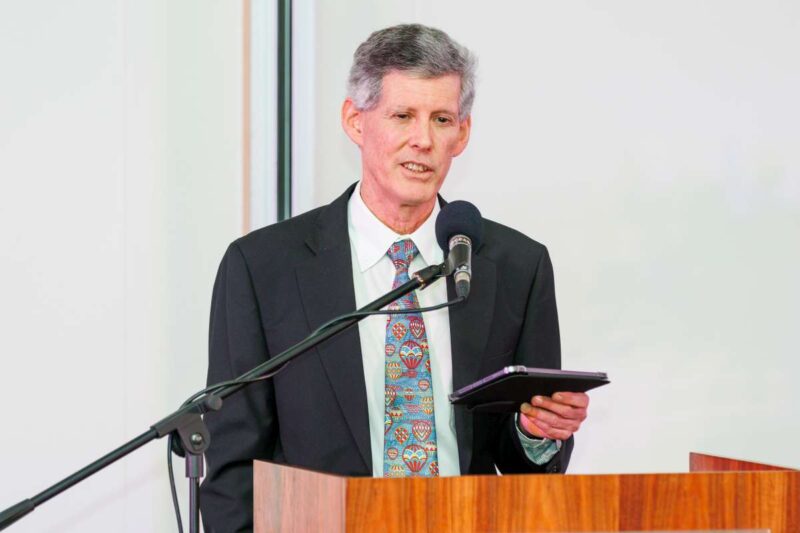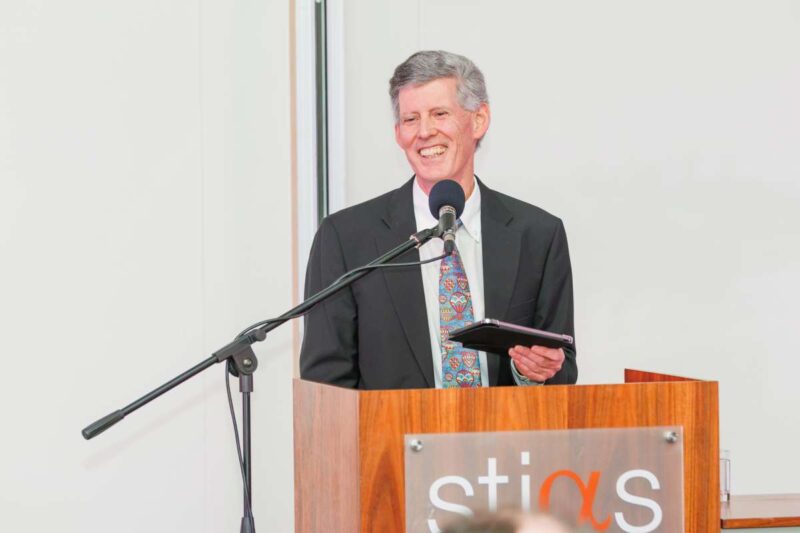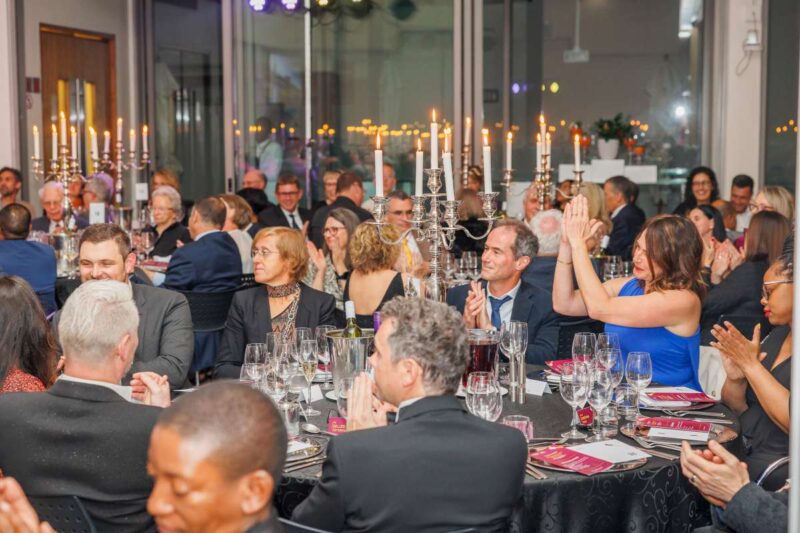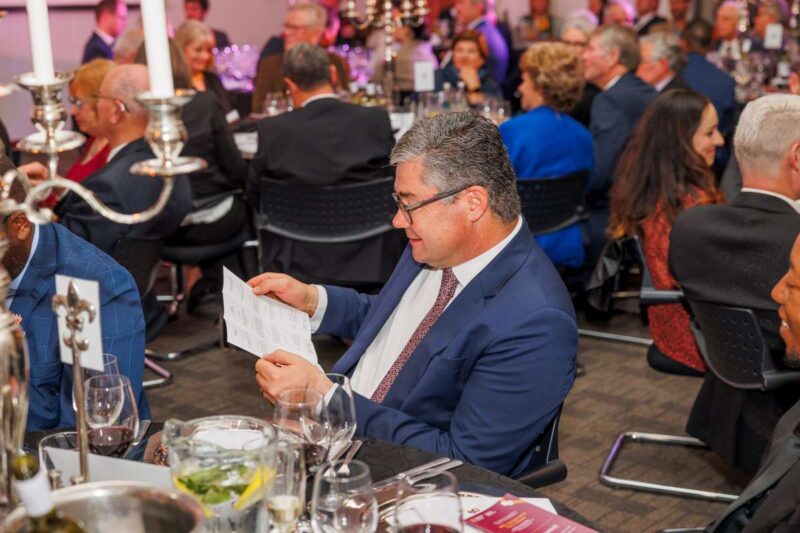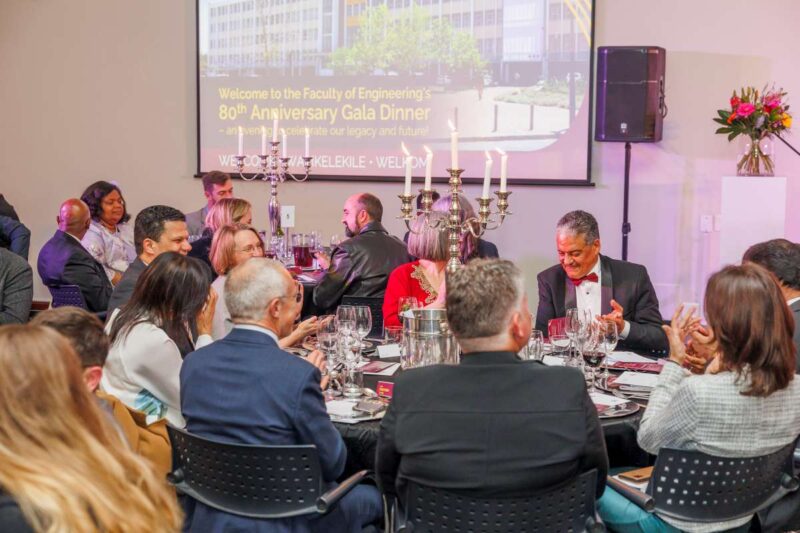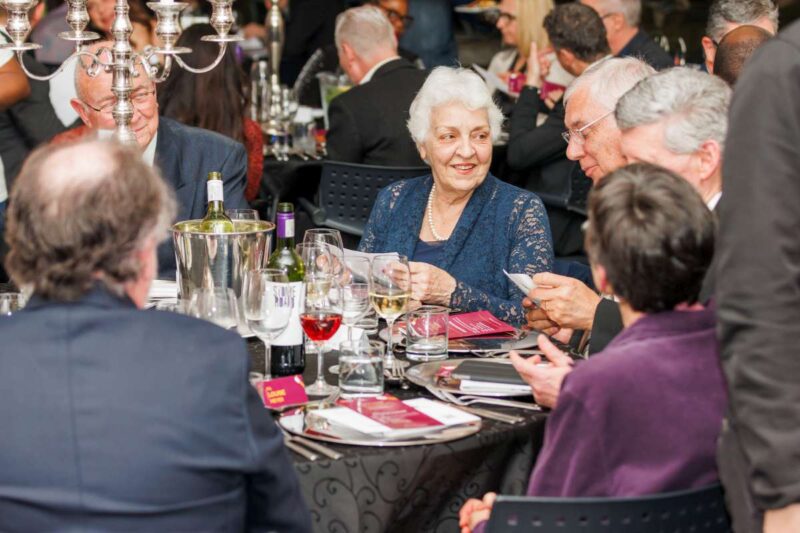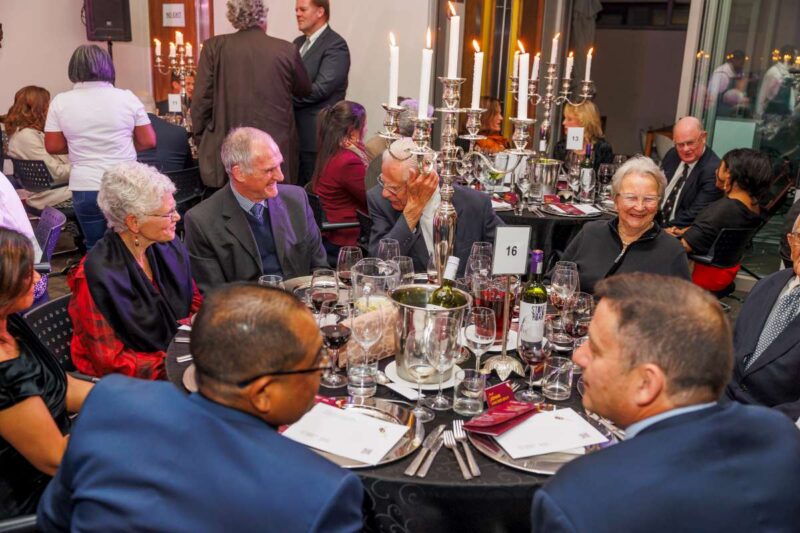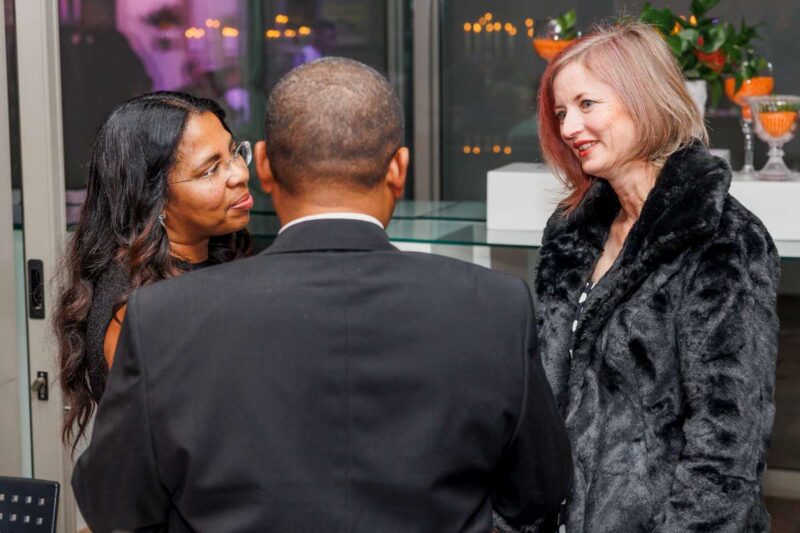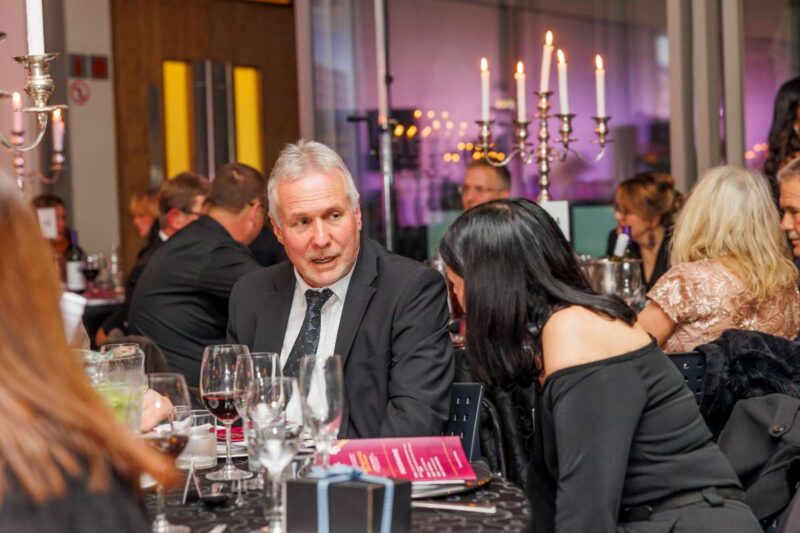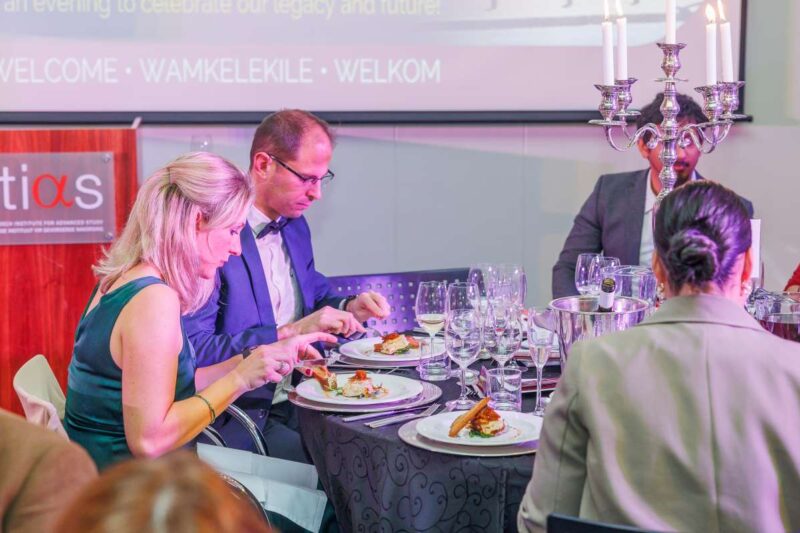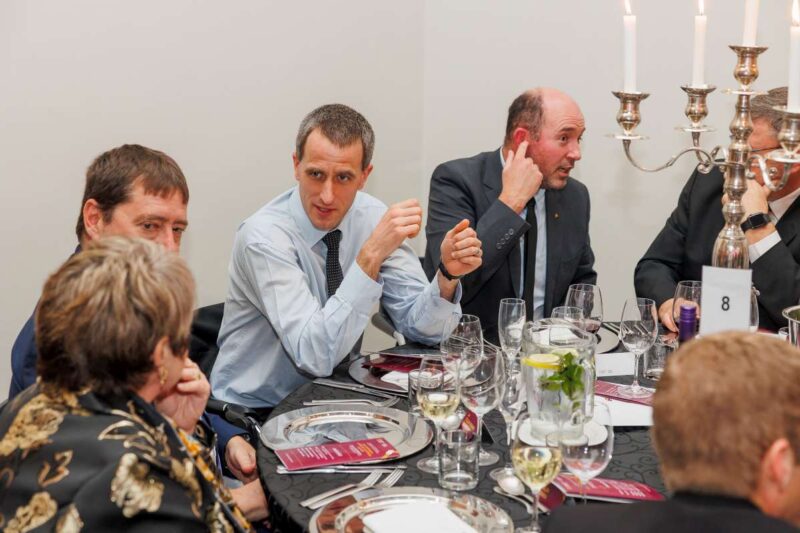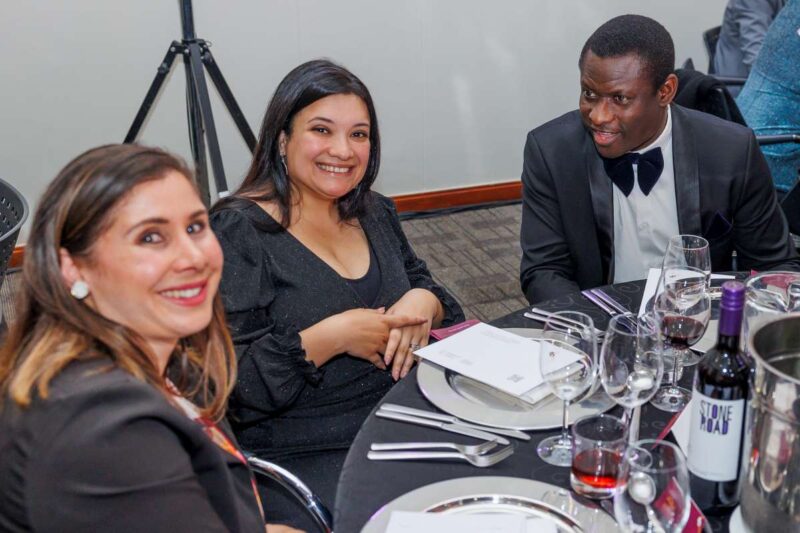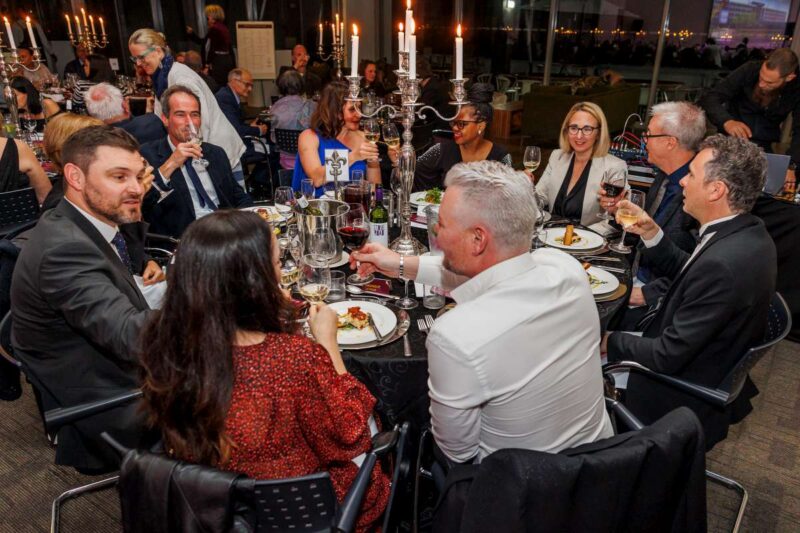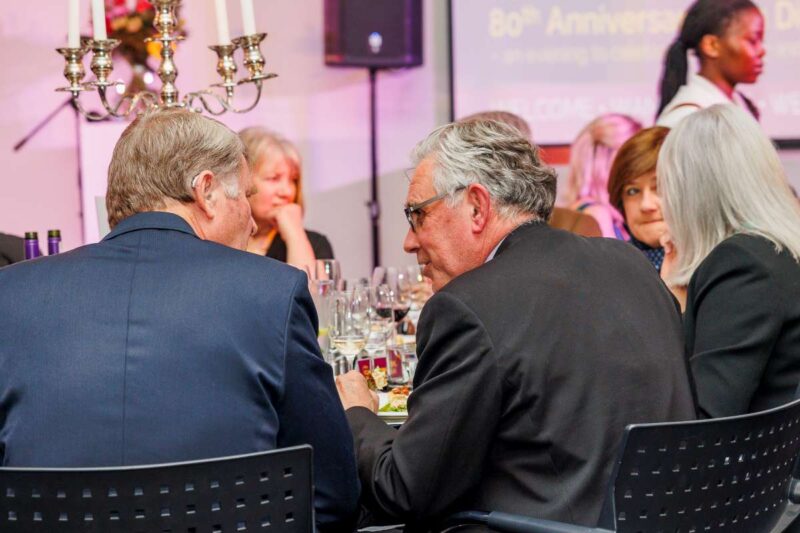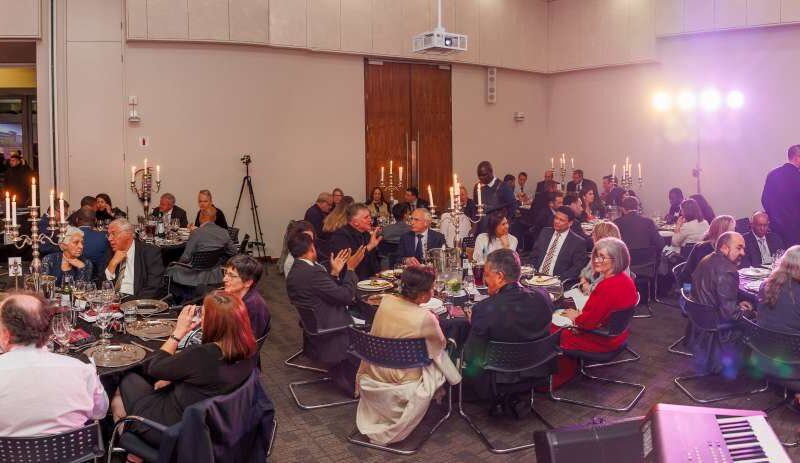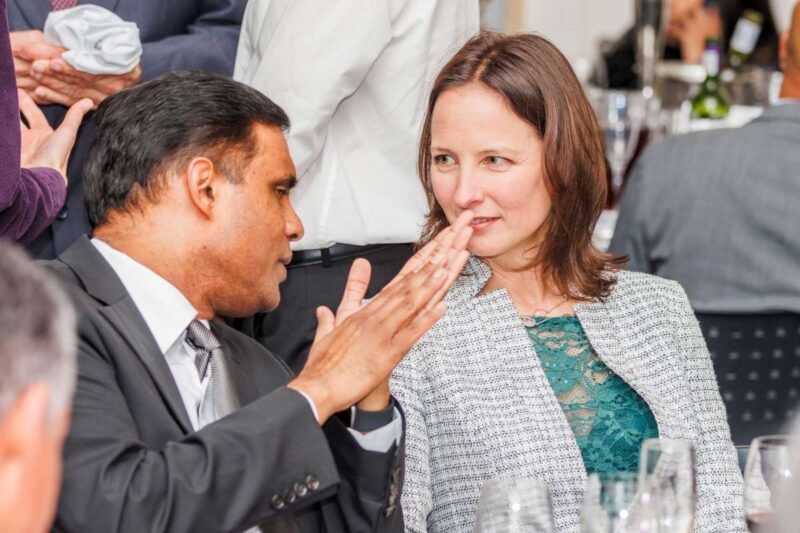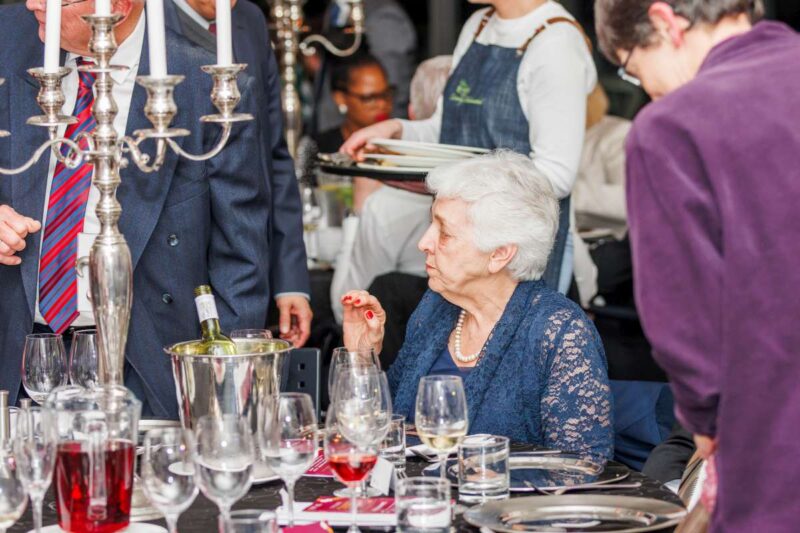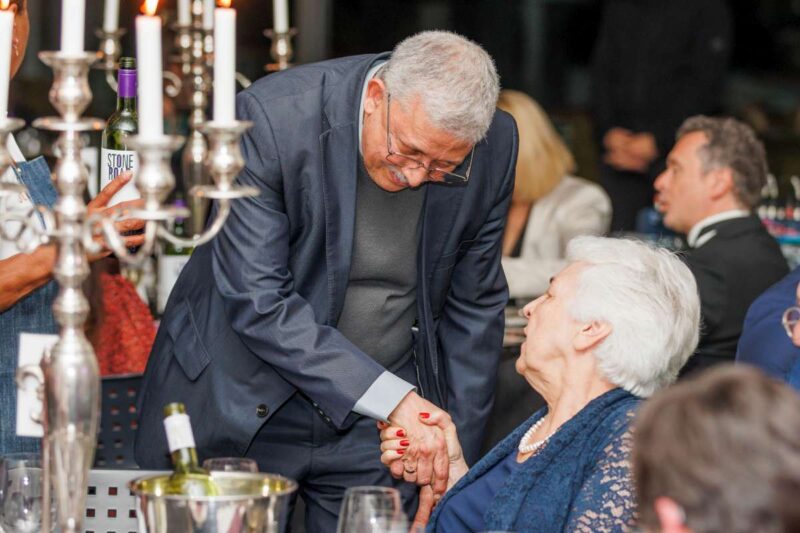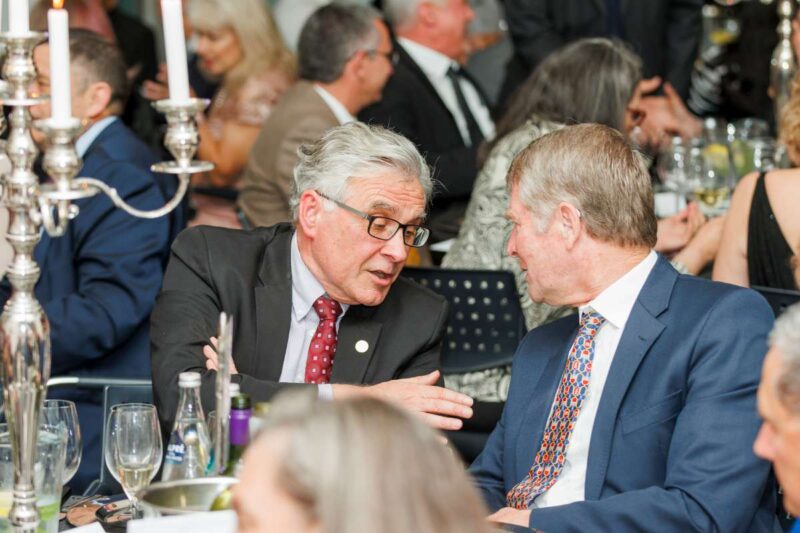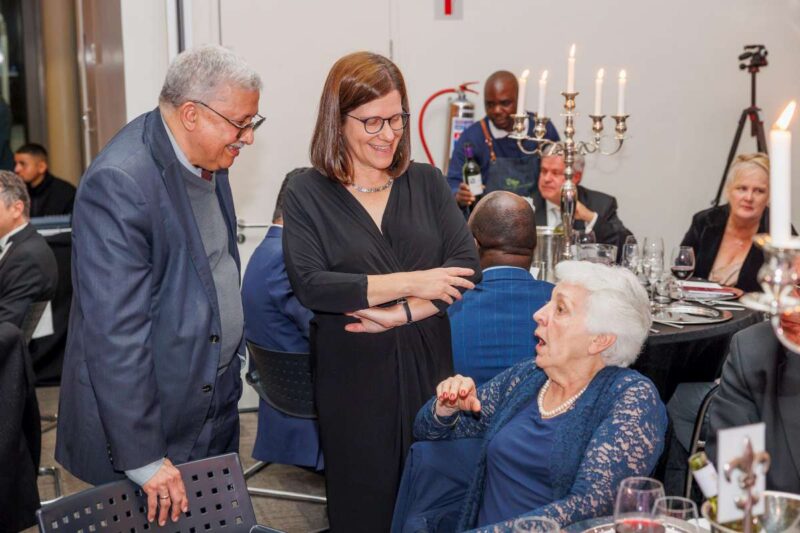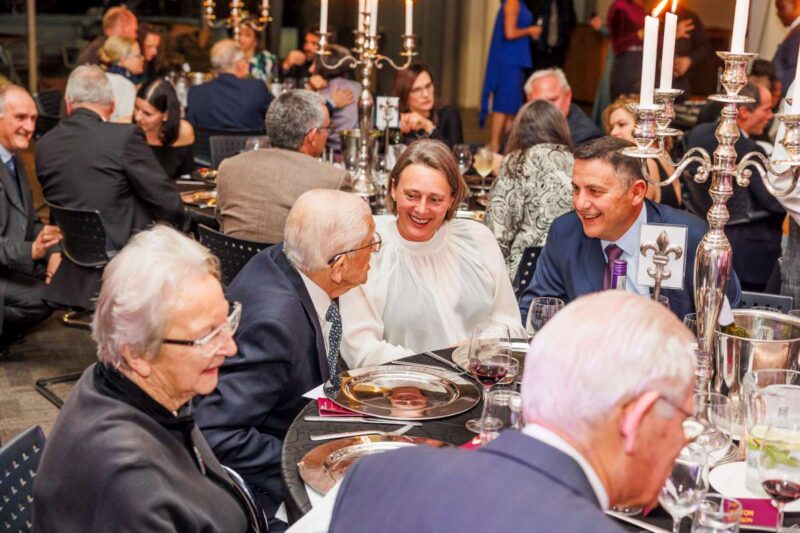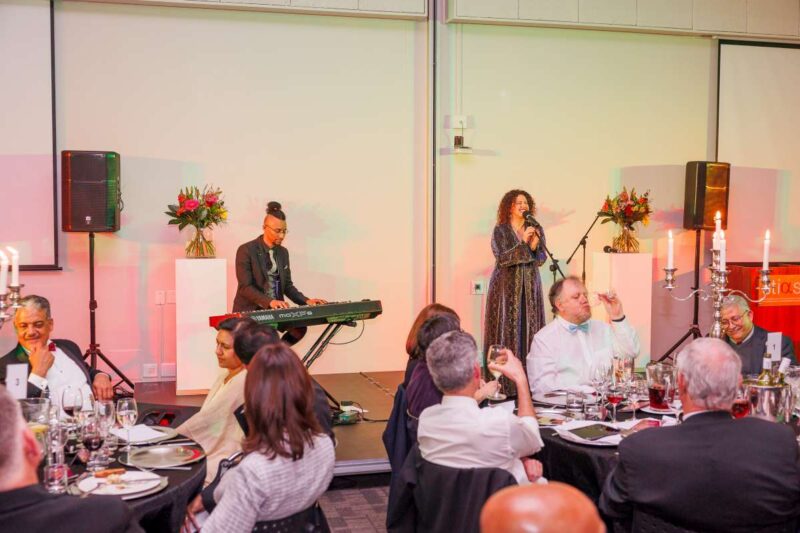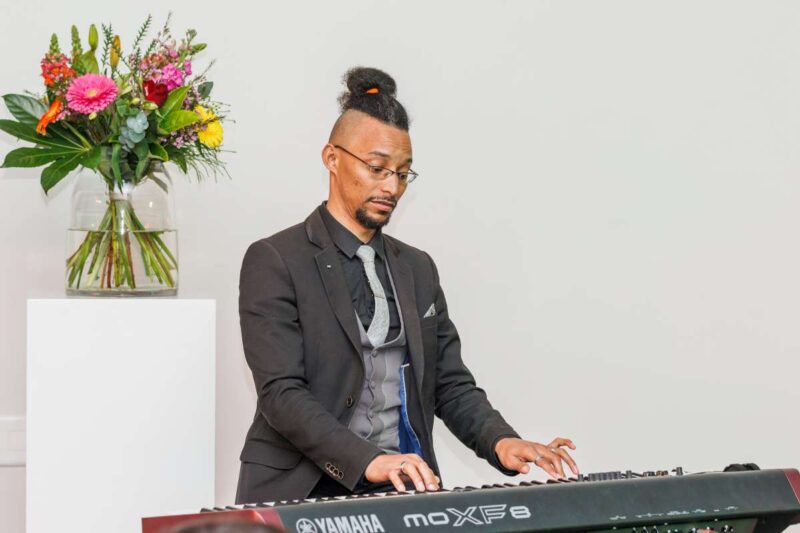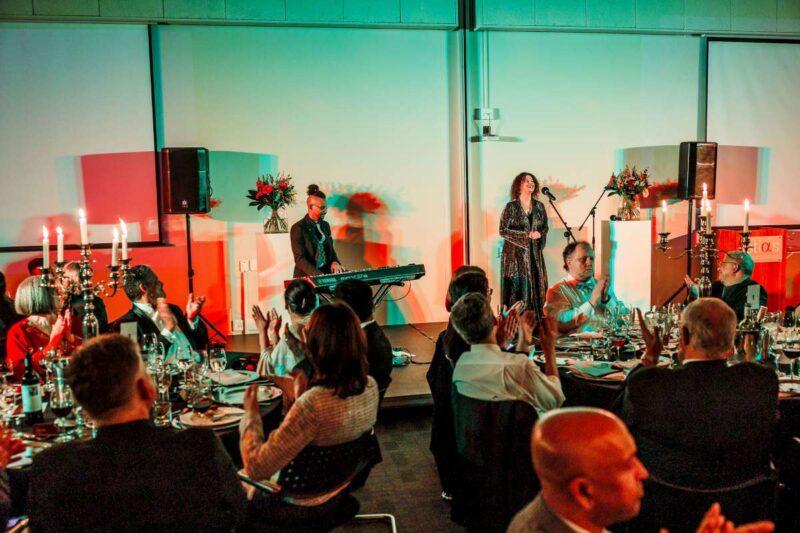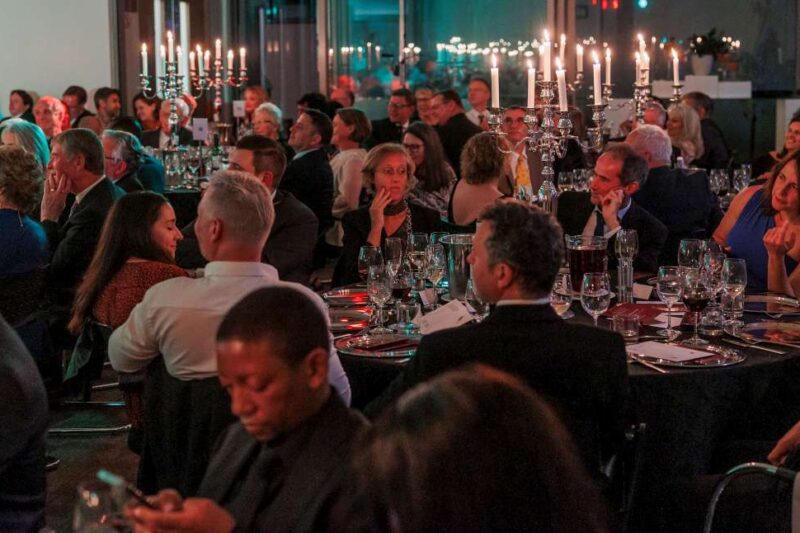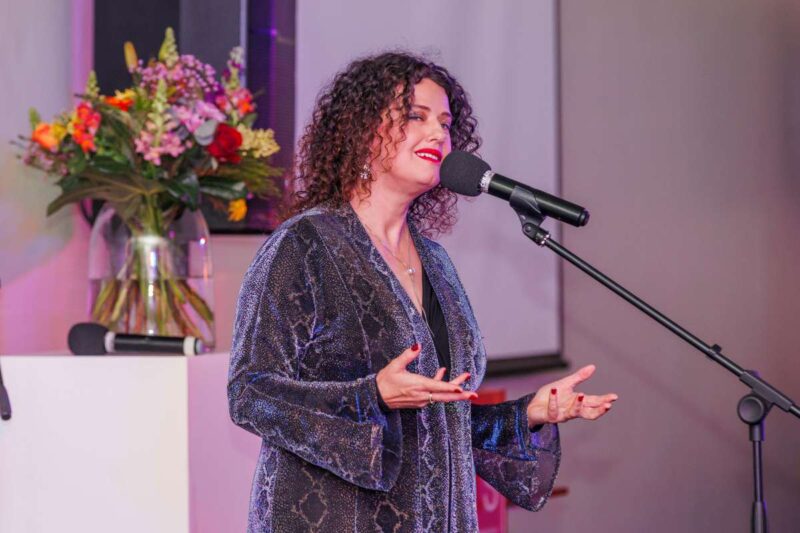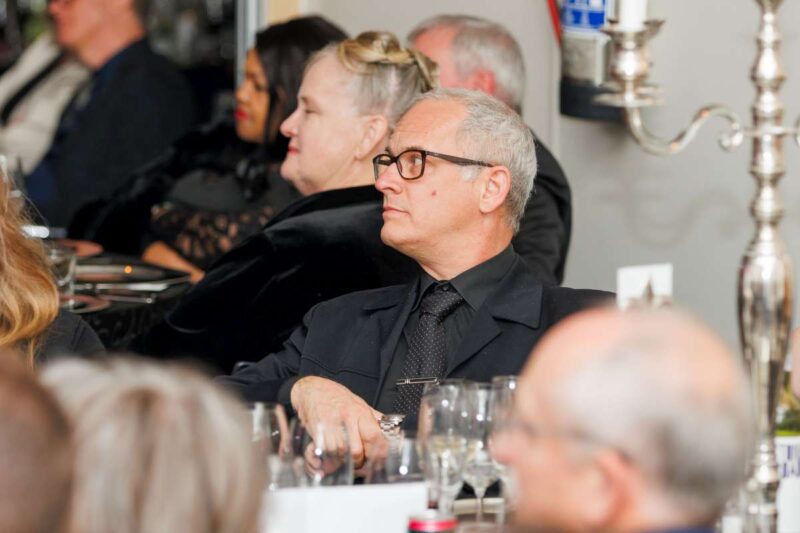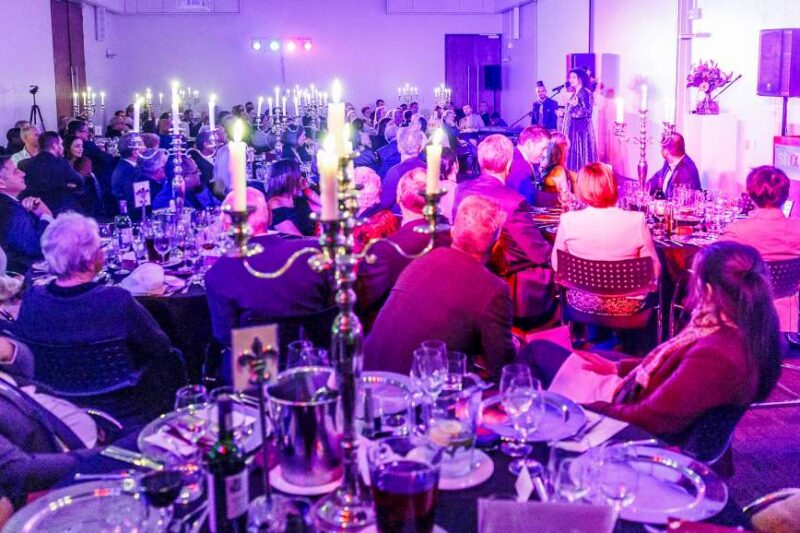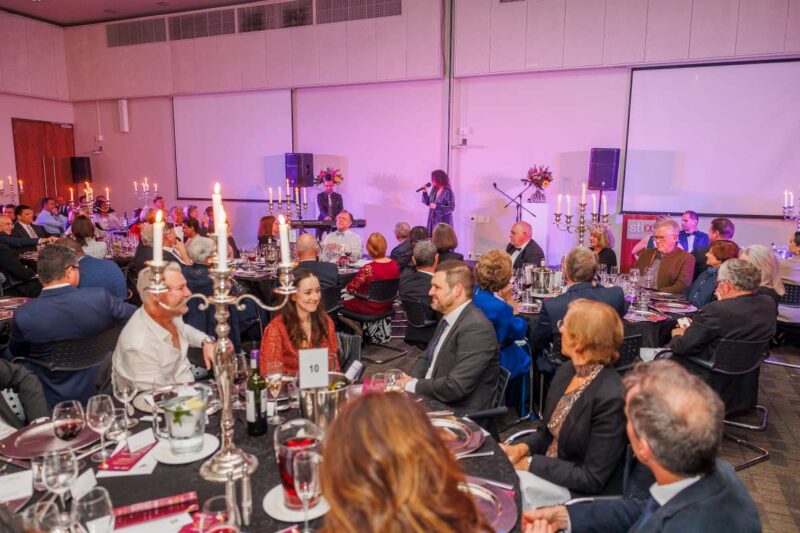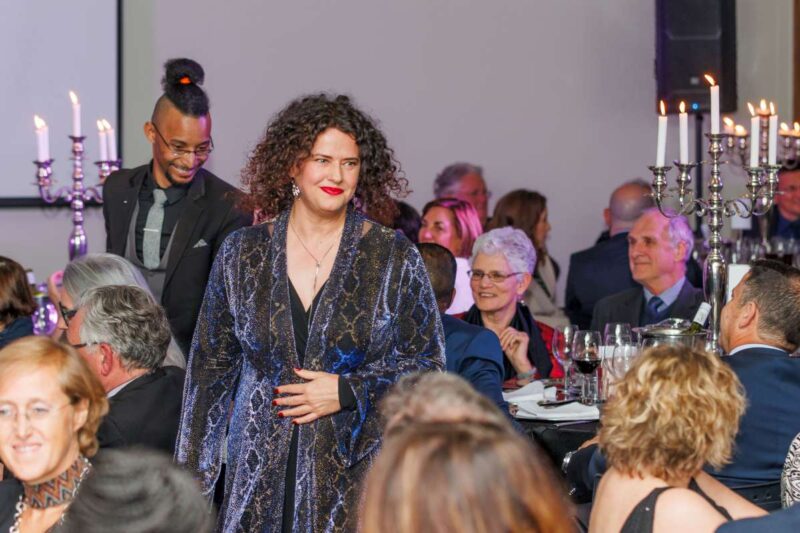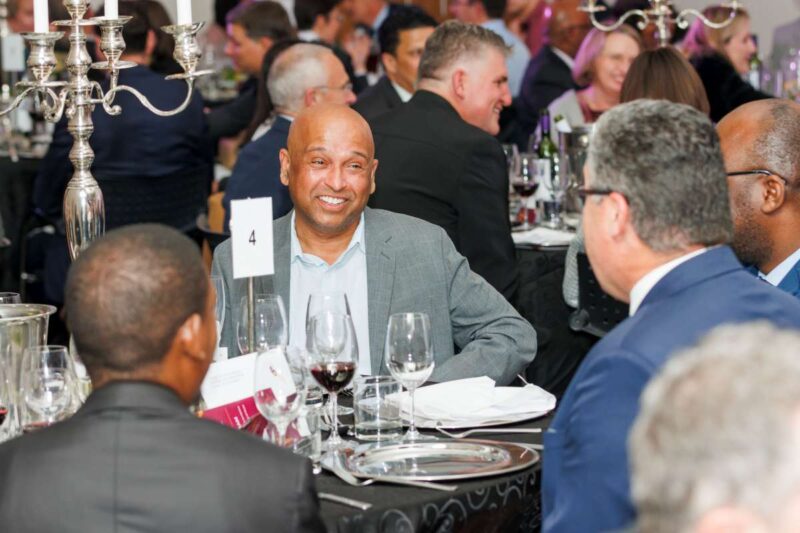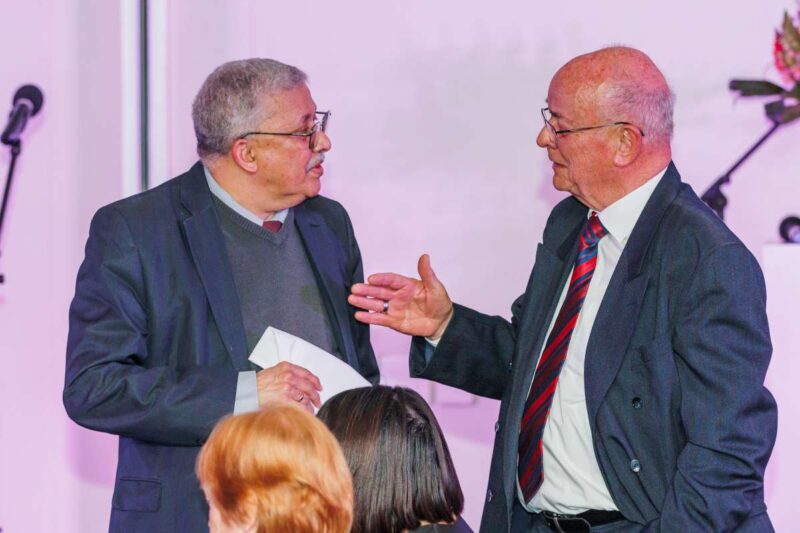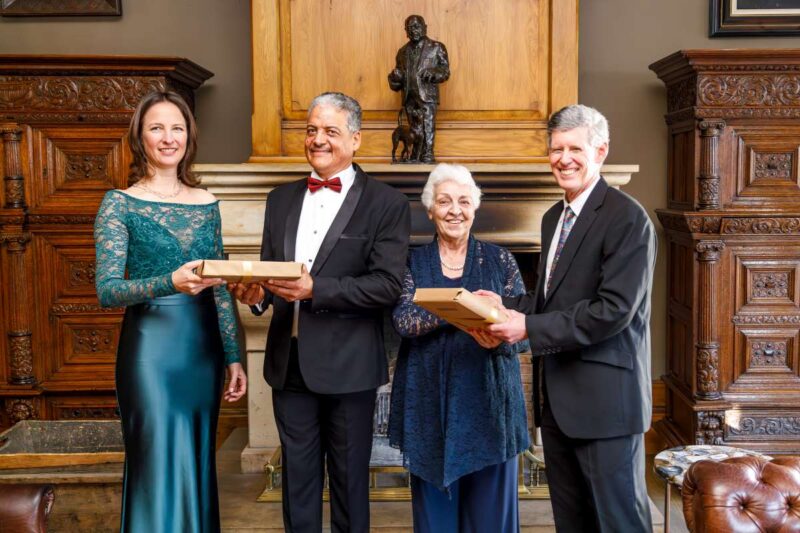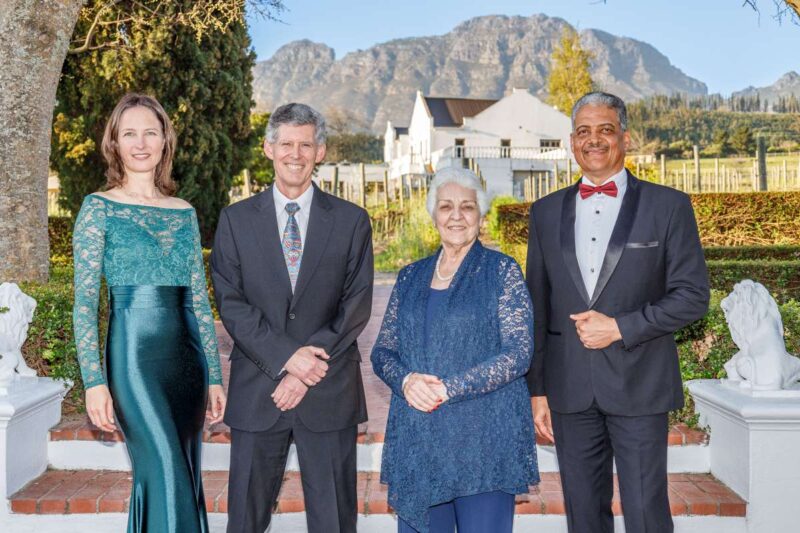
Stellenbosch University Faculty of Engineering
80 years of Excellence
Some History
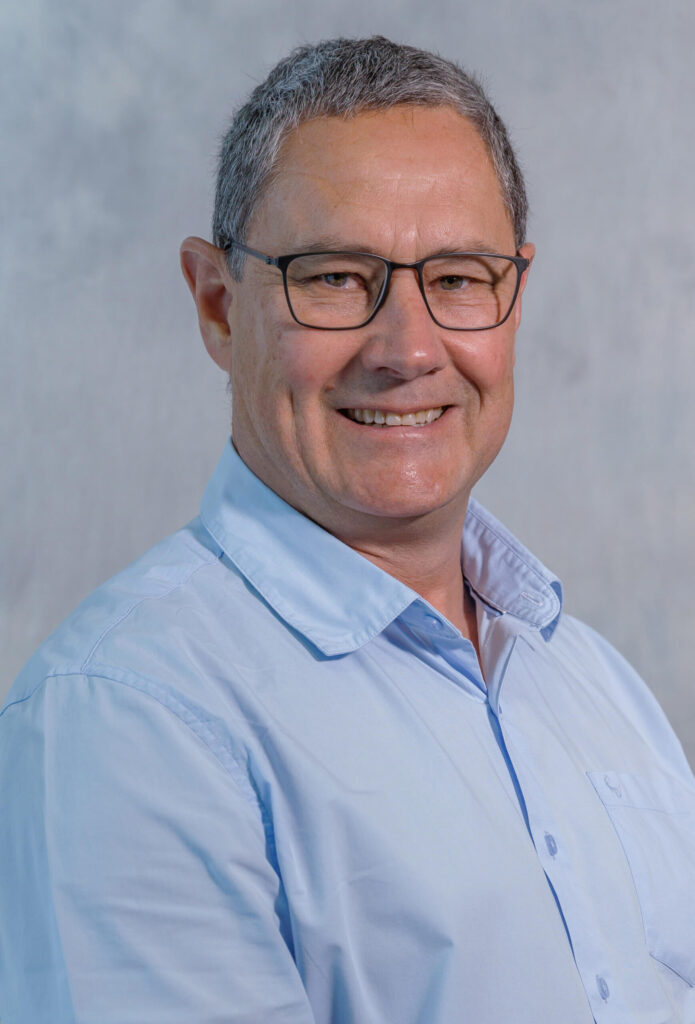
Prof Wikus van Niekerk, Dean of the Faculty
The Faculty of Engineering at Stellenbosch University is celebrating its 80th birthday this year – a huge milestone in the history of the Faculty.Starting as a small Afrikaans-only department within the Faculty of Mathematics and Physical Science in 1941, with 42 first-year students, and staff consisting of one professor (Prof HL Reitz), and two senior lecturers (Dr RL Straszacker and Dr JM le Roux), the Faculty has grown into a fully-fledged, multi-racial, multi-lingual, and multi-cultural engineering faculty which is currently one of the largest faculties at Stellenbosch University, with over 4000 students and 300 staff.
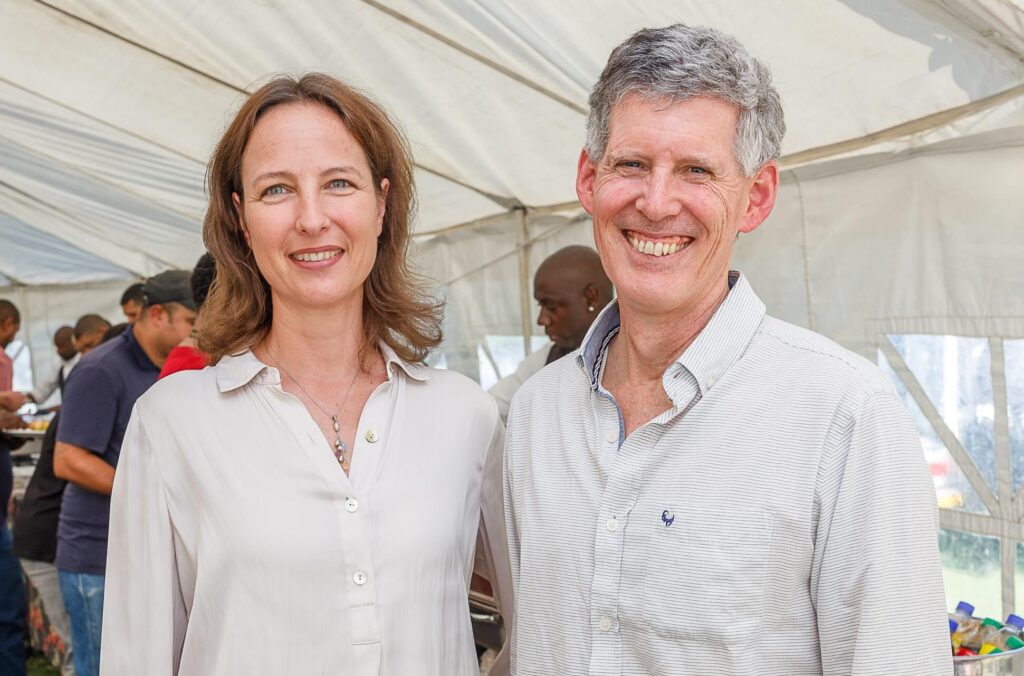
The two Acting Deans of the Faculty of Engineering in 2024
Prof Celeste Viljoen and Prof Petrie Meyer.
Over this time, the Faculty has weathered many storms, including a world war, huge political upheavals, sanctions, a water crisis, COVID, and most recently, an electricity crisis – all of which have contributed to shaping the Faculty into its present form as one of the leading research-intensive engineering faculties on the African continent.
The early years
While engineering subjects were already introduced into the BSc degree in 1941, it was only in January 1944 that the Faculty of Engineering was formally constituted, with a five-year BScEng degree in civil, mechanical or electrotechnical engineering. Students could, however, transition their earlier BSc modules to the new degree programmes, and the first 16 Stellenbosch engineers graduated in December 1945 – six each in mechanical and civil engineering and four in electrotechnical engineering. This was an enormous milestone – the first engineers from an Afrikaans-speaking university, fully taught in Afrikaans.
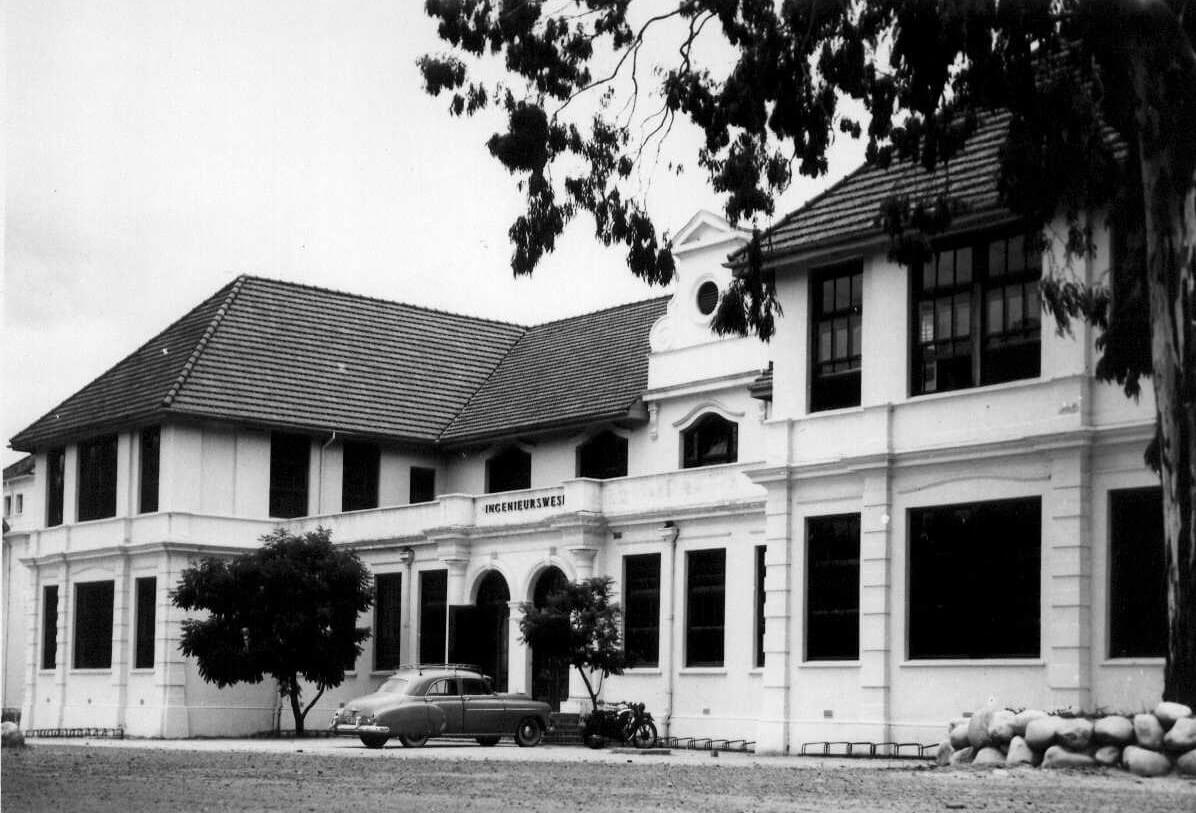
The first building of the Faculty of Engineering in Victoria Street
Over the next two decades, the South African government launched and expanded a number of large industrial initiatives to support economic growth in the country, and as the demands for engineers grew, the Faculty grew by leaps and bounds. In 1961, the Department of Agricultural Engineering was created which would later develop into the Faculty of Agrisciences, and in 1969, a department of Chemical Engineering was established at the Faculty of Engineering.
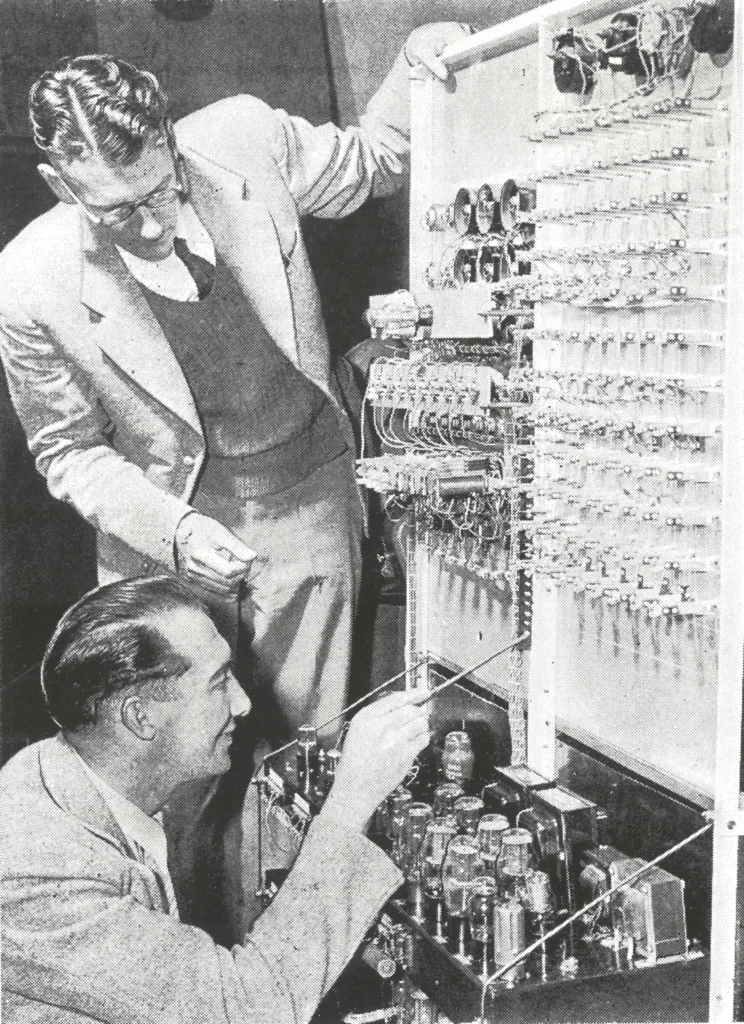
Prof Olien and the first analogue computer in Africa
During this period the Faculty established itself as an environment for excellent teaching, supported by strong interaction with the local industry. These aspects still remain two of the most important pillars of the Faculty today and have indeed grown significantly in importance in the last decade.
While the research landscape in this era looked completely different from that we see today, and the emphasis was very much on the development of a strong cohort of engineers for the South African development needs, the Faculty also played a significant role in the development of the newest technologies of the time. One of the highlights of this period was undoubtedly the design and construction of the first analogue computer on the African continent, developed by Prof CL Olien in 1950. This was the first of many achievements in the very new, rapidly developing field of computers and software, which has since never stopped.
Another new technology in which the Faculty did pioneering work was that of hydrogen as an alternative fuel. Work on this exciting new technology was already under way in the late 70s, where a fully working hydrogen facility was created in the laboratories of the newly established Chemical Engineering department. In recent years, this area of research has of course become hugely important, and the Faculty is again playing a leading role in the country, via a fully funded SARCHI chair and a special strategic fund programme.
Throughout the post-war decades and building on the extensive mineral resources of the country, South Africa was establishing itself as a mining country. The Faculty supported this wholly with pioneering work in extractive metallurgy, especially in the gold industry. This work has continued up to today, and African Rainbow Minerals recently started sponsoring a Research Chair.
This period also saw a strong focus on water supply, and the Faculty played a leading national role with establishing the largest pump capacity coastal and hydraulic laboratory in the Southern hemisphere, where large-scale models could be built and tested for dams across Africa.
The eighties and nineties
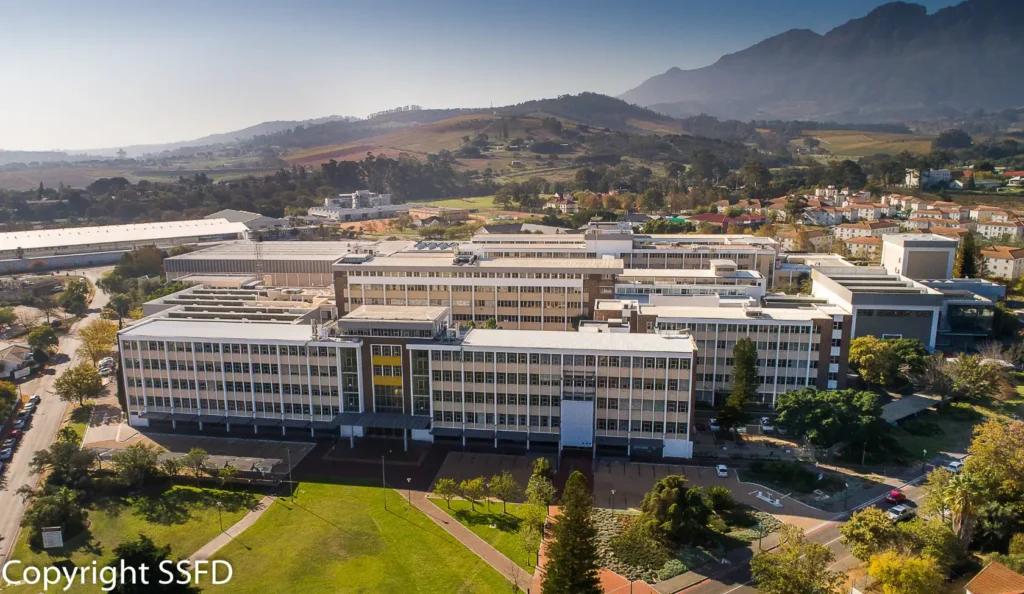
The engineering campus
As the first engineering building very quickly proved to be too small for the expanding faculty, a brandnew building was commissioned in the late 60s, in Banhoek Road. At that stage the building was designed for 1500 students – a number which seemed huge at the time. (No one could even imagine then, that in 2024, the Faculty would have a first-year enrolment of 1300 students!) On 1 May 1970, the first building of the current engineering campus was inaugurated, and in 1979, the last building, that of Chemical Engineering, was completed. The Faculty could therefore enter the last decades of the millennium in a brand-new building, which allowed substantial growth for staff and students.
This was fortunate, as the period turned out to be a very sharp and rapid transition of the Faculty from being primarily an institution for teaching, to one playing a leading role in research on a national and international stage. Our number of academics rated by the National Research Foundation started to grow rapidly, and substantial investments were made into reaching out to international academic institutions.
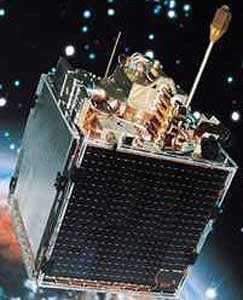
SUNSAT, the first satellite designed and built in the Southern hemisphere
Some of the highlights of this period was the creation and launching of the first satellite designed and built in the Southern hemisphere (called SUNSAT), the first usage of Artificial Intelligence in the control of chemical plants, pioneering work on the use of dry-cooling in power generation and the establishment of the Stellenbosch Techno Park.
Work on biofuels also received significant attention in this era, and one of the highlights was the establishment of one of the largest pilot plants for distillation at any university in the world.
To serve the expanding industry in the country, the road network became hugely important from the 70s onwards. To support this, the Facultydid groundbreaking work on pavement engineering, through successive industry-sponsored Research Chairs. This work would continue to expand, resulting in a brand-new pavement laboratory being built during the period 2010-2020.
This period was also marked by enormous political change in South Africa, culminating in the abolishment of Apartheid, and the first fully democratic elections in 1994. These political changes allowed Stellenbosch University and the Faculty of Engineering to transition from an Afrikaans-only Faculty to one which actively encourages enrolments of students from multiple cultural backgrounds and languages.
Recent Years
The first decade of the new millennium saw substantial changes in the Faculty. Following political changes, the Faculty initiated a comprehensive set of curriculum changes to allow students from all language groups to complete their BEng degrees in English, within a multi-lingual framework. The first year of all the programmes were changed to allow for language-specific groups, and as a first in the University, the Faculty introduced a programme of real-time interpreting in all other modules.
These changes resulted in the doubling of our student numbers in a period of roughly eight years, with the total number of students reaching 4000 in 2017, up from 1000 in 1997. In addition, the growth in Black, Coloured, Indian and Asian students have been consistent, and currently stands at 40% of the total student population.
During this period Stellenbosch University developed a new research-focused vision, and the Faculty actively expanded its research footprint. Currently, the Faculty collaborates with more than a hundred international partners, most of which are situated in Western Europe and Africa. In Europe our interaction, especially with the Germanic countries, developed substantially and institutions in the Netherlands, Belgium, Germany and the Scandinavian countries have become long-term partners.
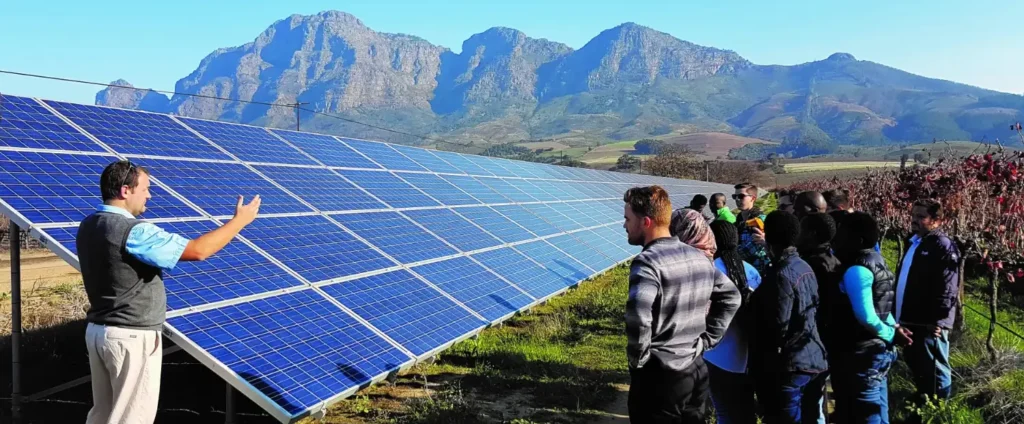
Photo-voltaic panels on the Stellenbosch University experimental site
In 2007, the Centre for Renewable and Sustainable Energy Studies was founded, with the current dean, Prof Wikus van Niekerk, as director. This was a significant step in positioning the Faculty in a leading position in the country’s energy environment, and became increasingly important as South Africa headed into decades of load-shedding, combined with international pressure to transition to green energy.
This period saw the participation and leadership of the Faculty in the creation of the largest radio-telescope in the world in the Northern Cape, the Square-Kilometre Array (or SKA), as well as groundbreaking work on bioproducts and waste management, the development of innovative research areas e.g. fire engineering and the 3D-printing of concrete structures, the introduction of machine-learning (or AI) into manufacturing and predictive maintenance, and the world of digital twins, as well as research programmes funded by companies such as BMW and Gibela.
Legacy and Future
Over the past 80 years, the Faculty of Engineering has played a leading role in the establishment and development of the discipline of engineering in South Africa. Graduates from the Faculty have spread across the world and have made significant contributions wherever they went. The Faculty has been home to a number of legendary academics whose efforts created the base on which we are still building. These include people such as Prof Christo Viljoen who was the driving force behind the creation of the Stellenbosch Techno Park, Profs Detlev Kröger and Fred Hugo who established the Faculty as a world leader in dry-cooling and road and pavement design respectively, Prof PW van der Walt who was instrumental in establishing the first commercial RADAR company in the country, and Prof Jan du Plessis who was the main driving force behind the SUNSAT programme.
Staff from the Faculty not only played leading roles in the Faculty and the local industry, but also in the broader University, starting with Prof Reitz who can, without a doubt, be viewed as the father of the Faculty.Three of the five deans that followed became SU vice-rectors, including the first dean, prof Roux de Villiers, and later onProfs Christo Viljoen and Arnold Schoonwinkel.
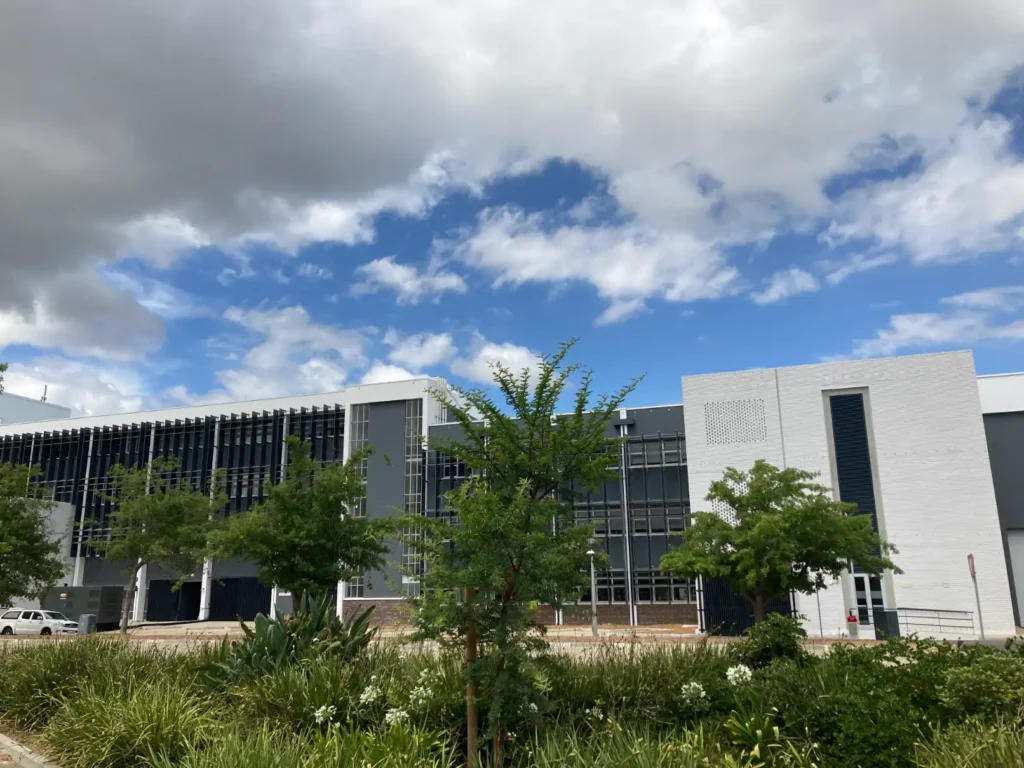
The new 2024 engineering building facade
While the future is impossible to predict, our 80th year sees the Faculty stronger than ever before. Both the number and the academic level of the 2024 first-year intake are at record highs, as are research outputs, international cooperation, and industry-sponsored research. Over each of the past three years, the Faculty has graduated the highest number of PhDs in the University. In three years’ time, the entire engineering campus will have been refurbished, resulting in being the most modern in the country, with the latest in research and teaching facilities.
A variety of new postgraduate programmes are either being rolled out, or are in process, to better serve the growing need for upskilling in the country, especially with a view towards the digital and AI revolution.
Due to the efforts of our staff of years gone by, and the current staff, the Faculty can build on its strong foundation to help shape a future for our country through the development of excellent young engineers, and sustained research for impact, to address the environmental and societal challenges we currently face.
We hope that the next 80 years will be as fruitful as the previous 80, indeed, even better!
Celebrations
Faculty hosts staff spit braai to celebrate its 80th anniversary
The Faculty of Engineering is celebrating its 80th anniversary this year. As part of the celebrations, a spit braai was held on the afternoon of Wednesday, 17 April 2024, where staff from all departments came together for a delightful event. The atmosphere was filled with excitement as everyone shared the joy of commemorating eight decades of engineering excellence while having the opportunity to connect and unwind. Prof Celeste Viljoen, Vice-Dean for Teaching and Quality Assurance and the Acting Dean, warmly welcomed everyone present and expressed her gratitude for the hard work and dedication of the faculty members, including support and academic staff, and acknowledging their contributions to the ongoing success of the Engineering Faculty.
Faculty of Engineering marks 80 years of excellence with anniversary gala
On 16 September 2024, the Faculty of Engineering at Stellenbosch University (SU) celebrated its 80th anniversary with a gala dinner held at the Wallenberg Conference Centre at STIAS. The event brought together esteemed guests, faculty members and industry partners for an evening of reflection and celebration, honouring the Faculty’s eight decades of excellence in engineering education and research.
(Read the full article here).
Visionary Leaders
As the Faculty of Engineering at Stellenbosch University celebrates its 80th anniversary, we reflect on the remarkable contributions of leaders who have shaped our institution over the past 40 years. These visionary individuals have not only advanced the frontiers of engineering but have also significantly impacted industry with their groundbreaking inventions.
Their pioneering work continues to inspire and drive progress, reinforcing our Faculty’s reputation as one of Stellenbosch University’s flagship faculties. Here, we proudly present a tribute to these extraordinary leaders and their game-changing contributions.
Share Your Story
In celebration of our 80th anniversary, we’re looking for stories from students, alumni, parents, faculty and staff, business owners, and community members – anyone who has been positively affected by the Faculty of Engineering.
Share a single experience, a testimonial, a fond memory, a story of a Faculty member who made an impact, or any other positive experience you had in connection with the Faculty.



